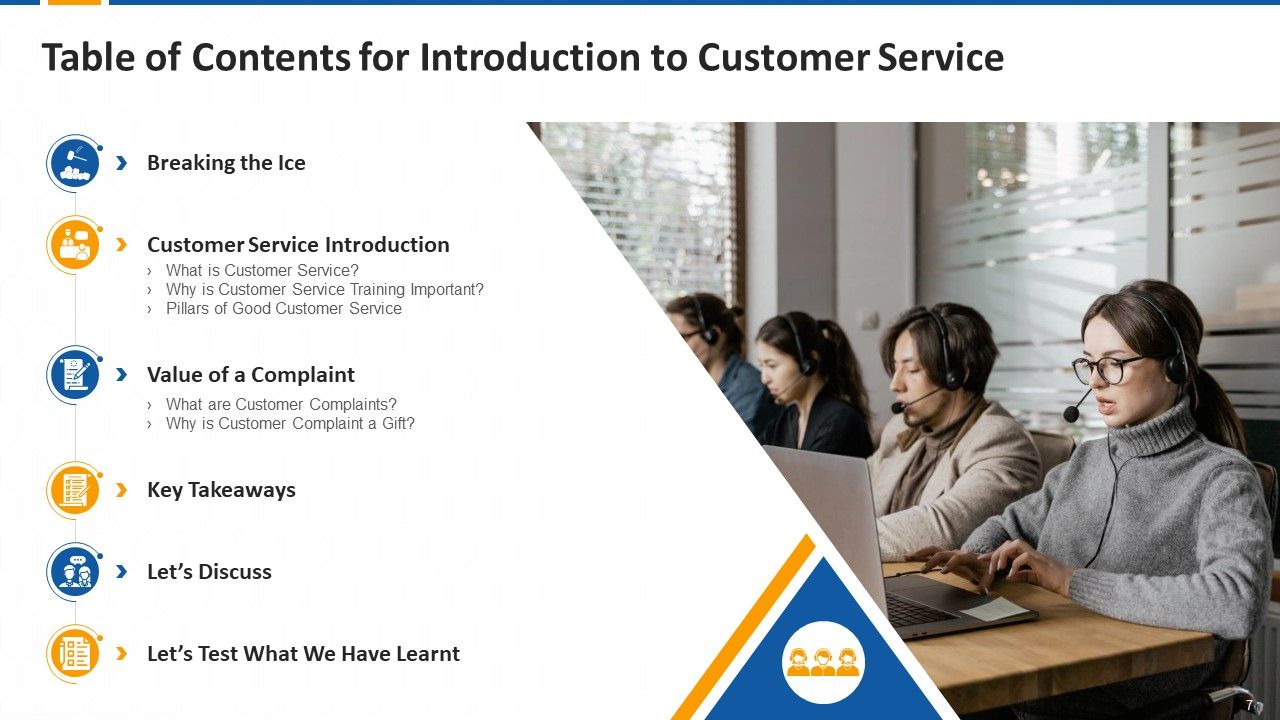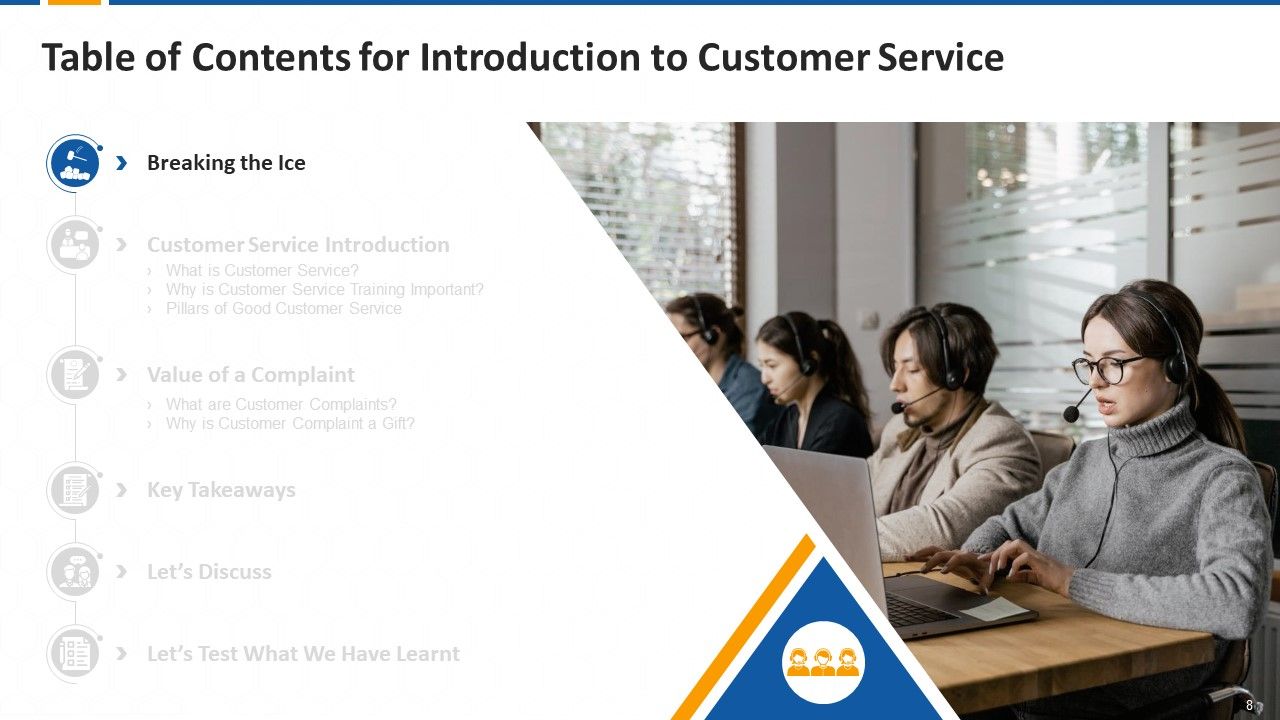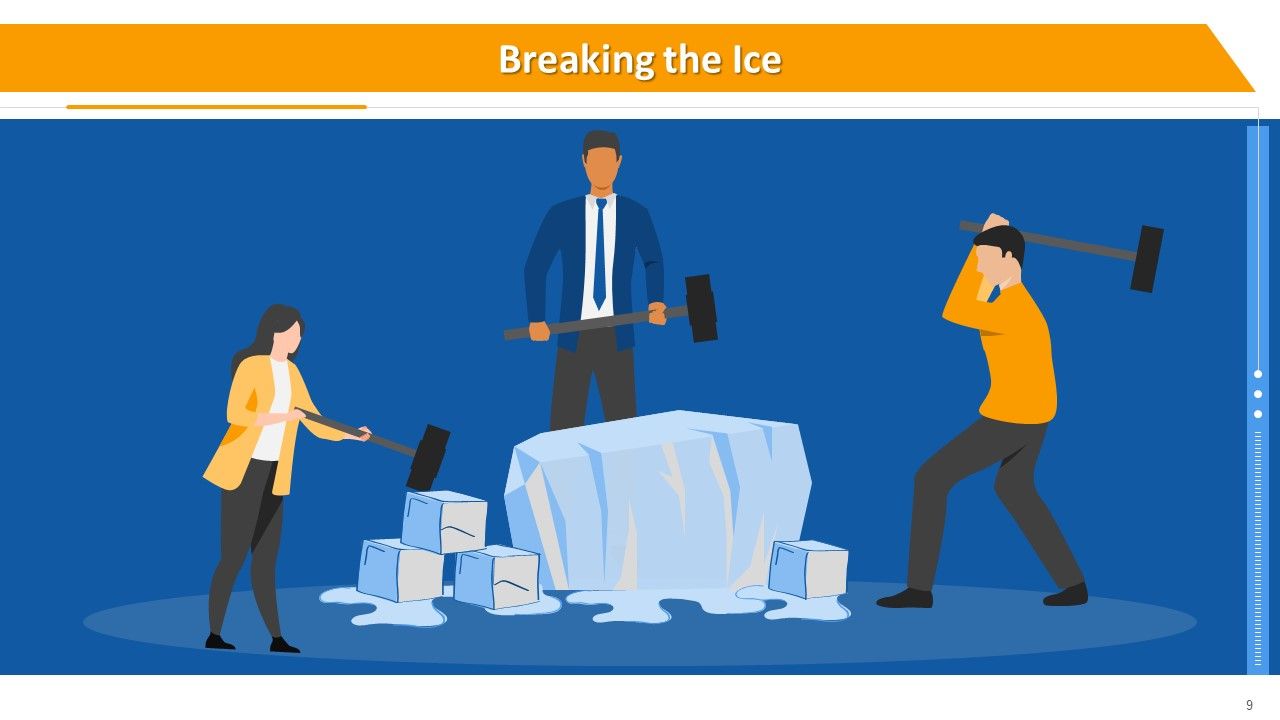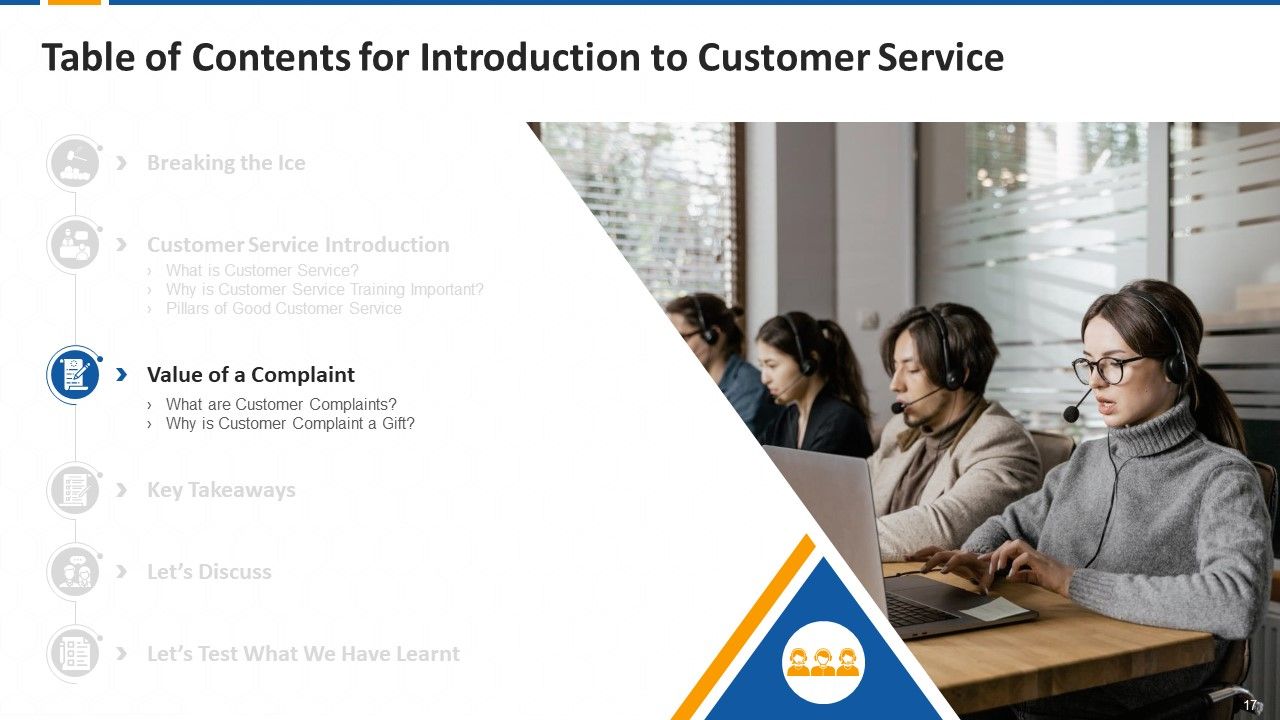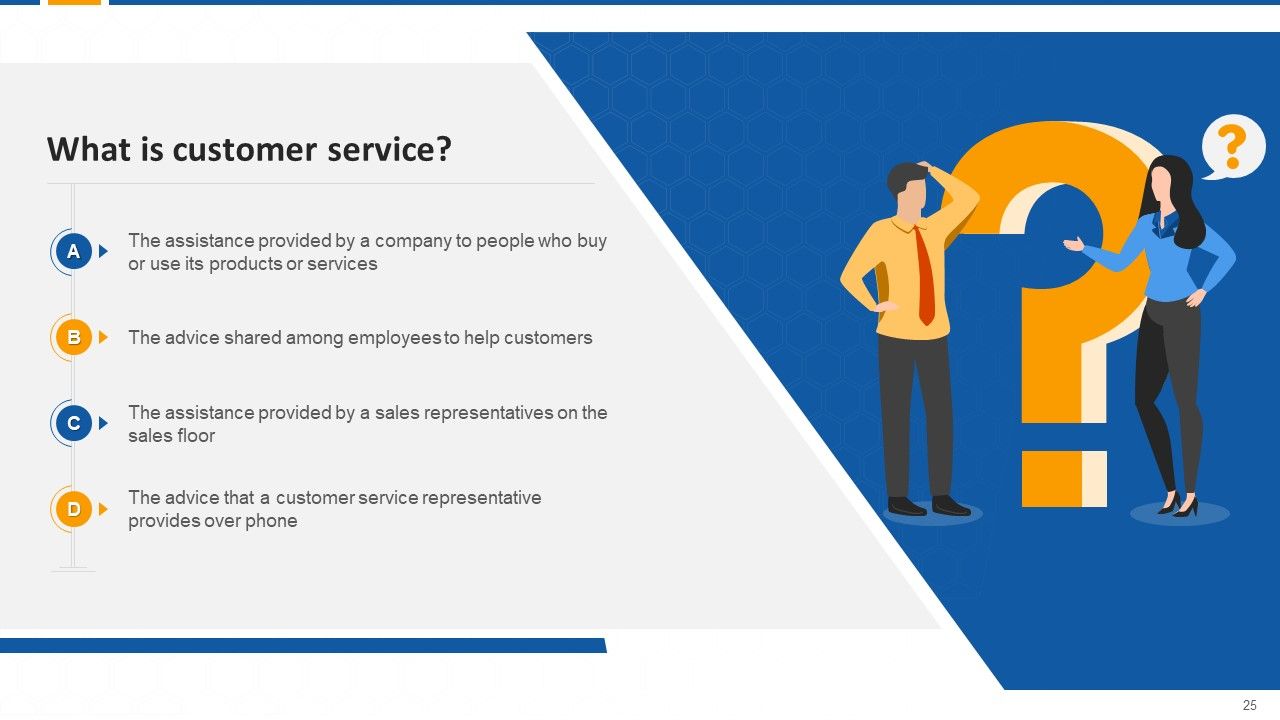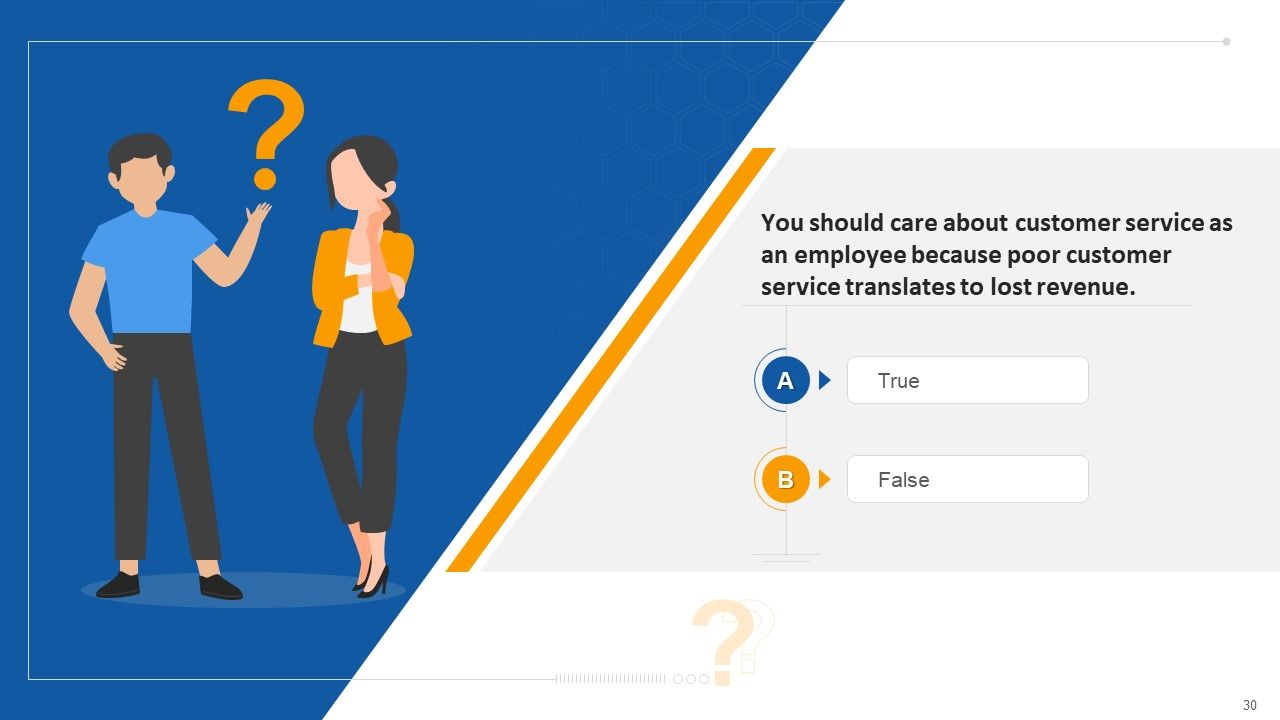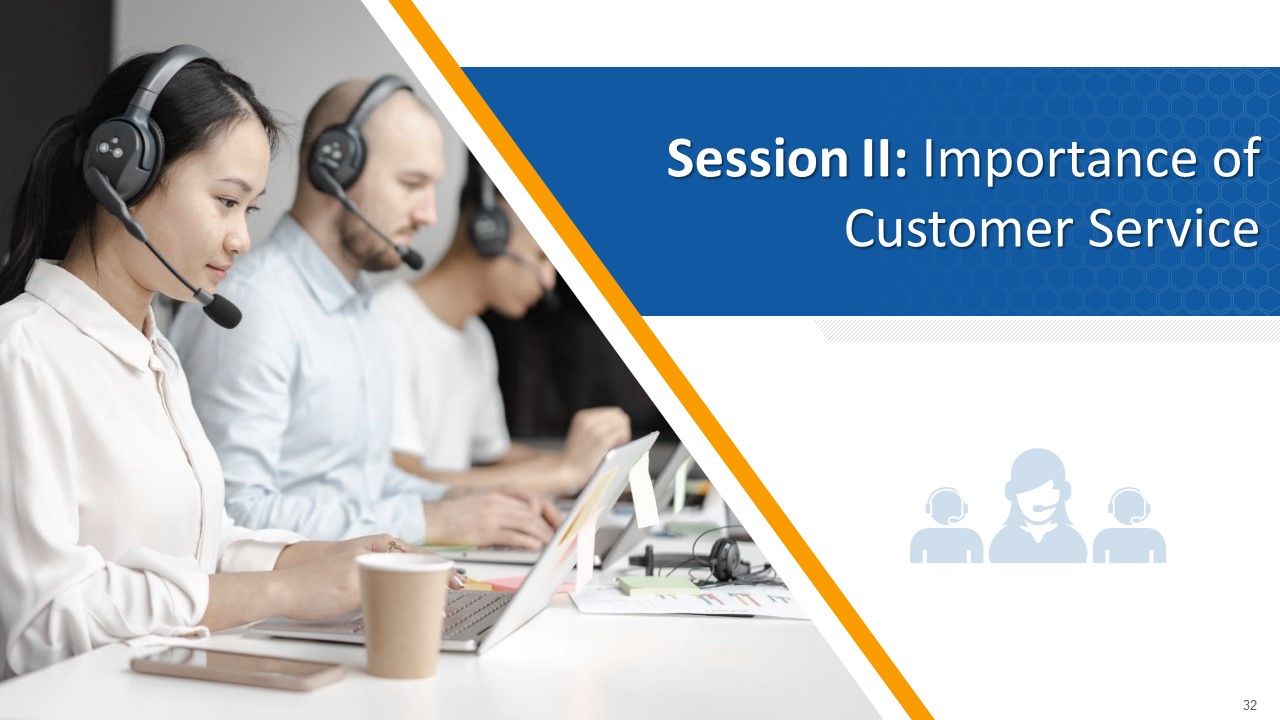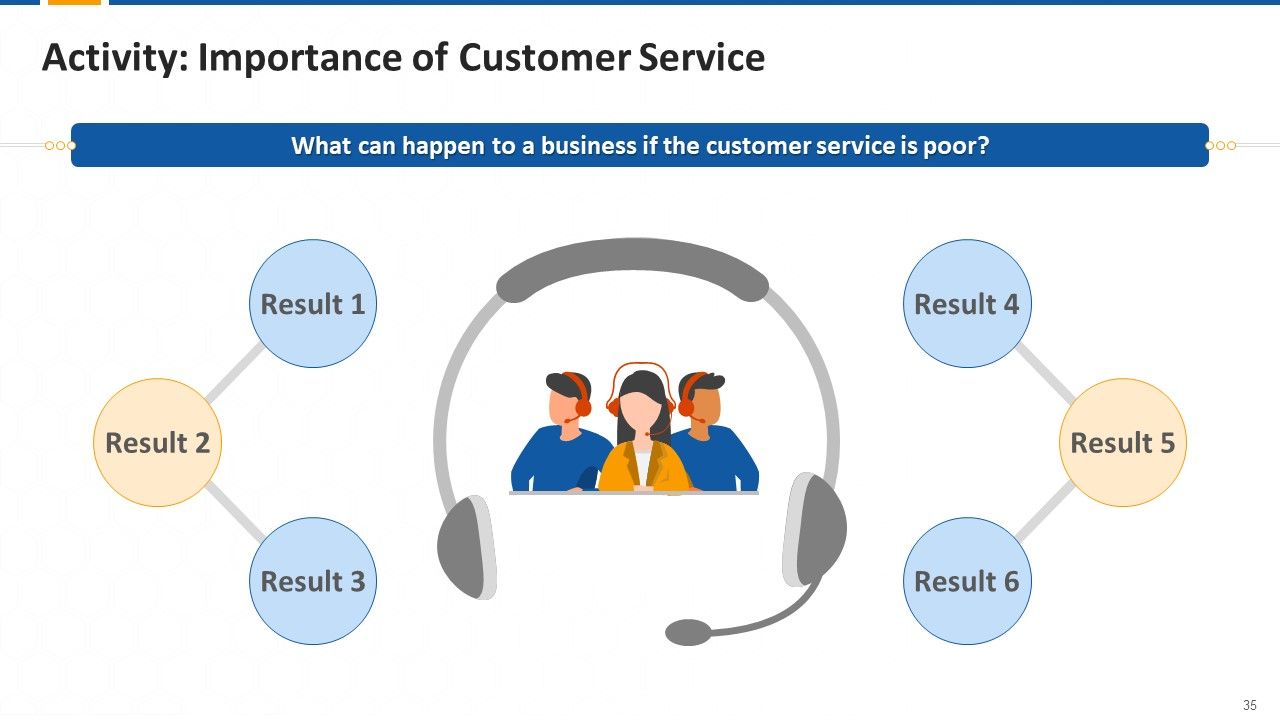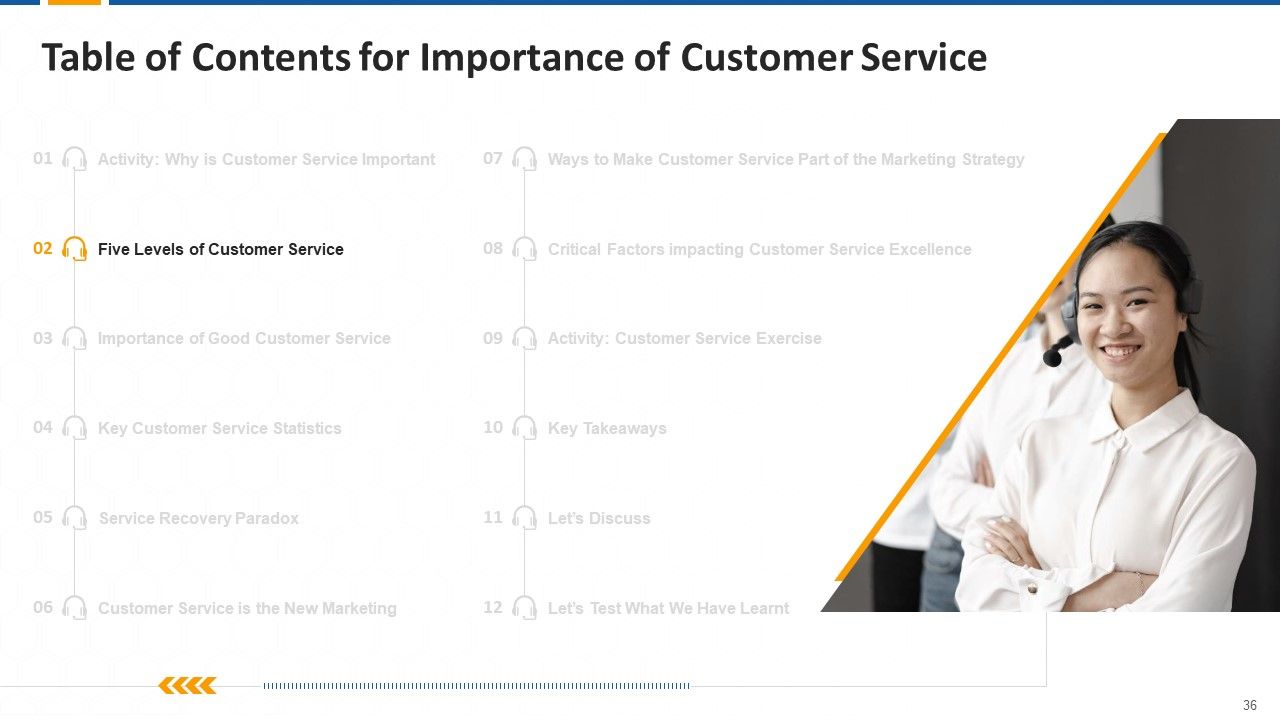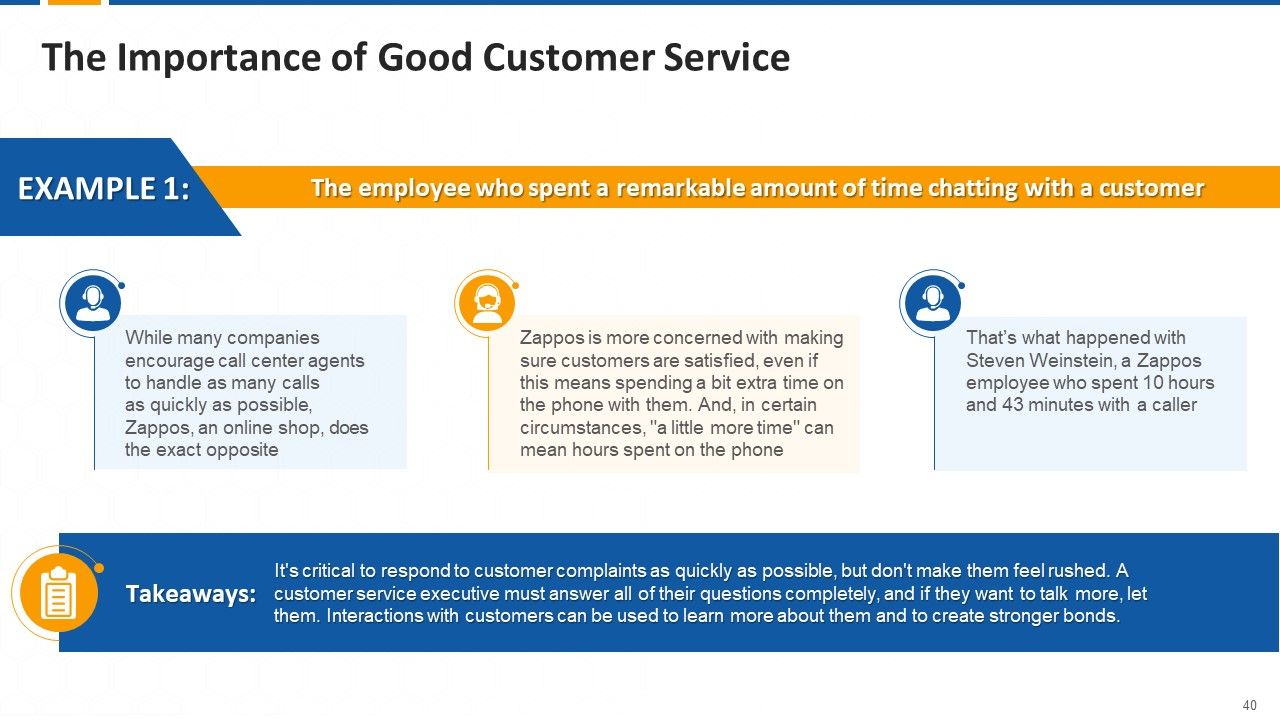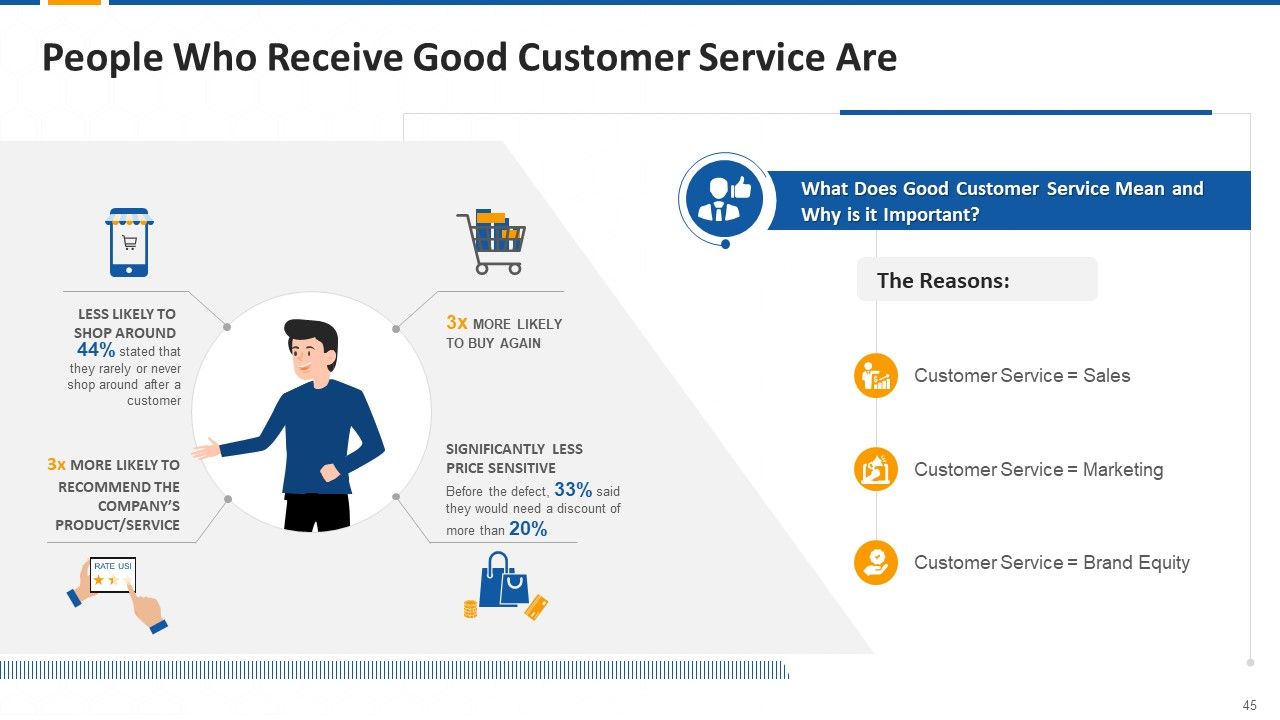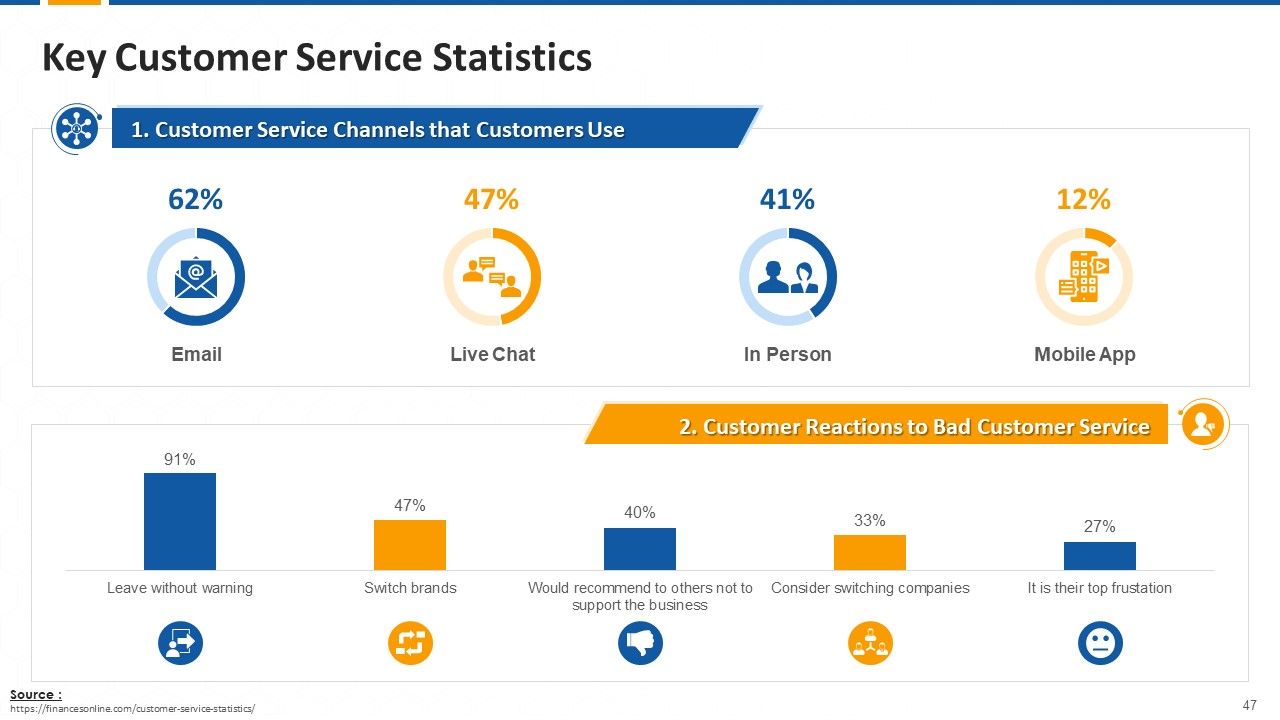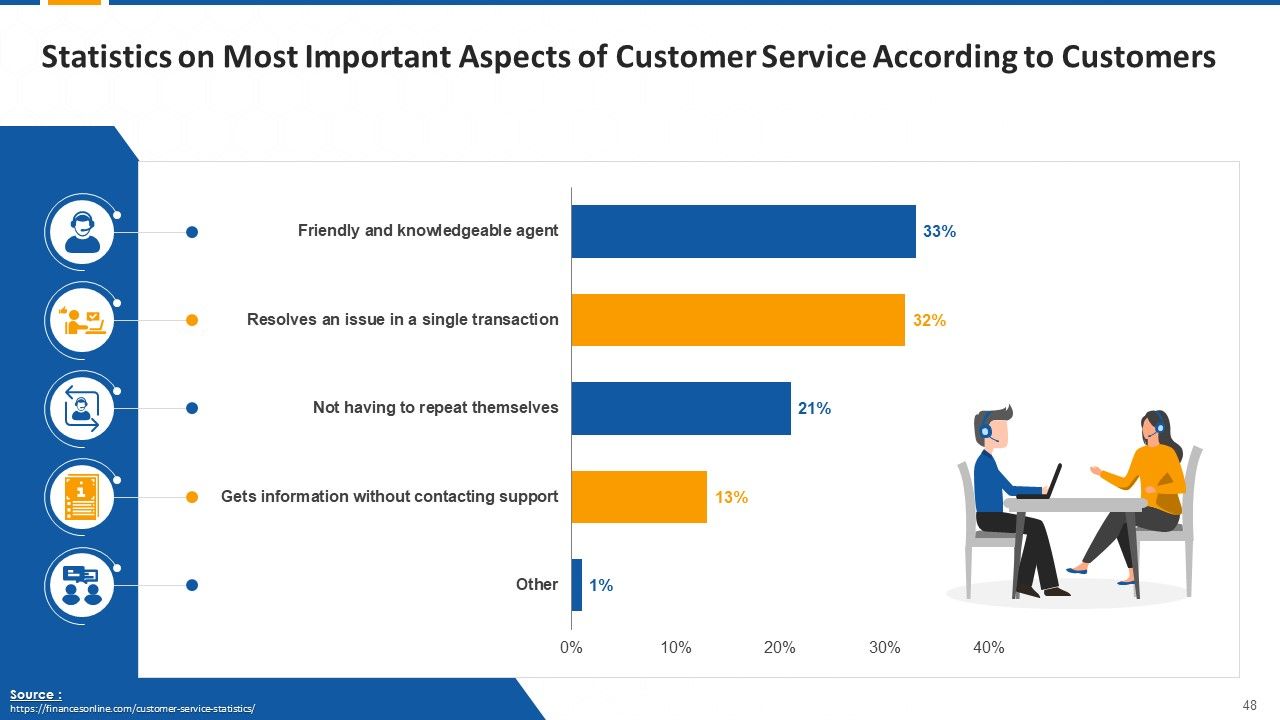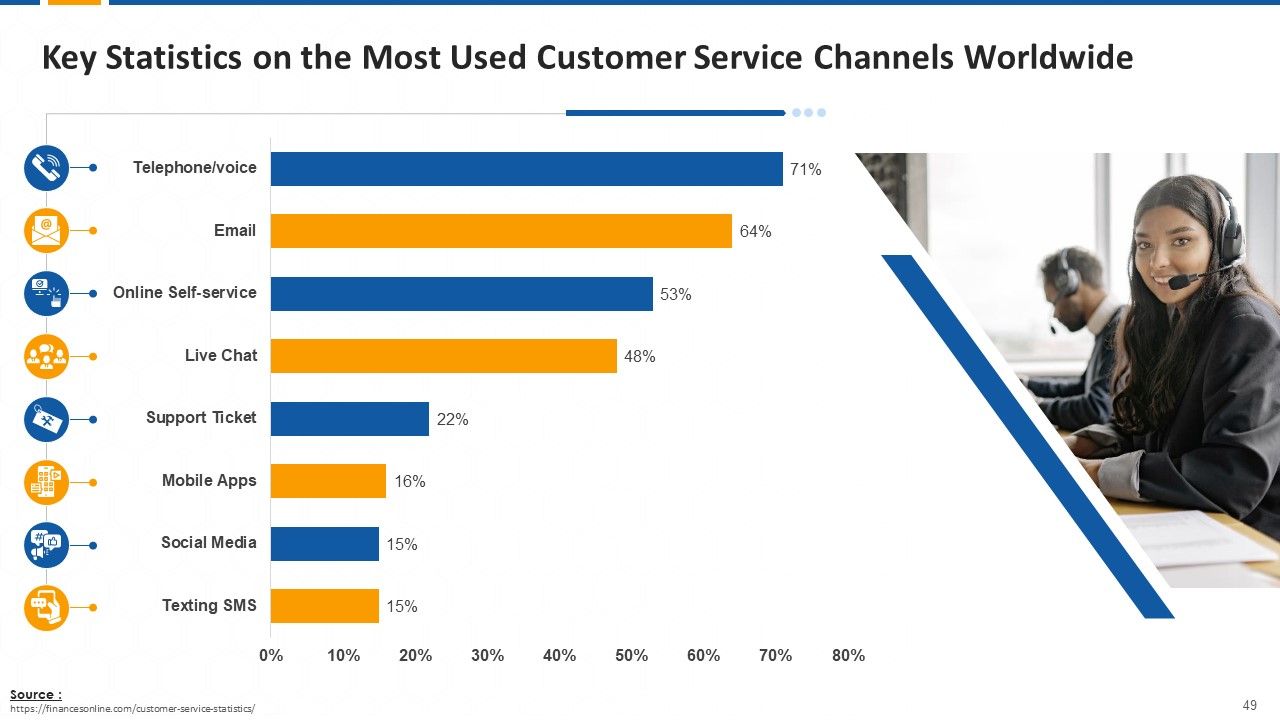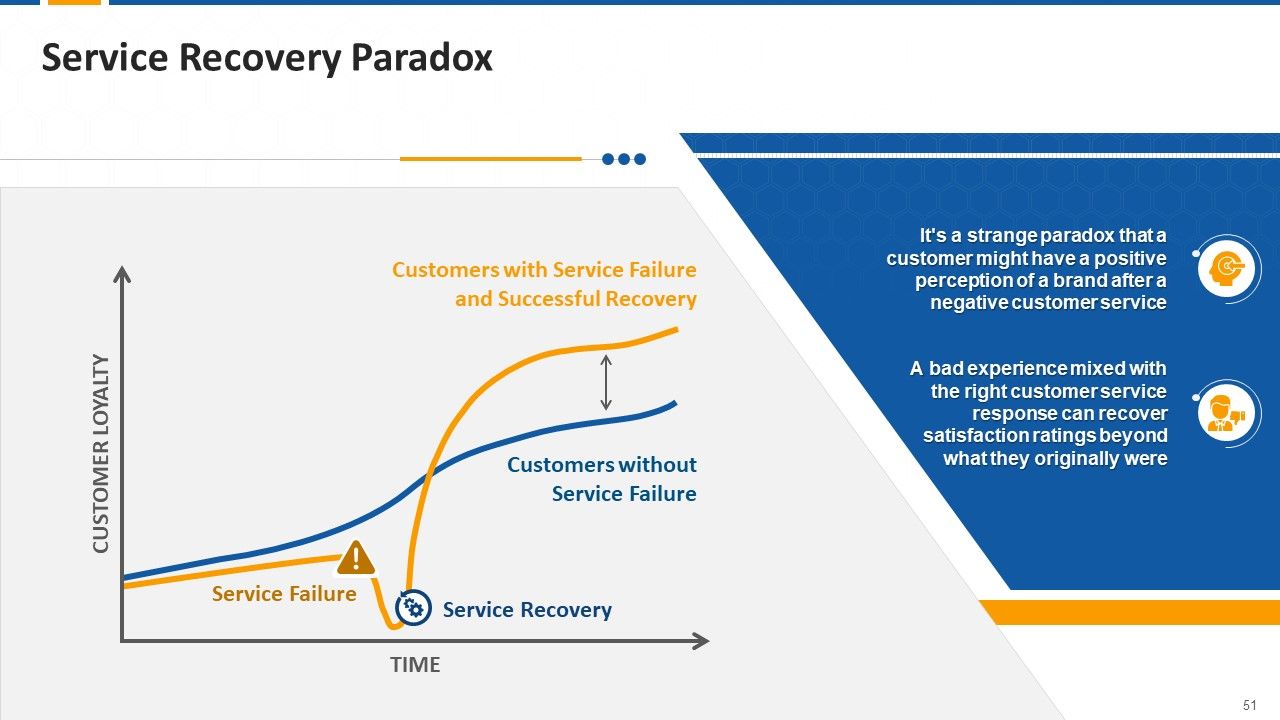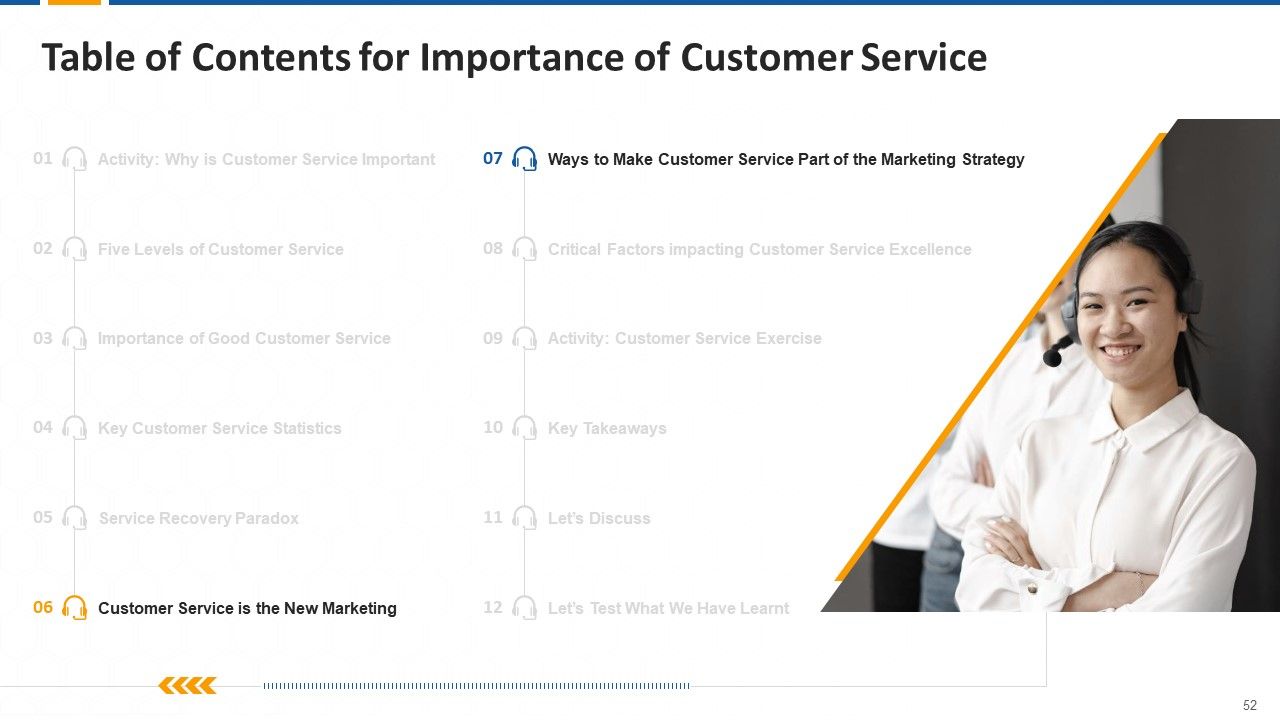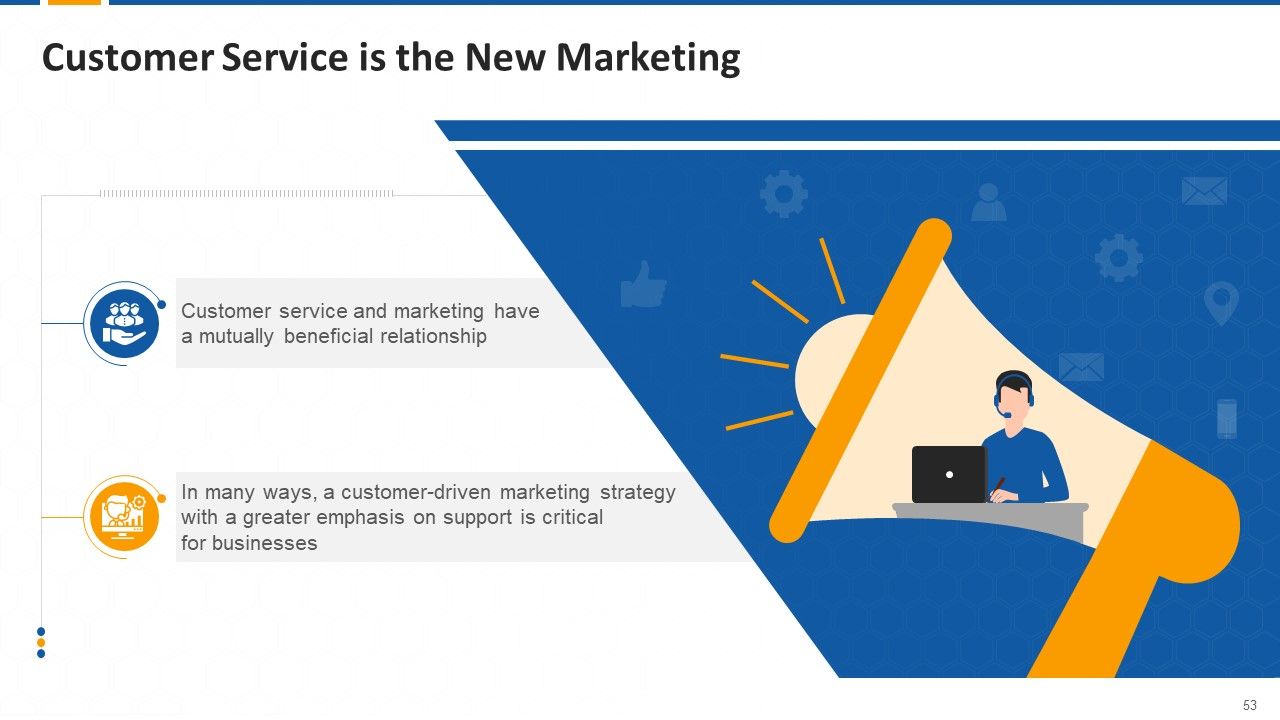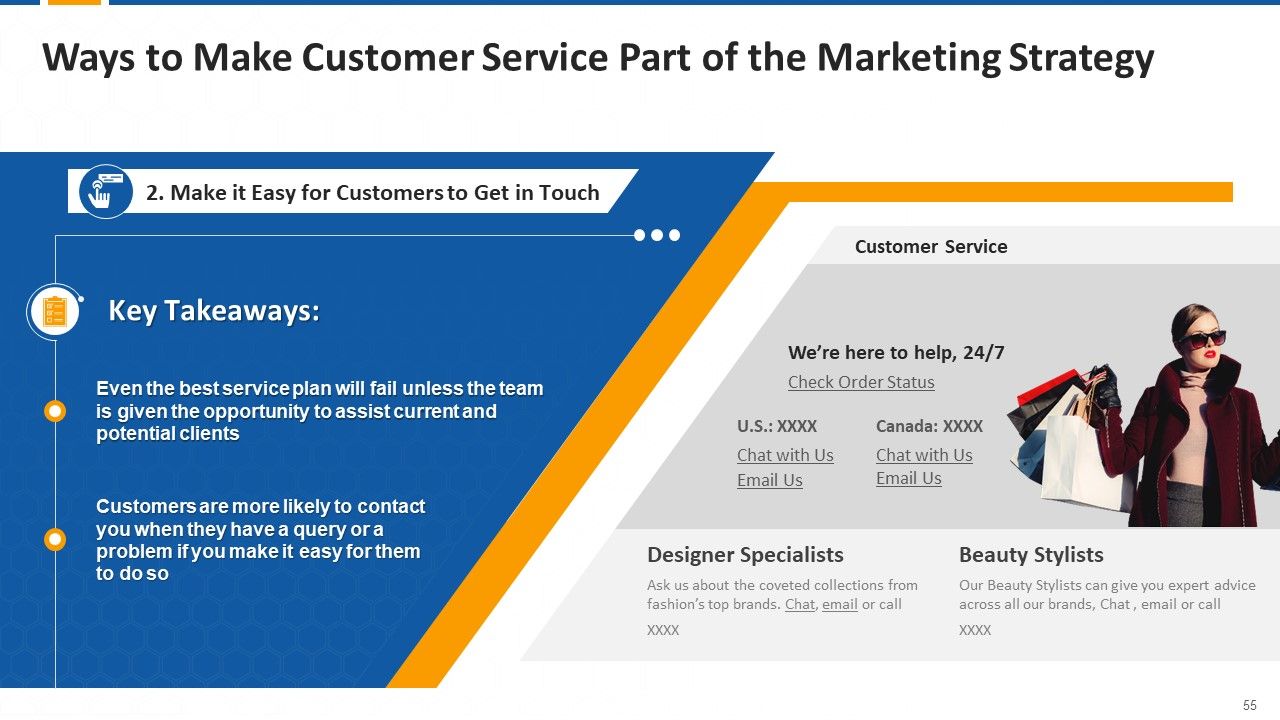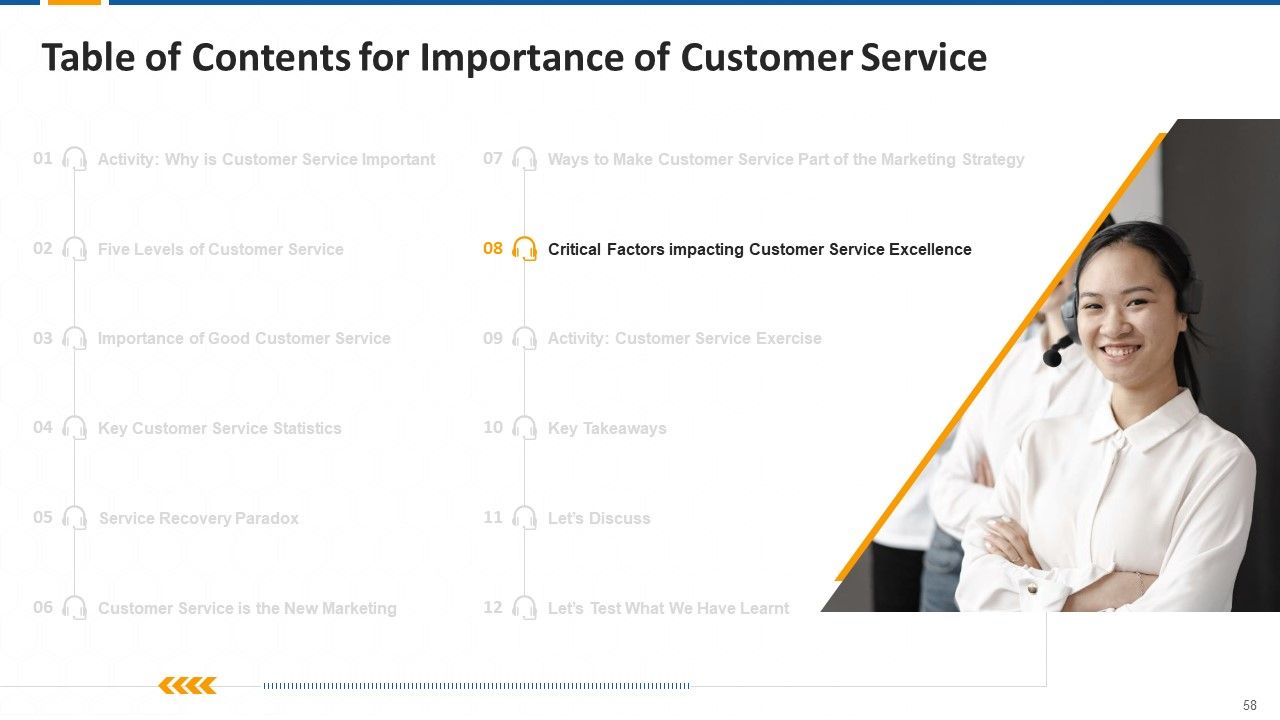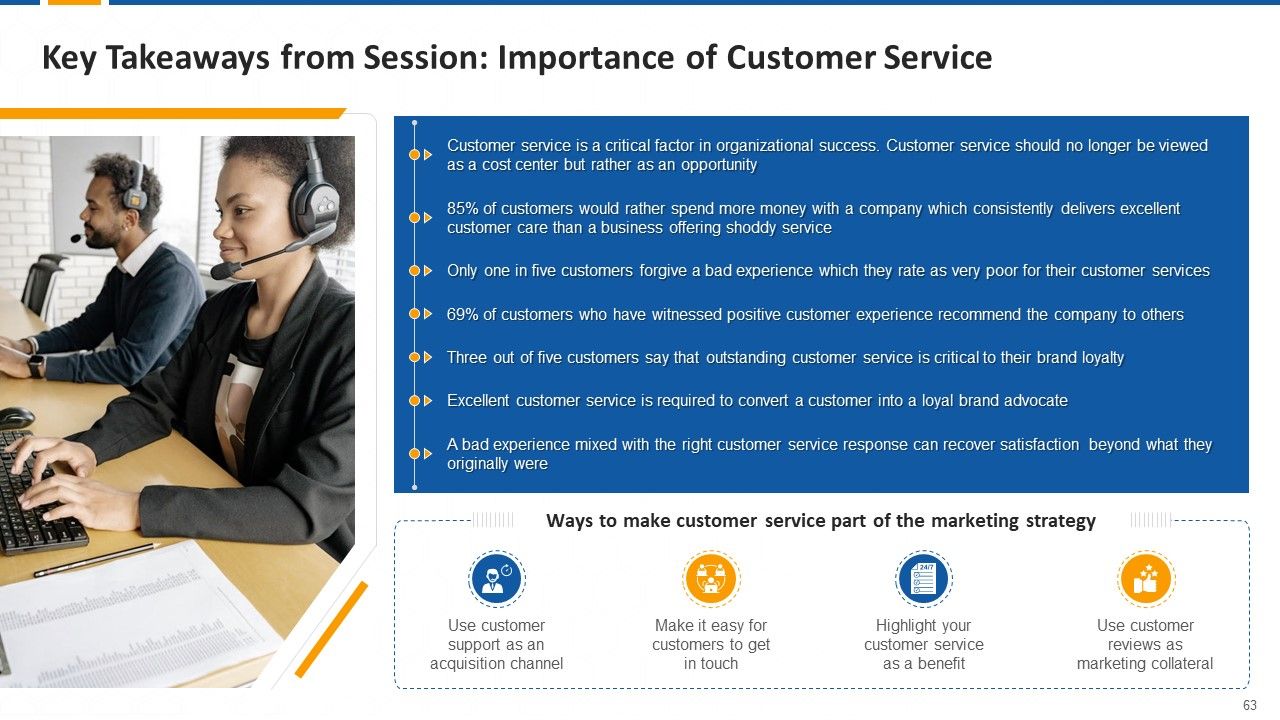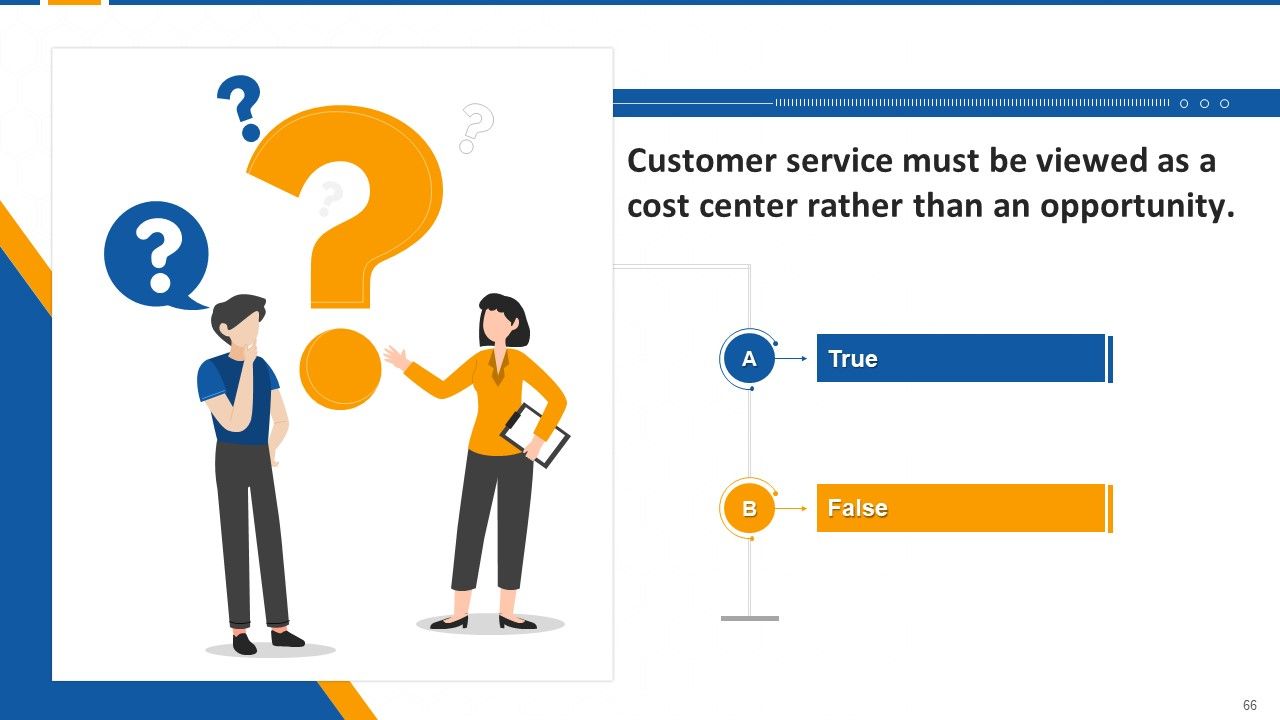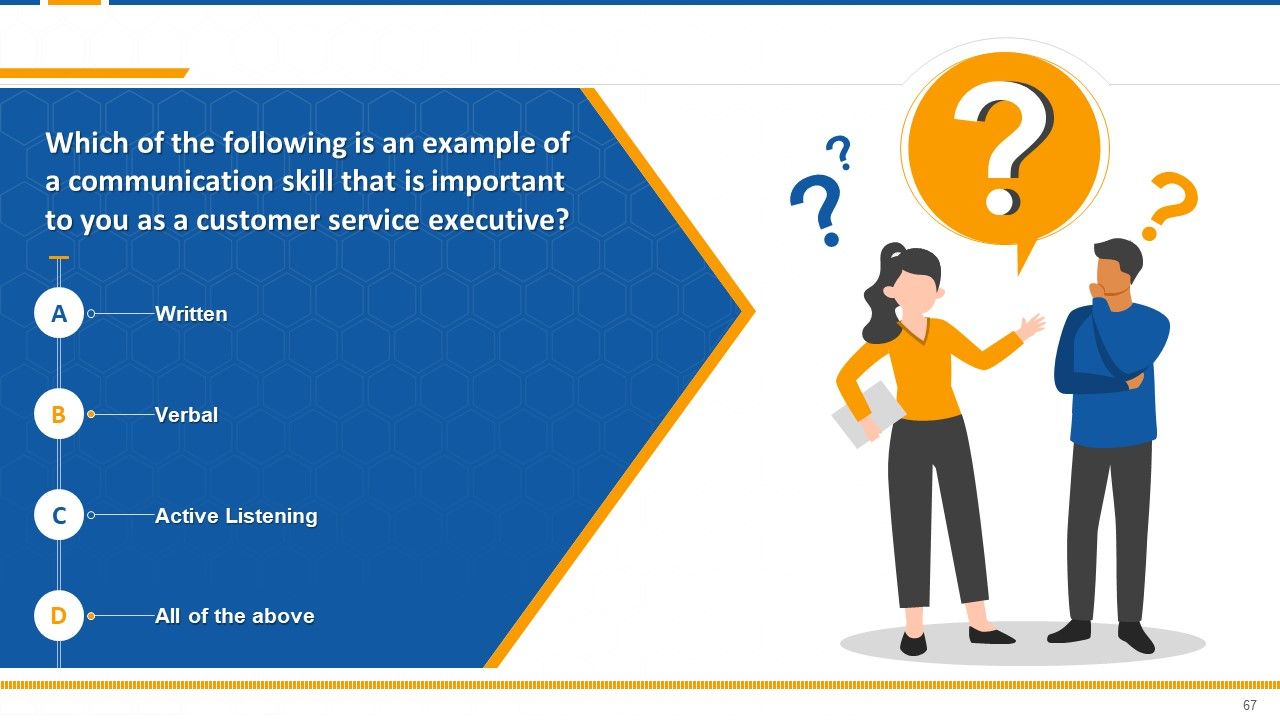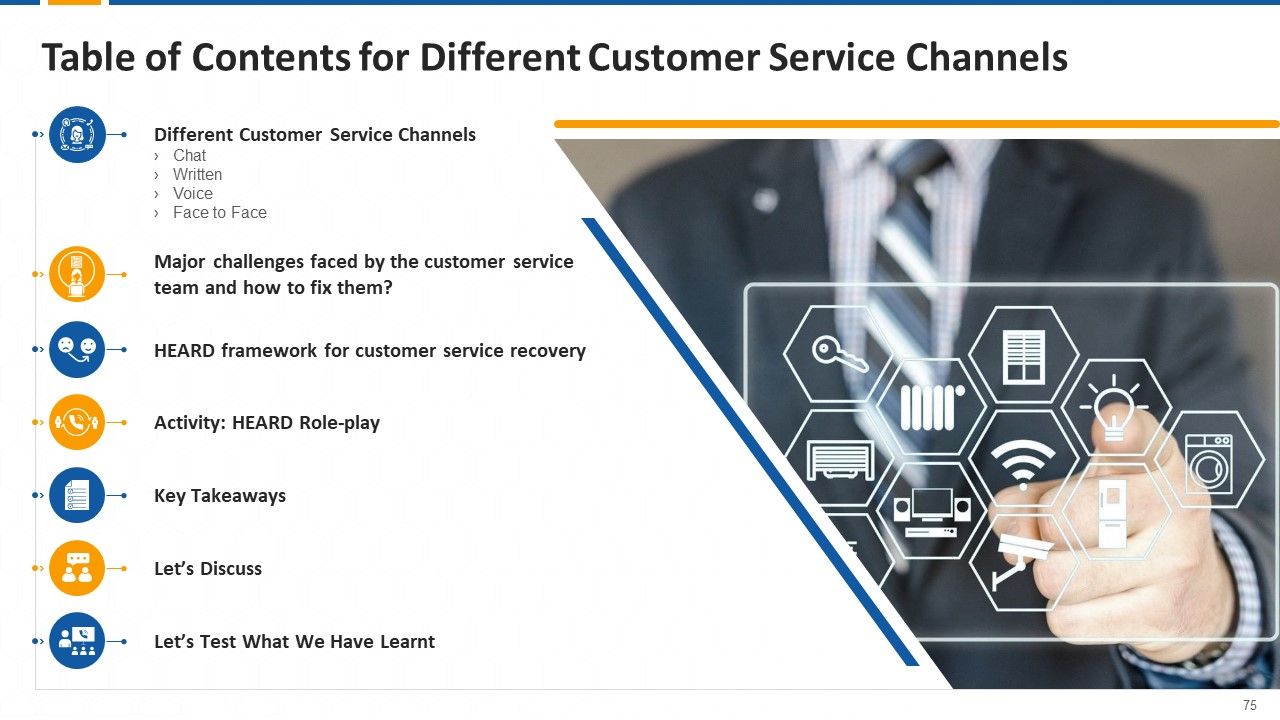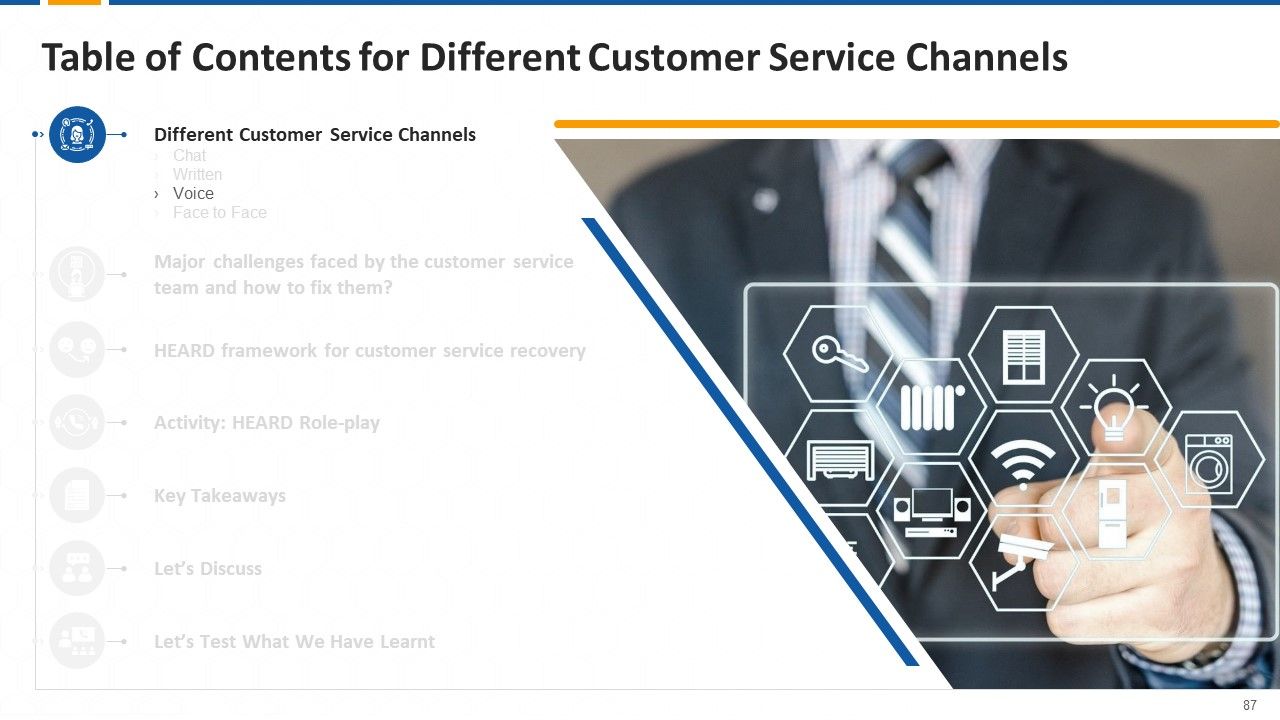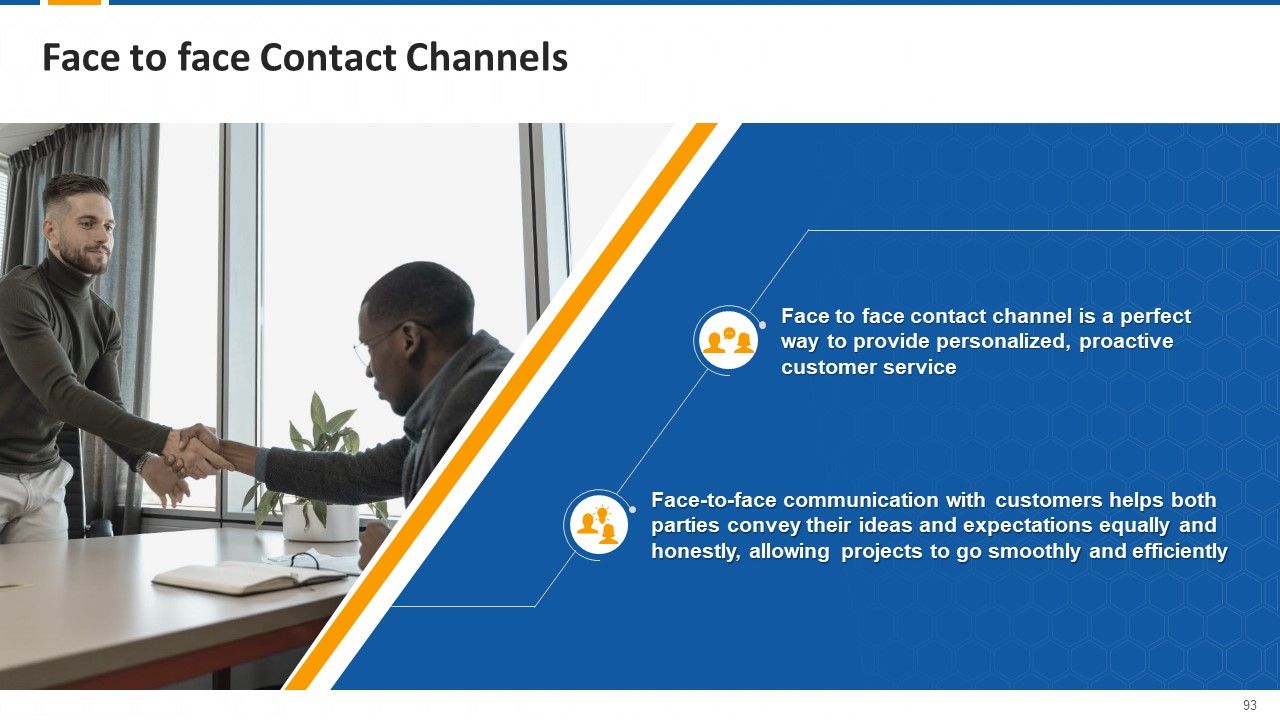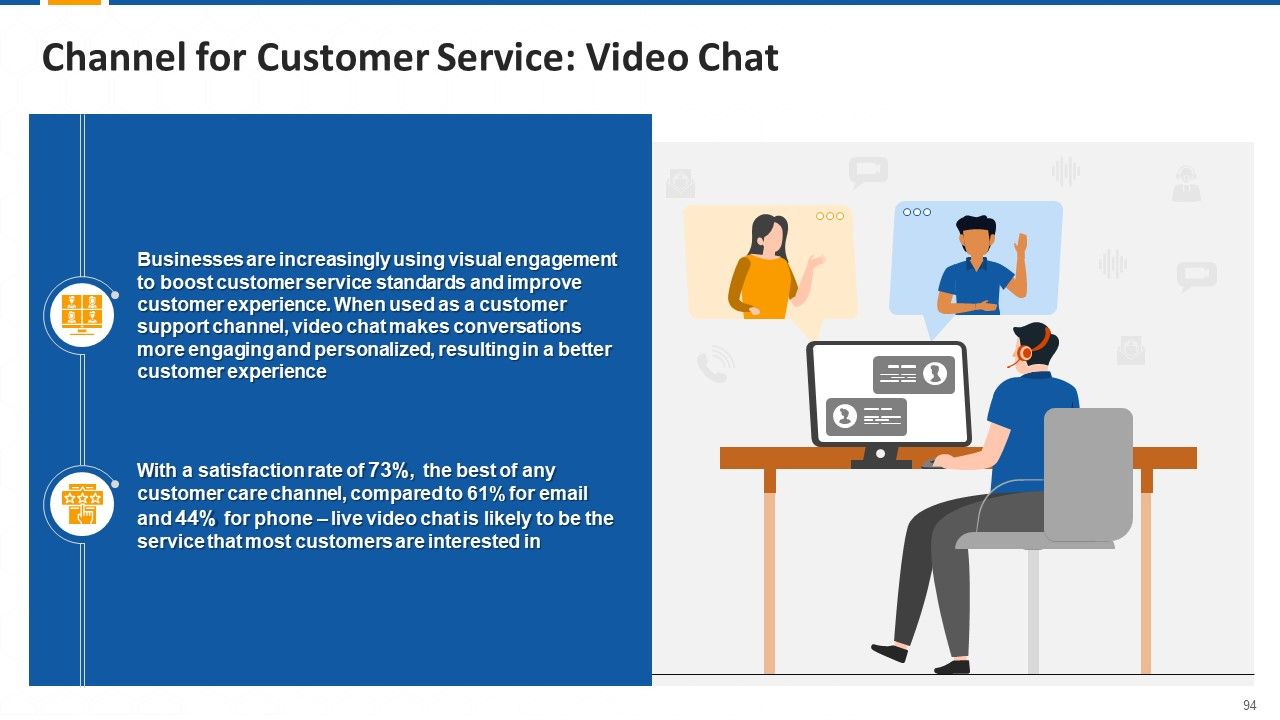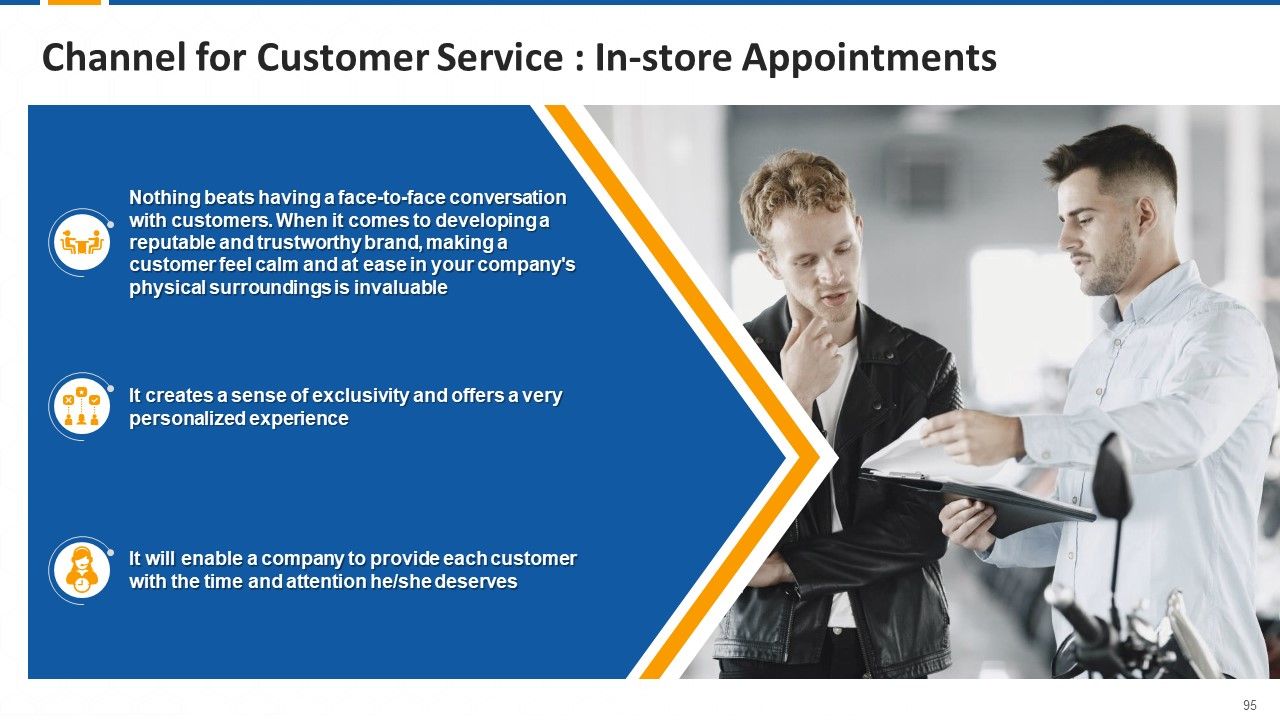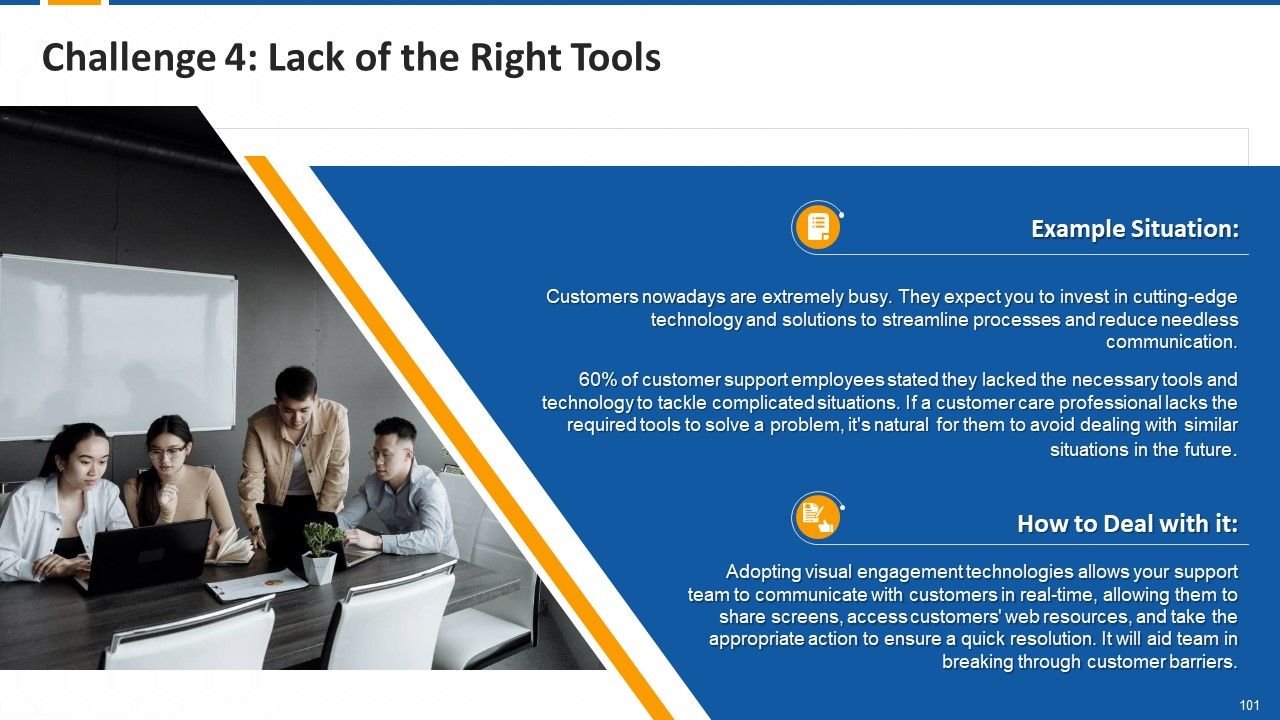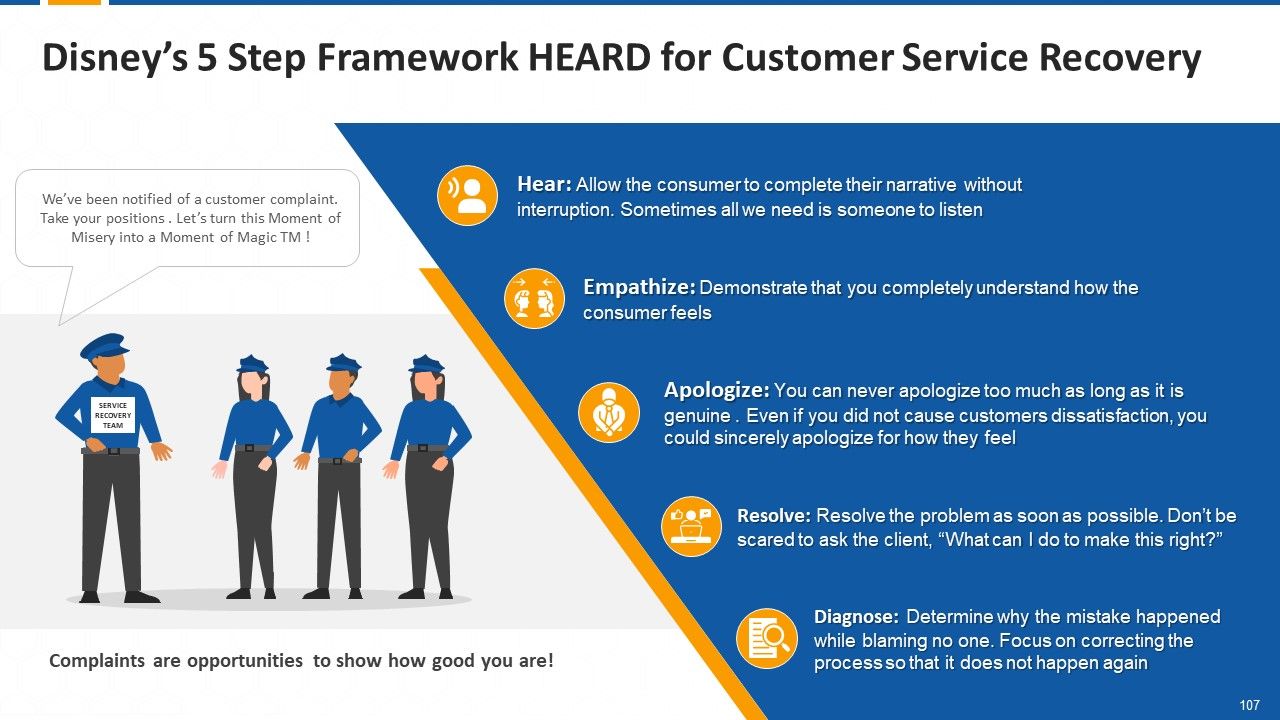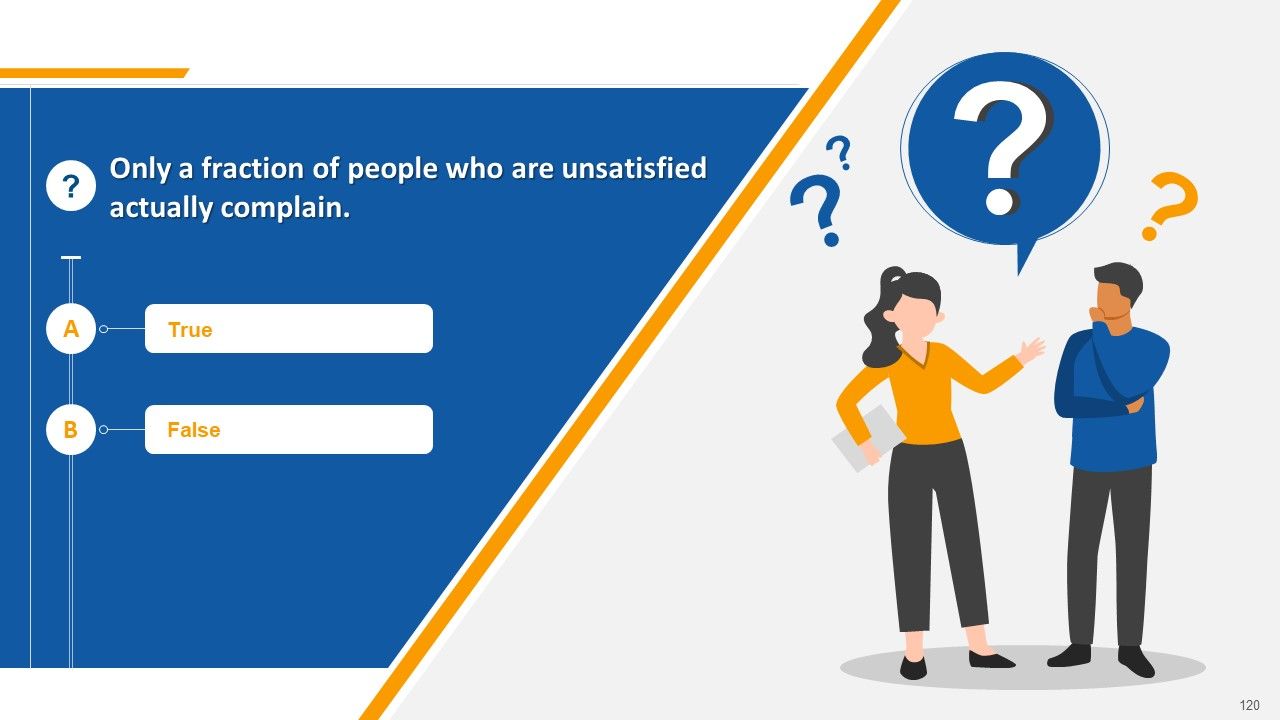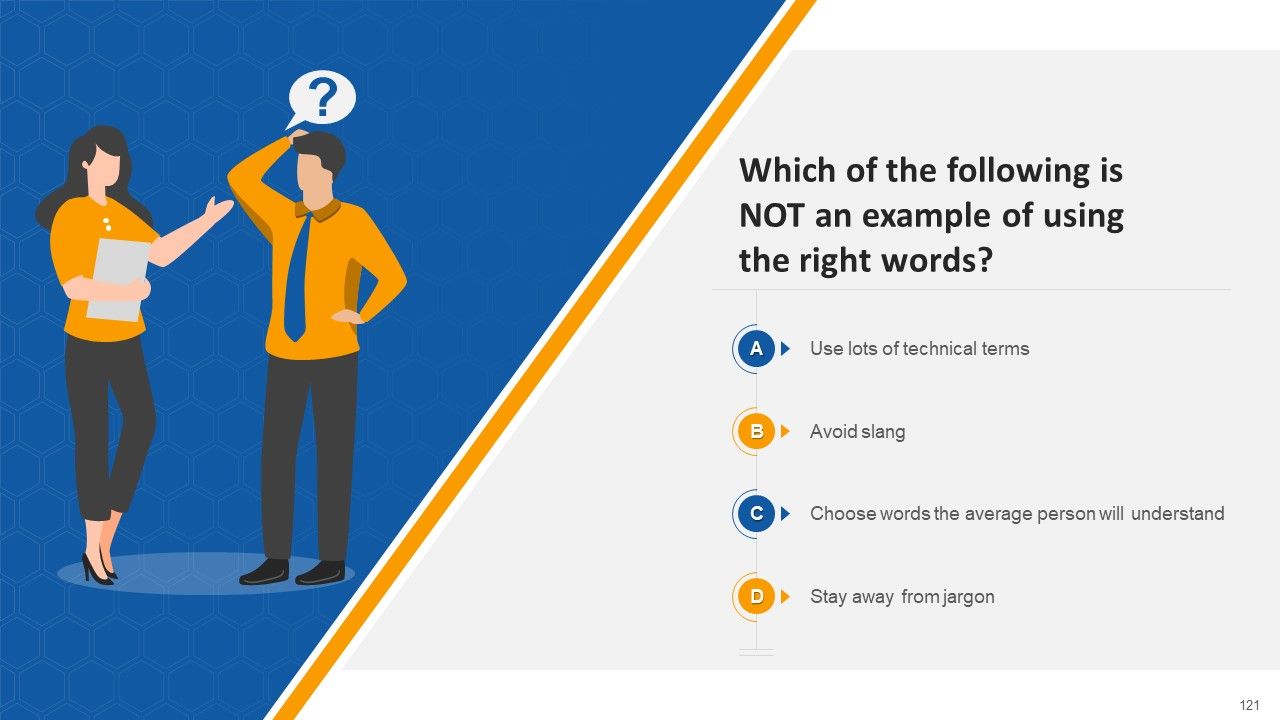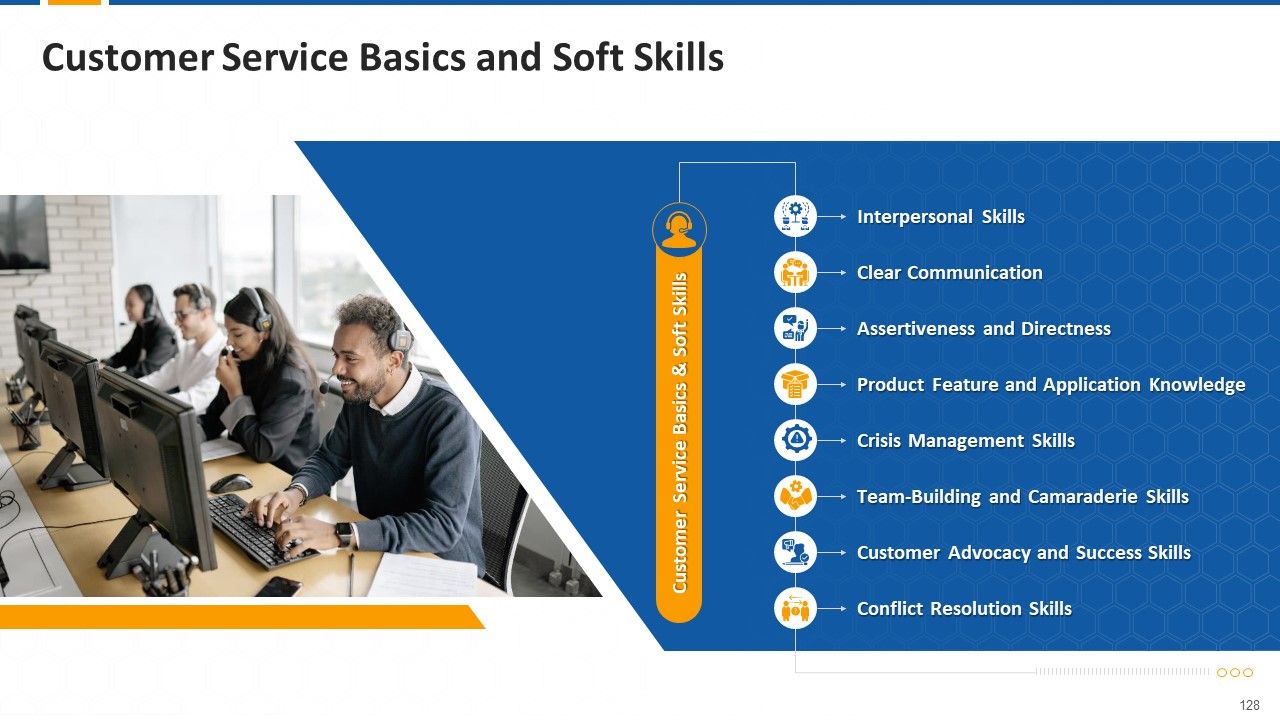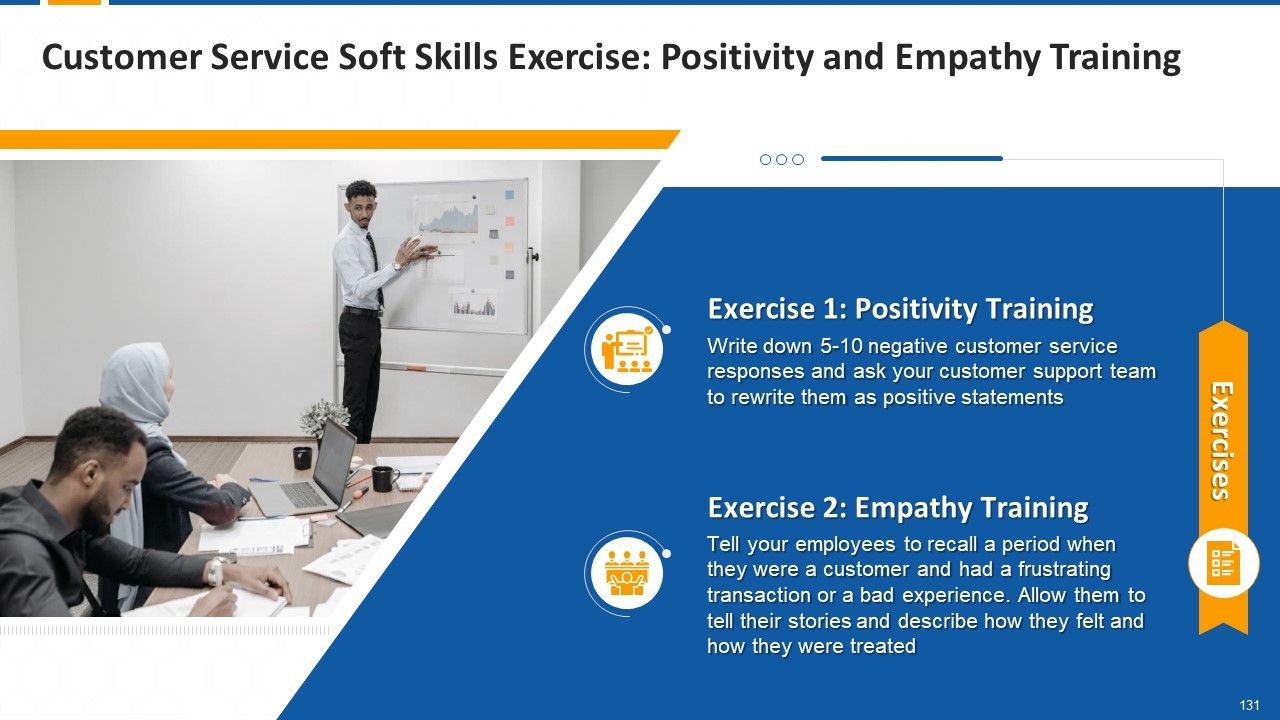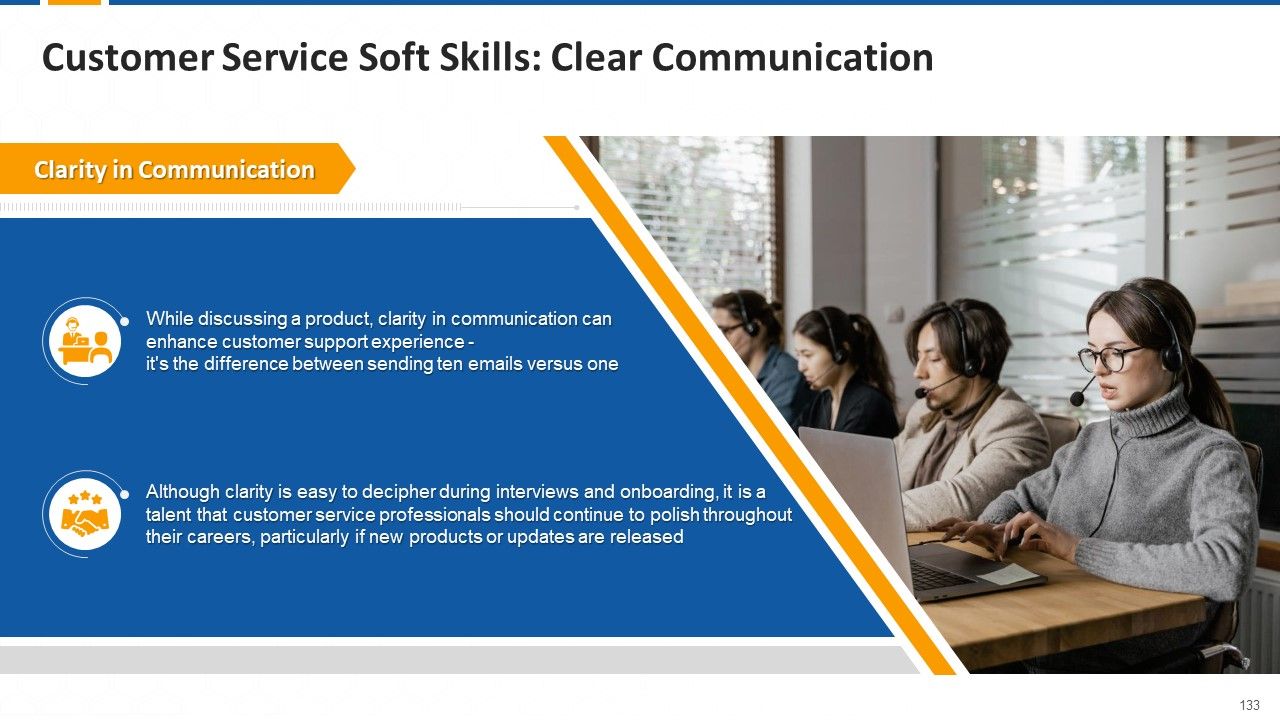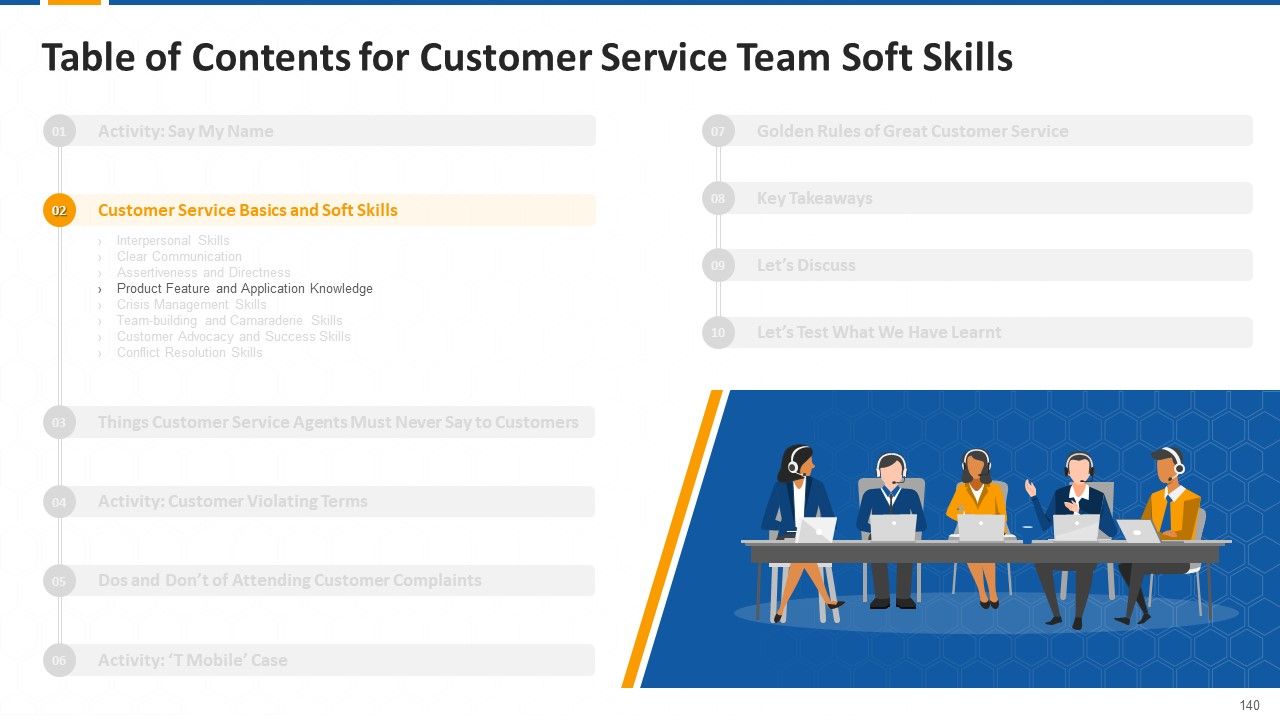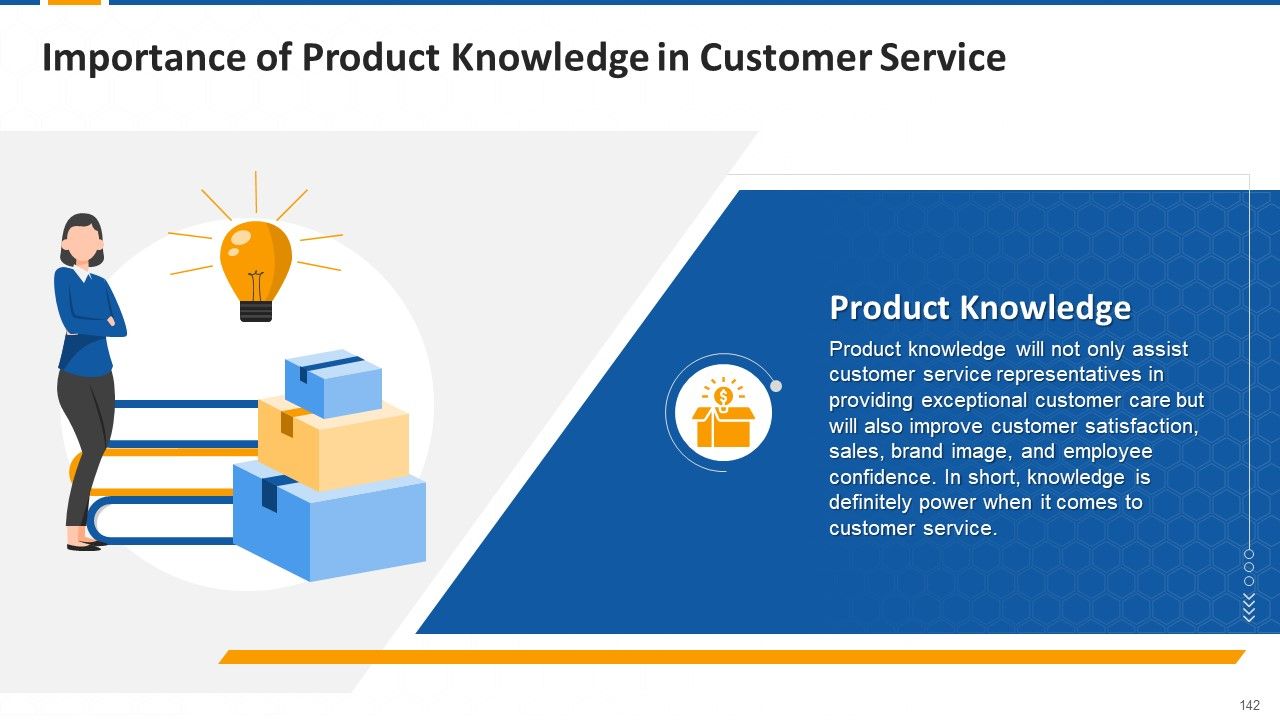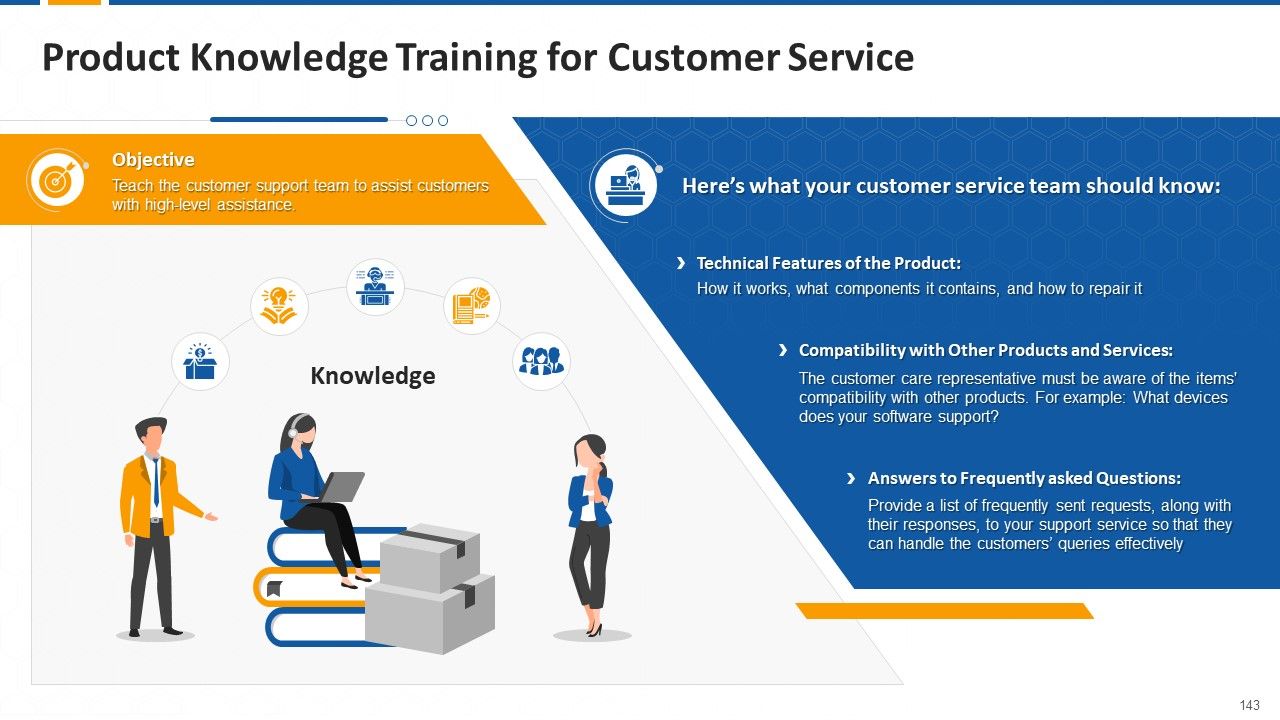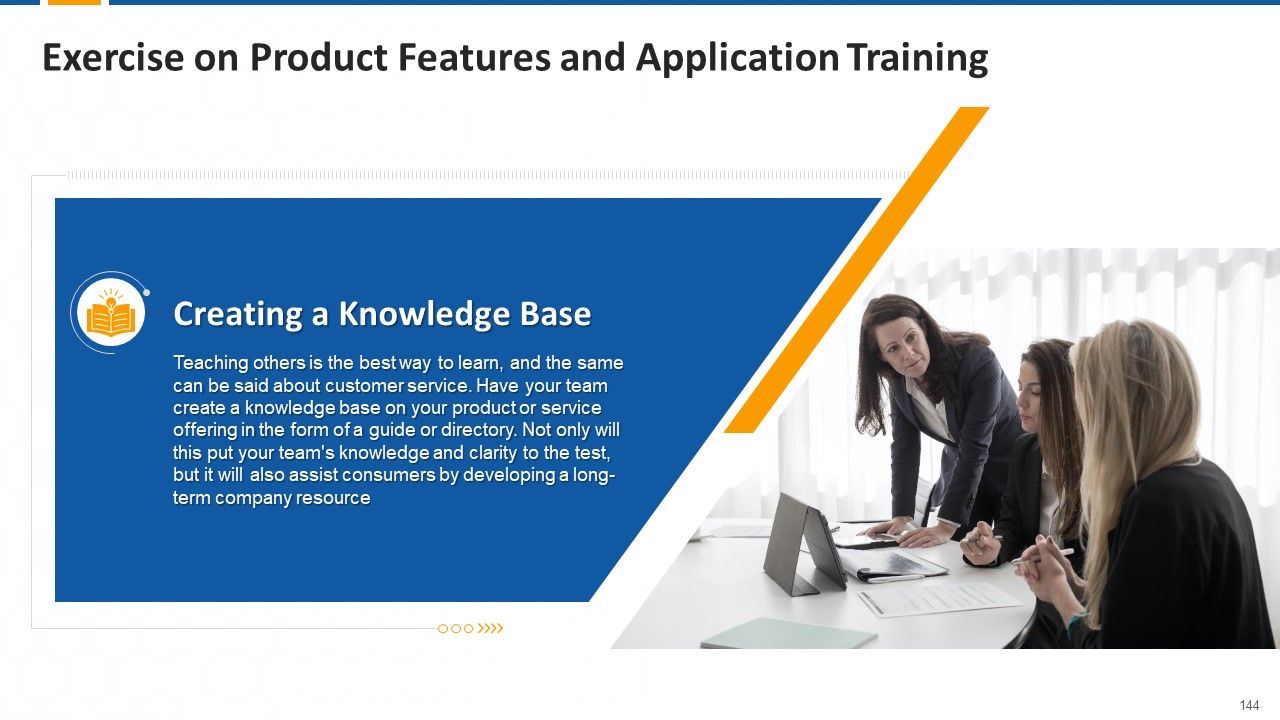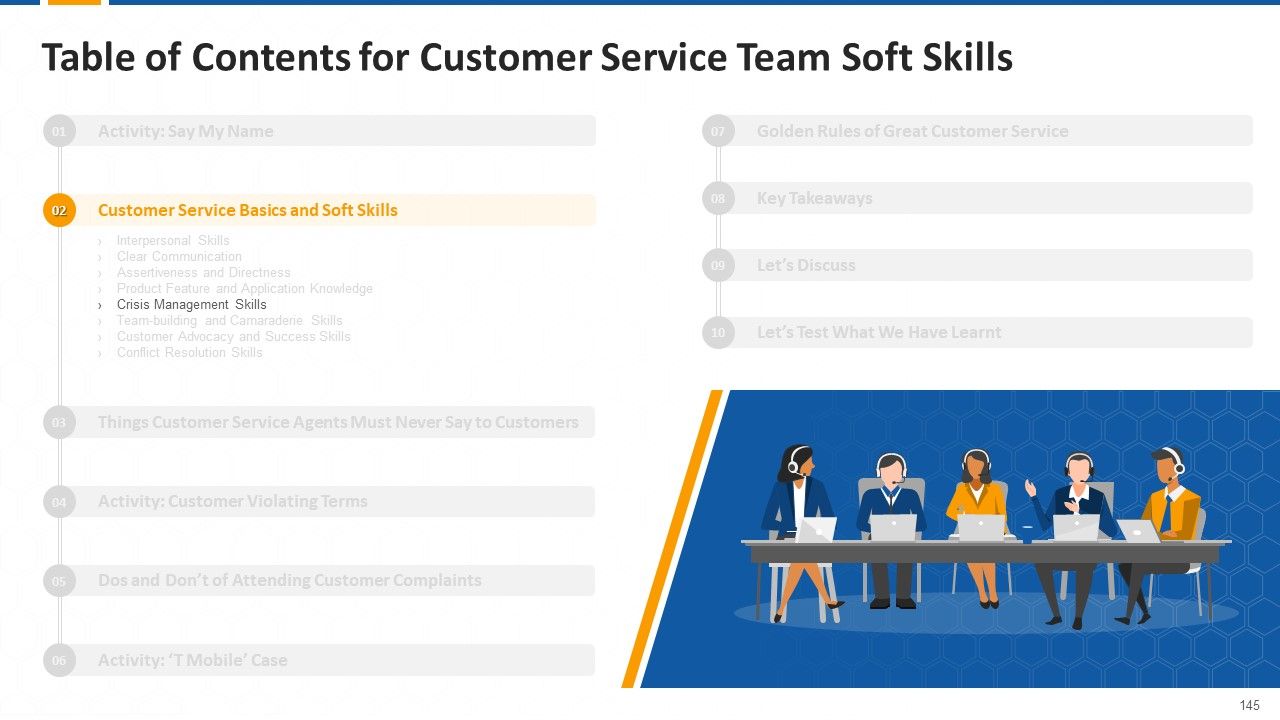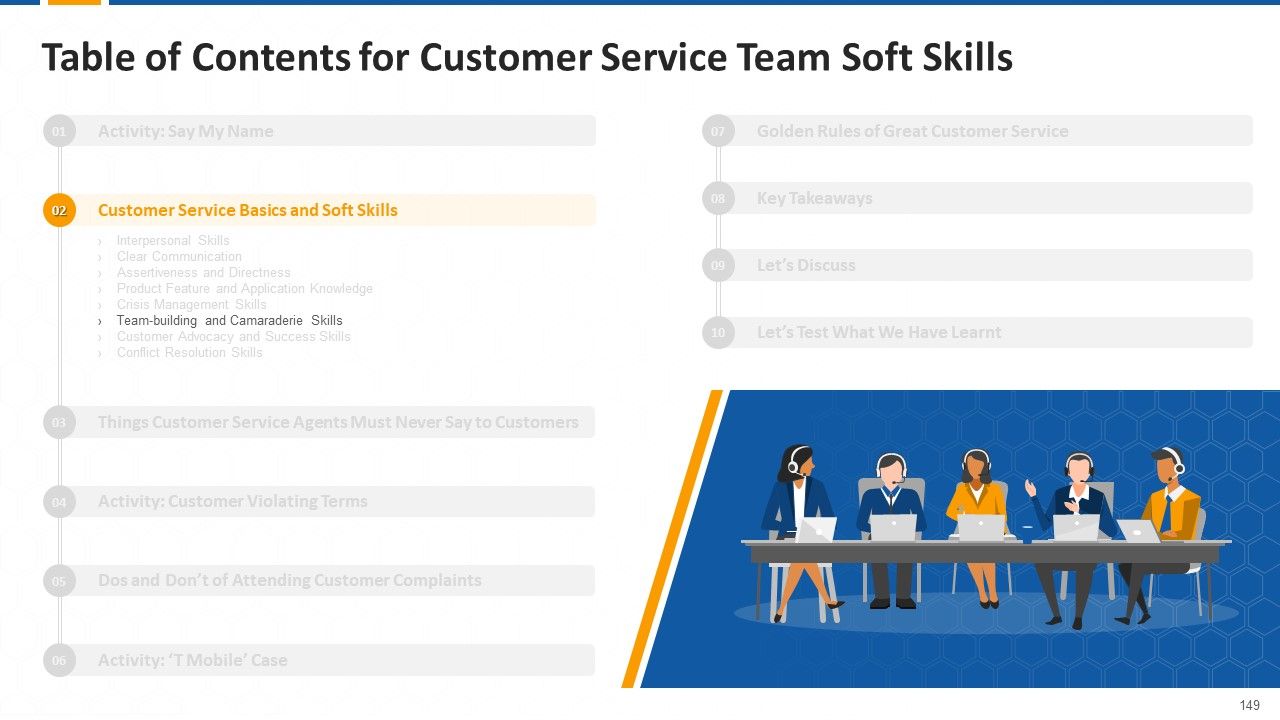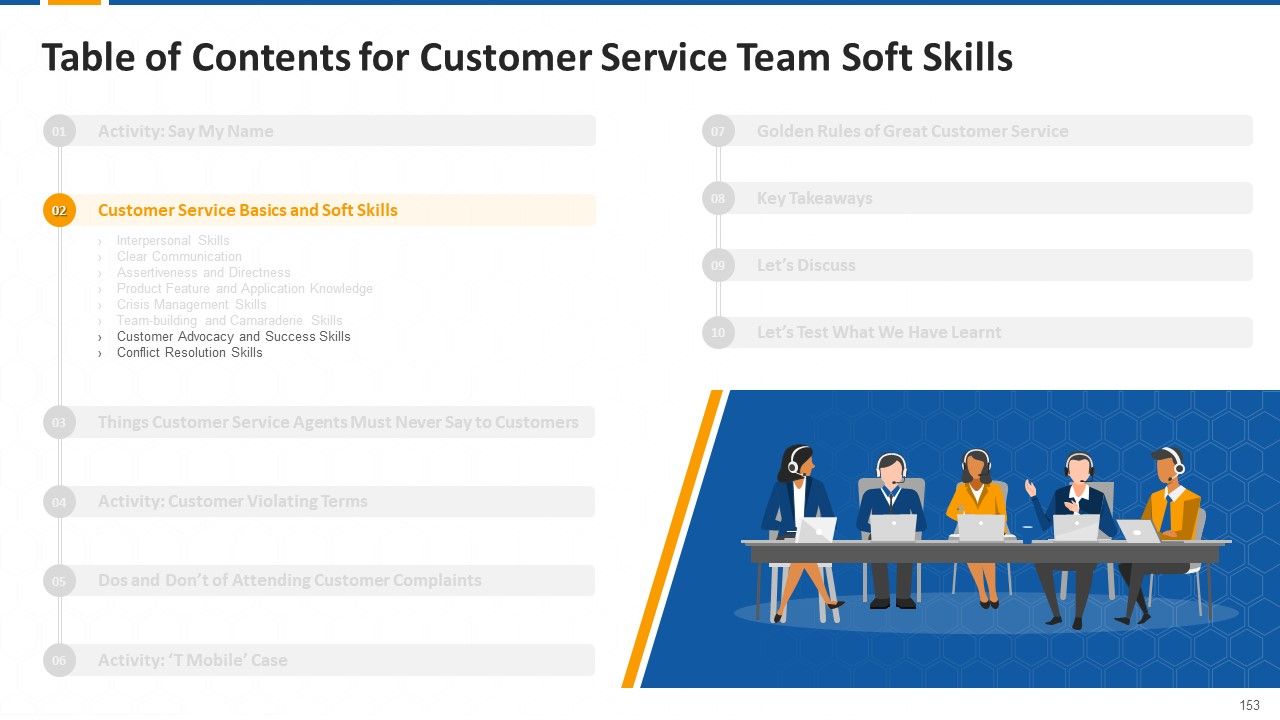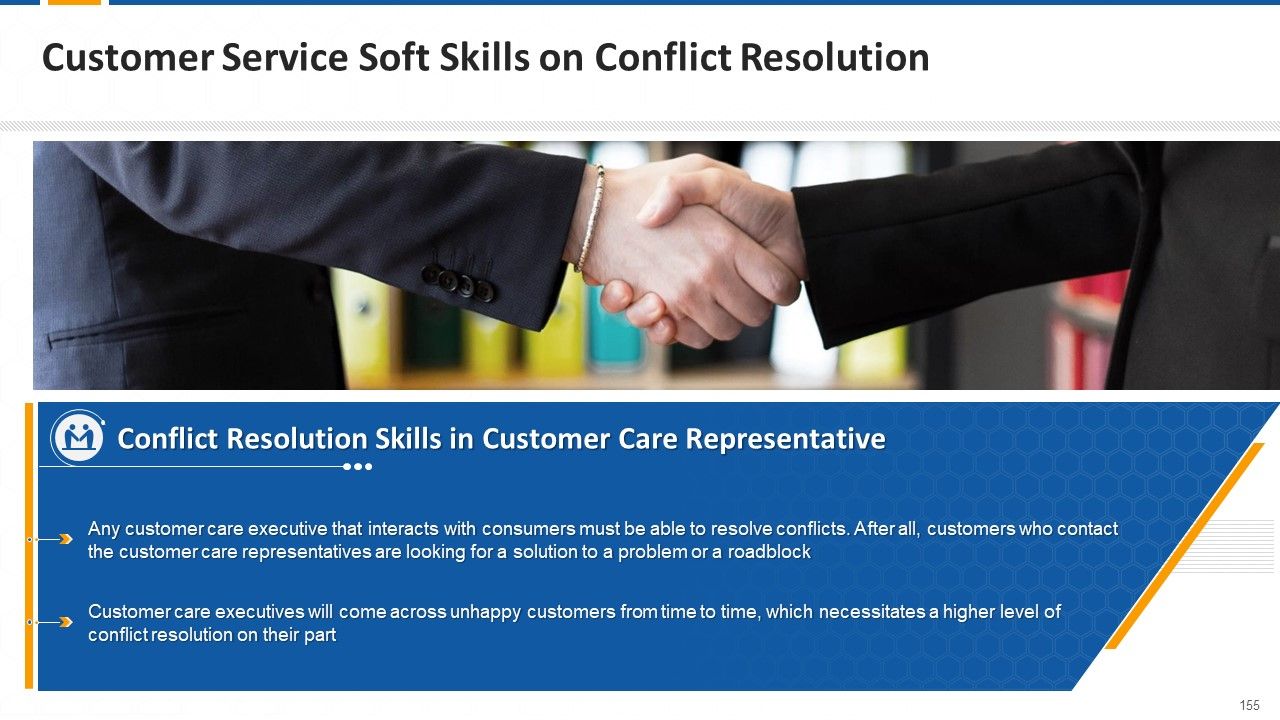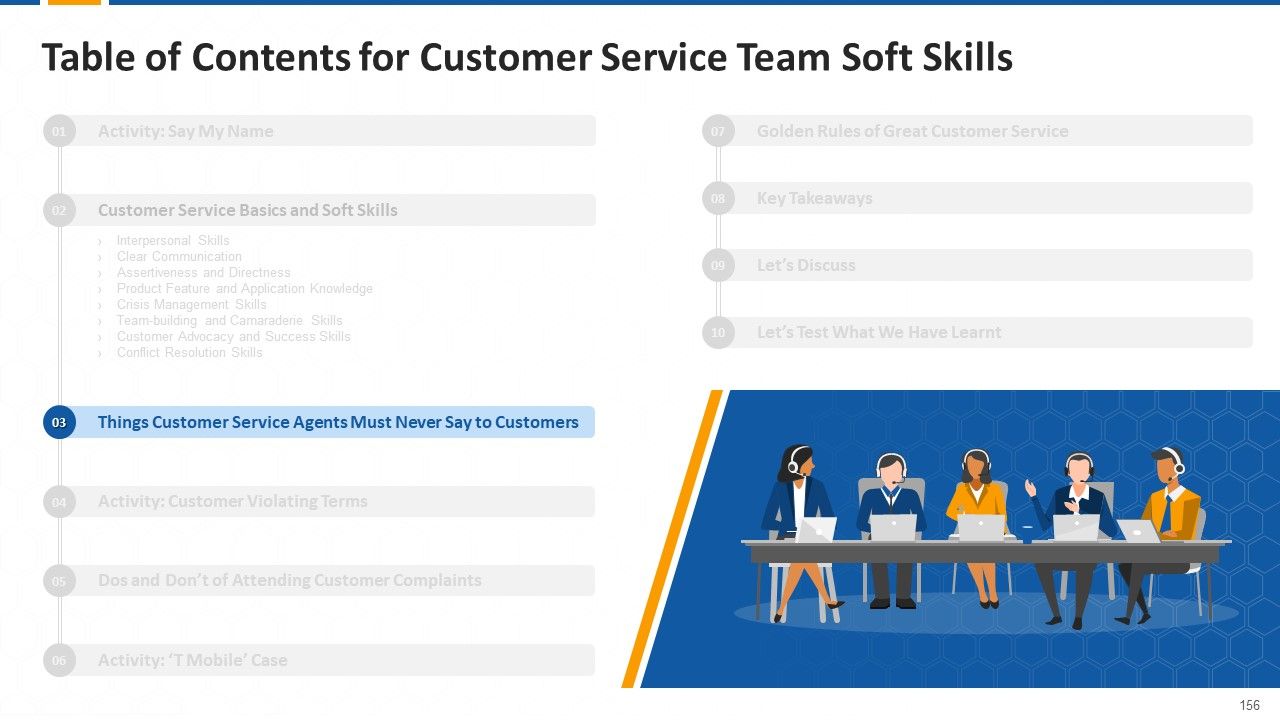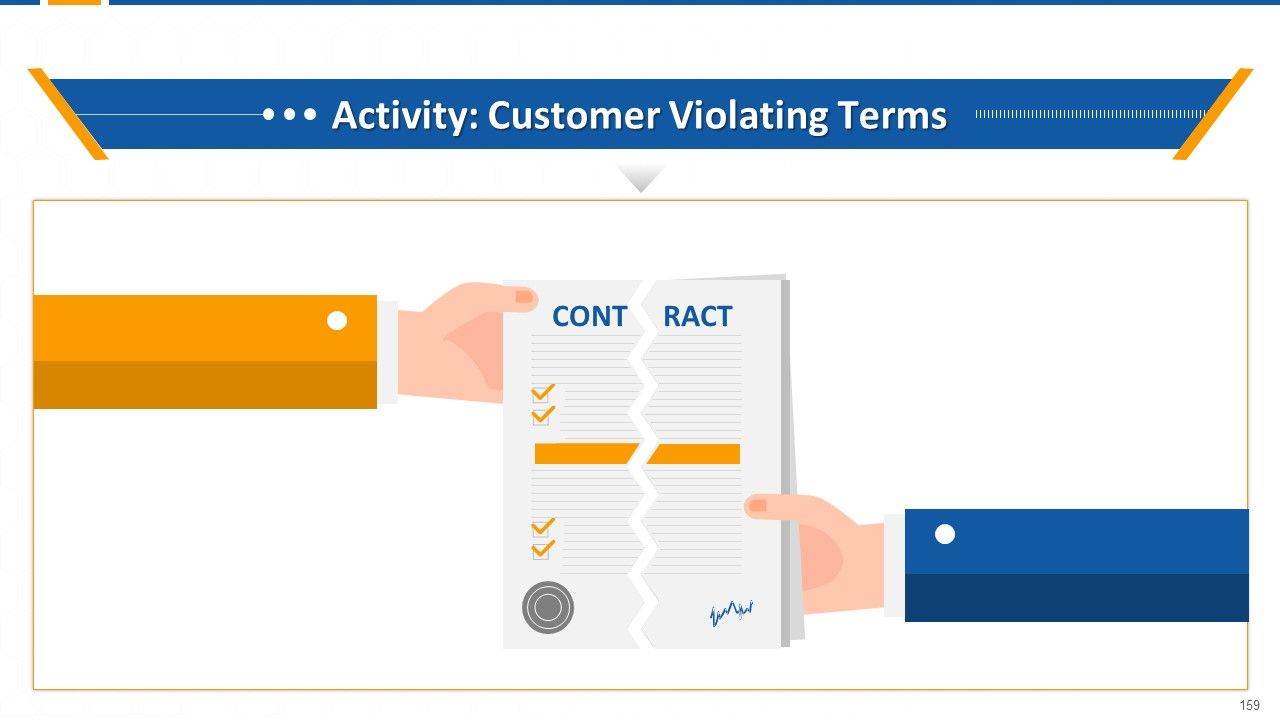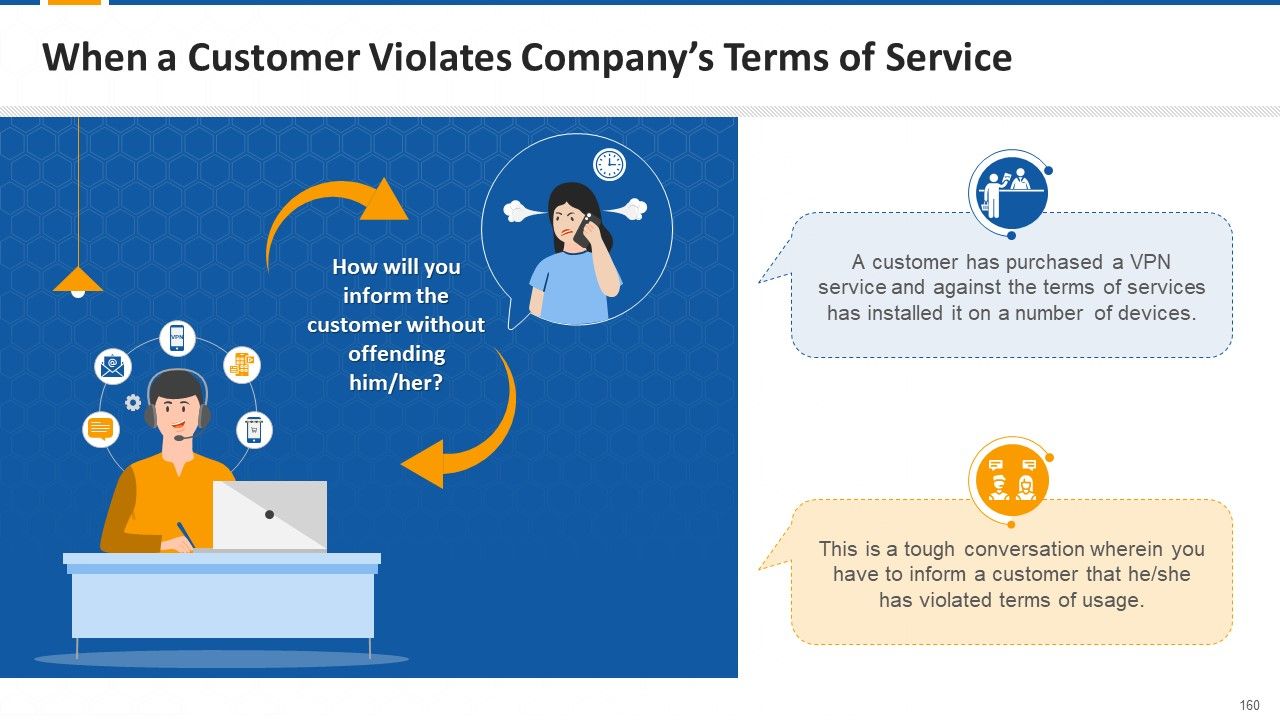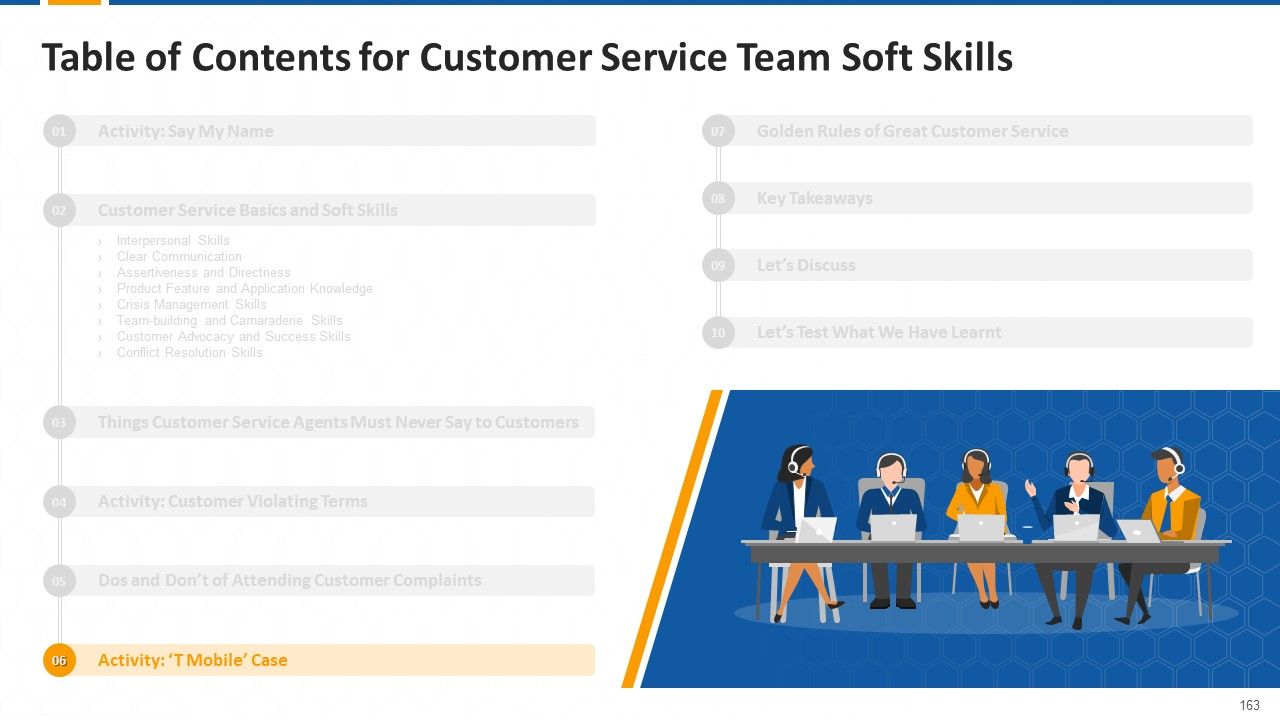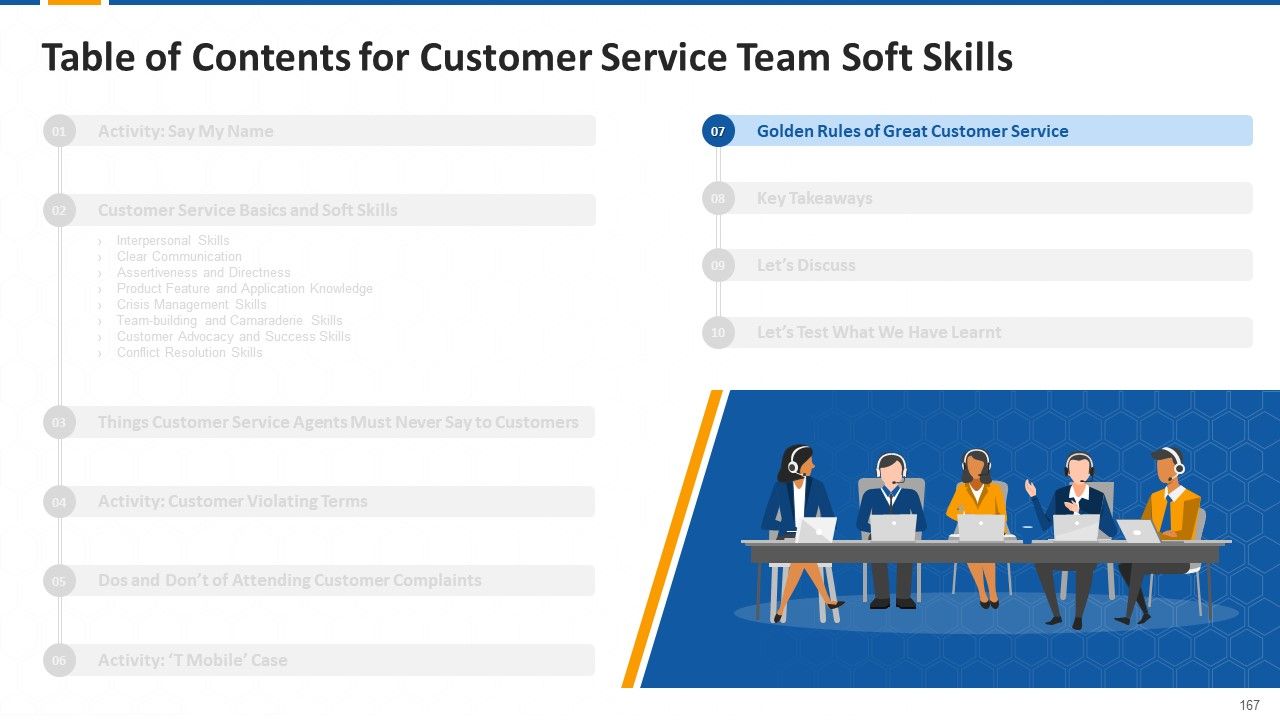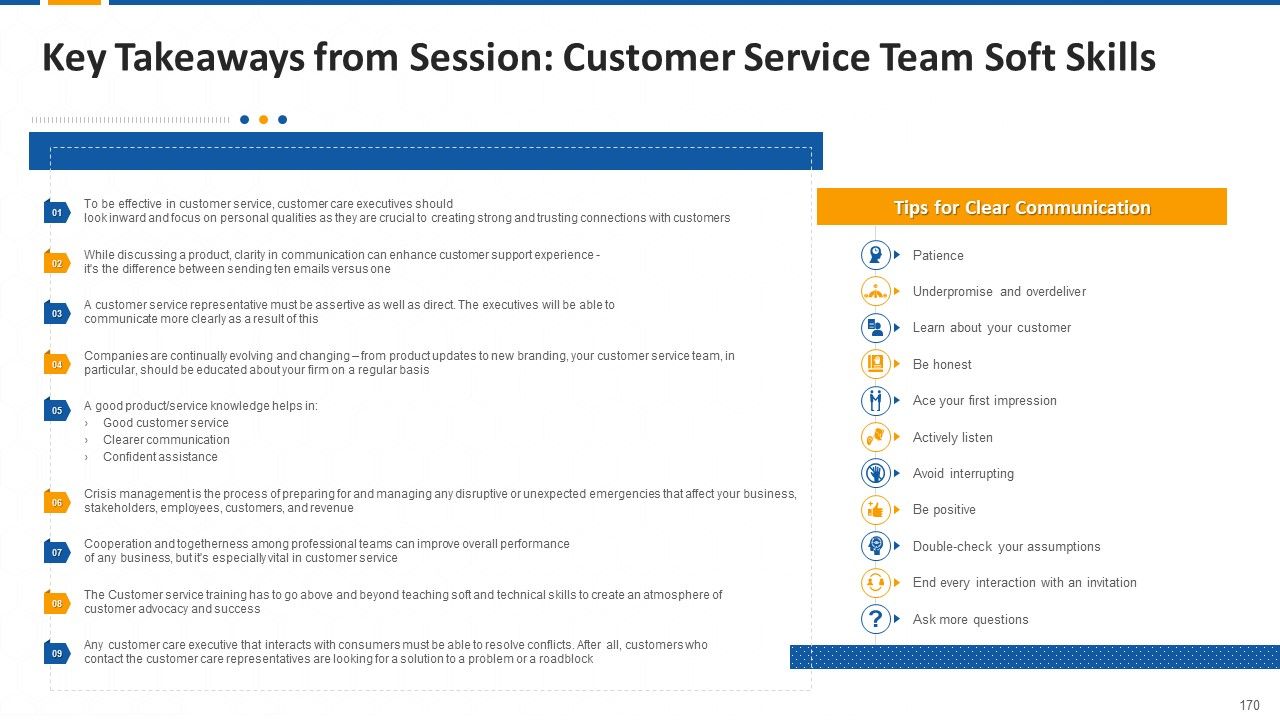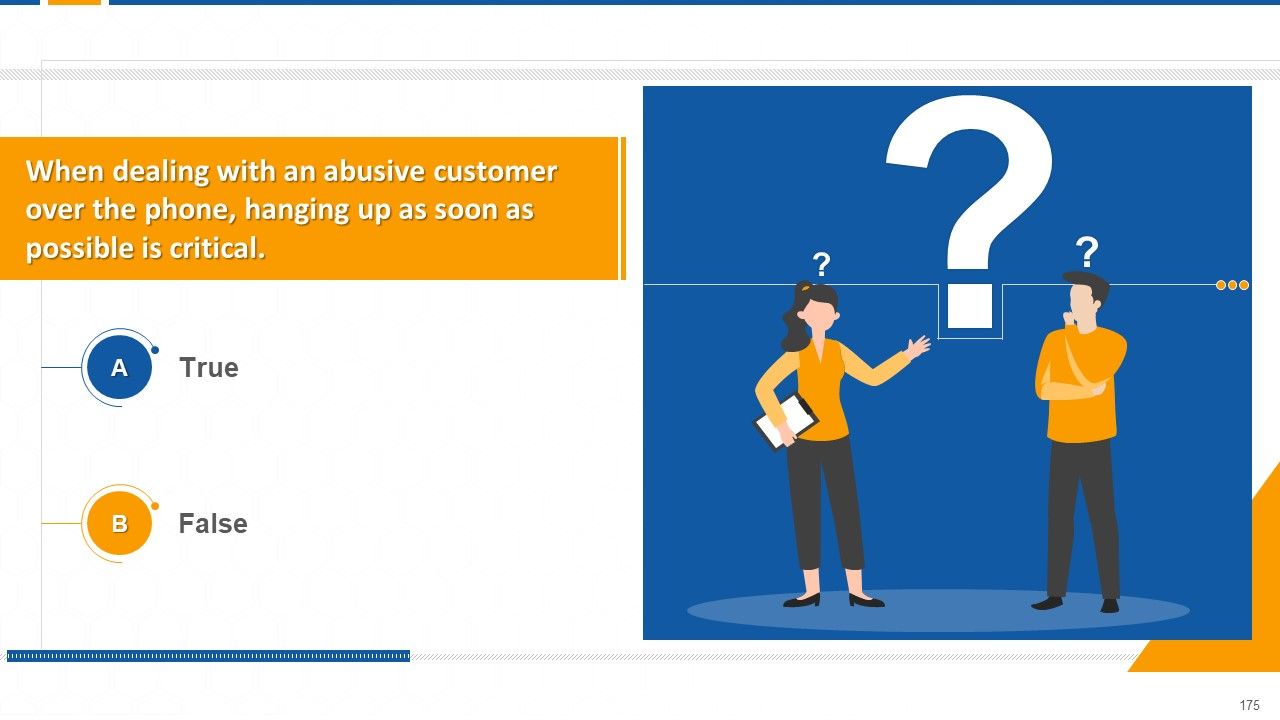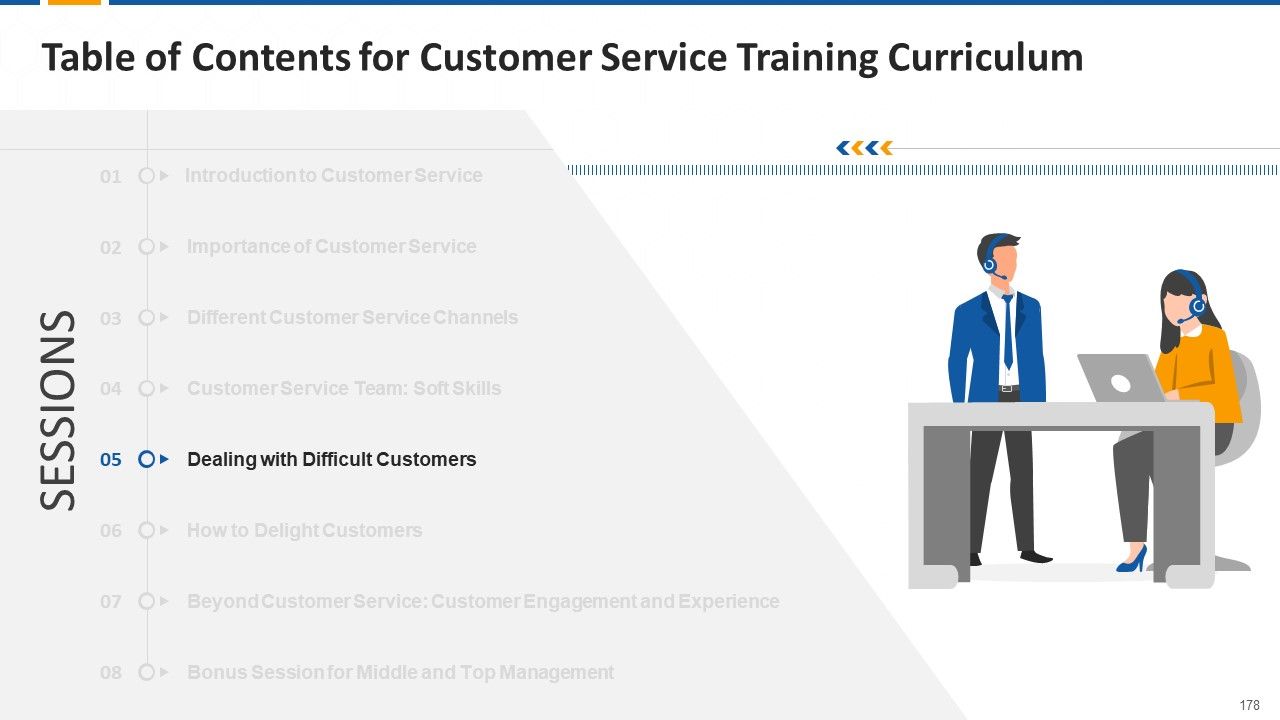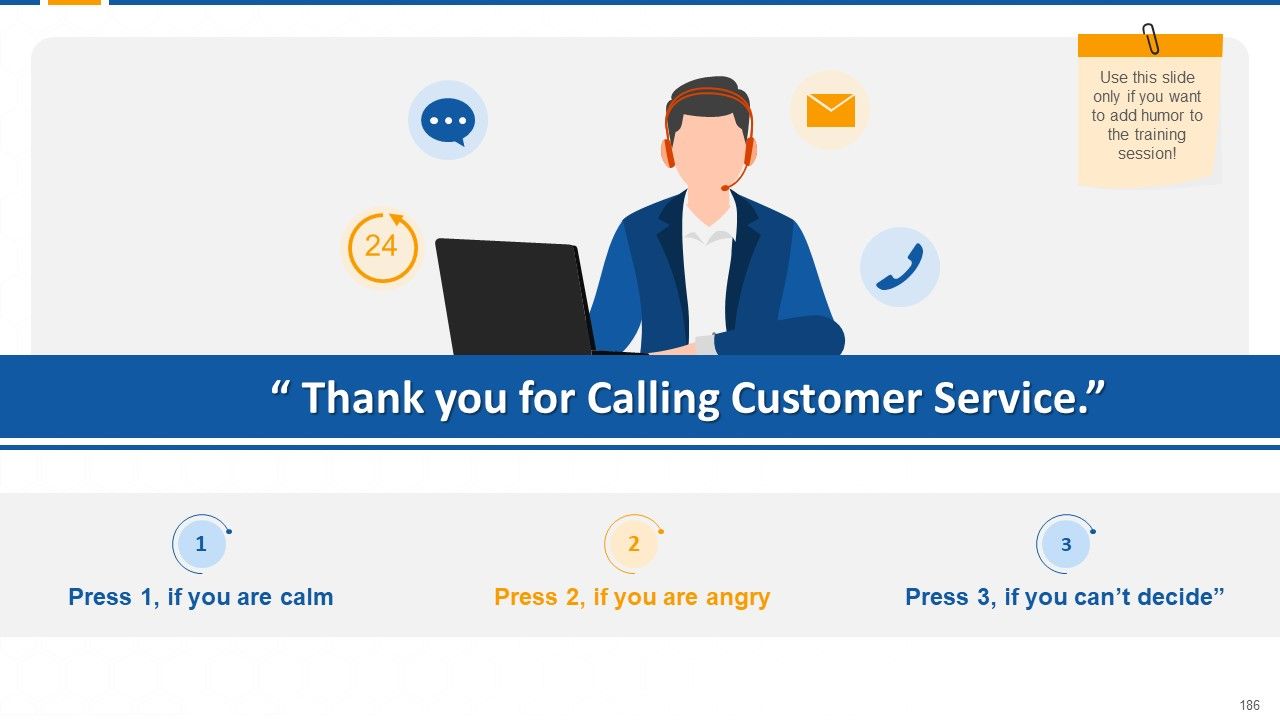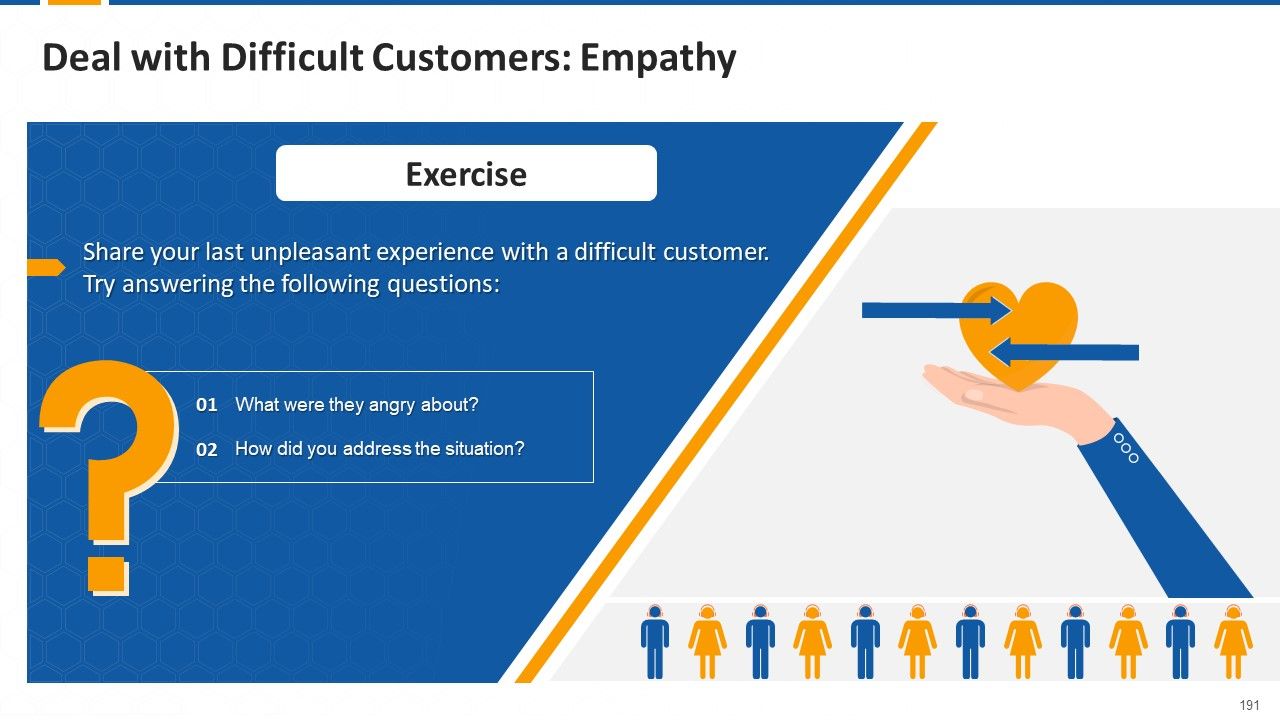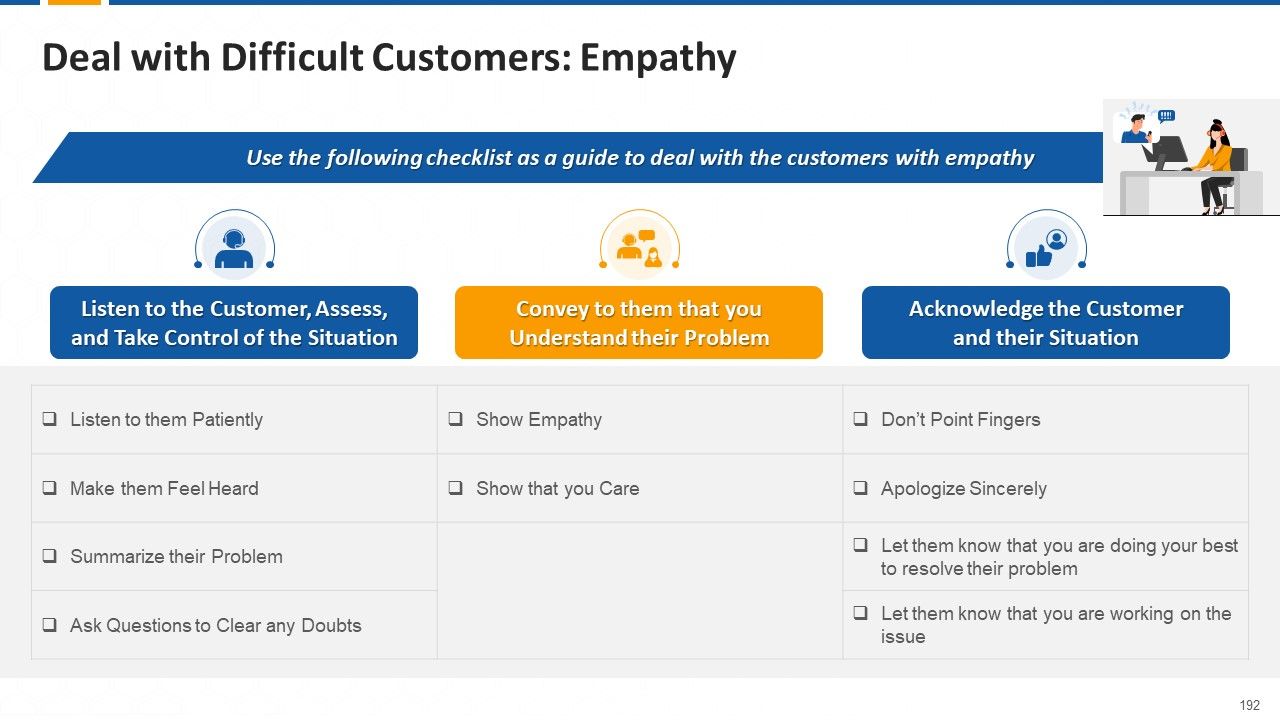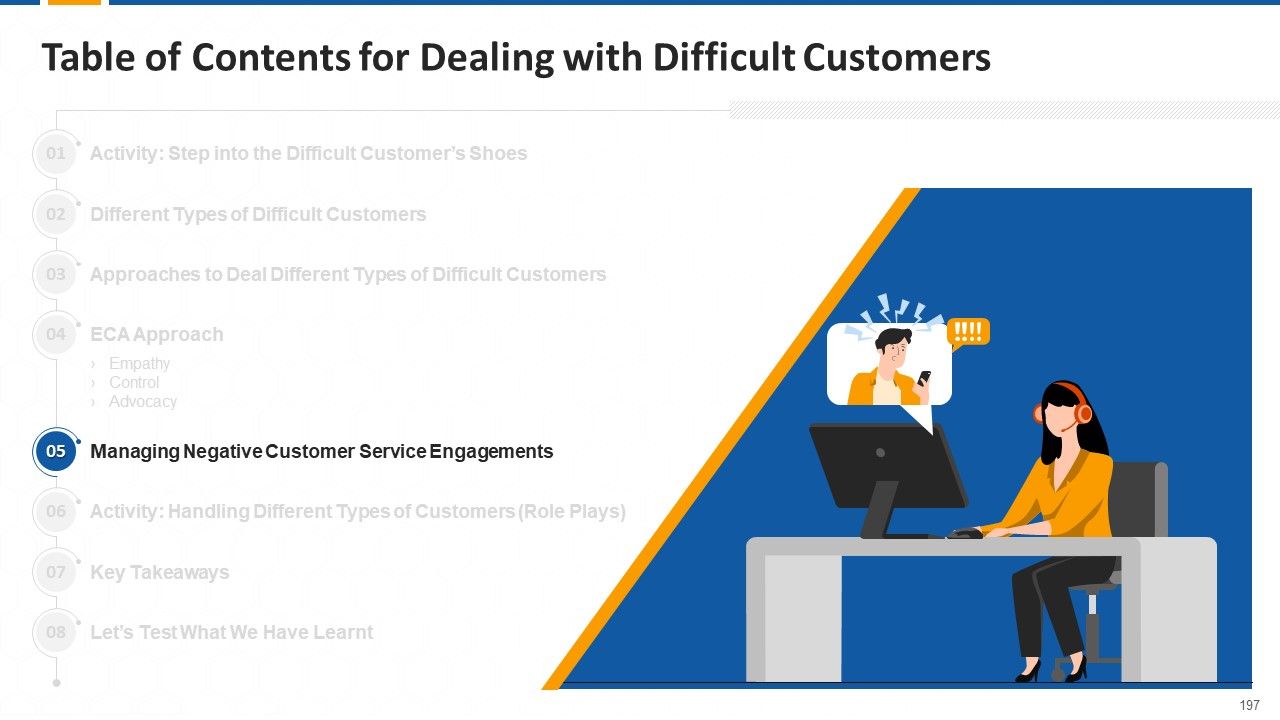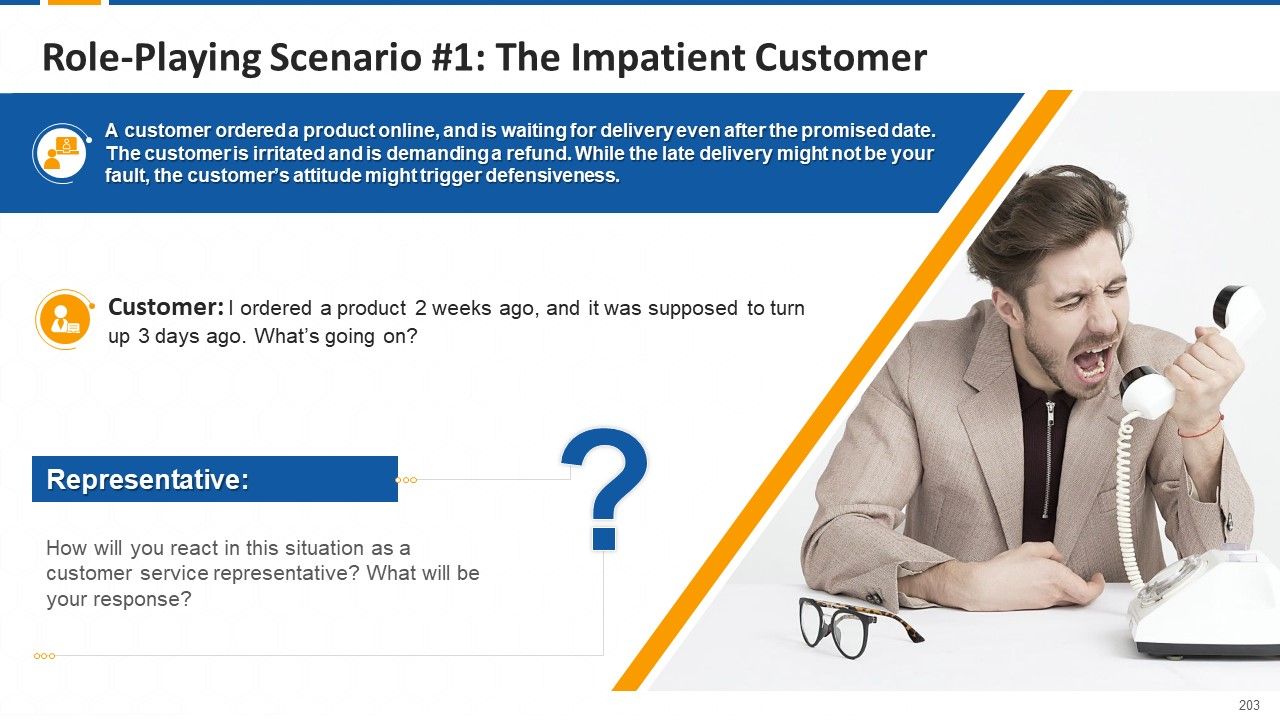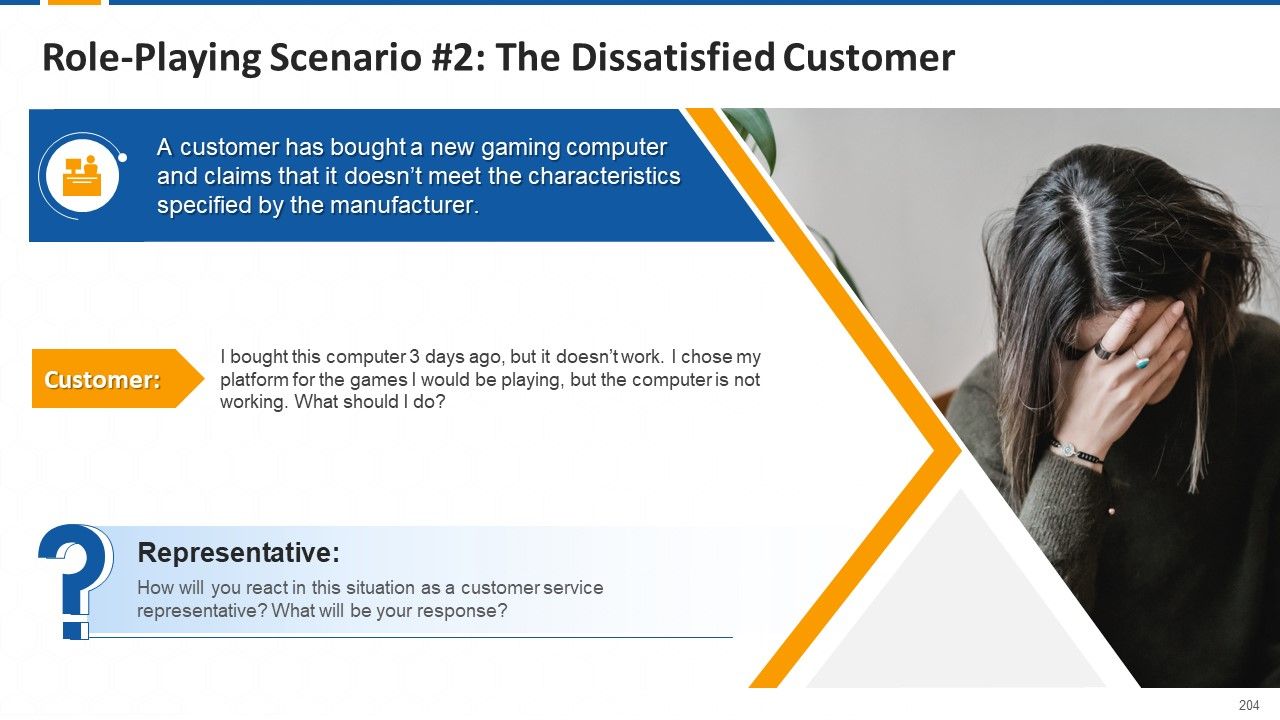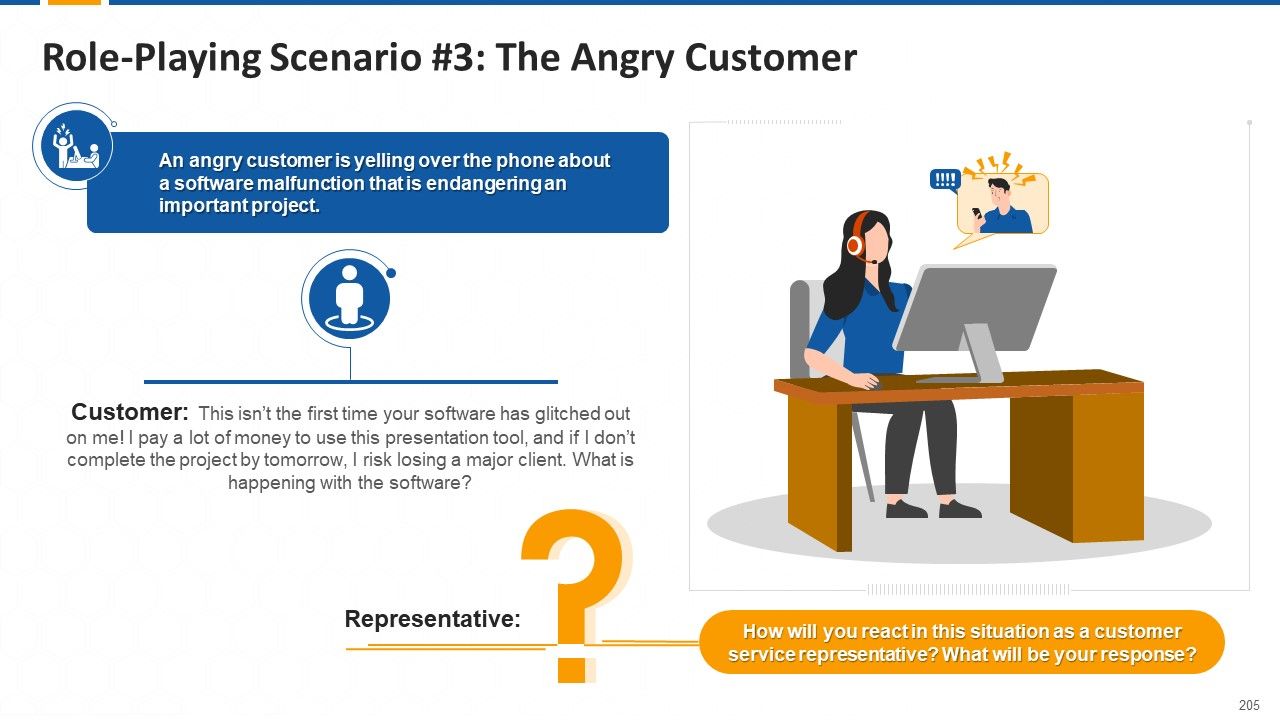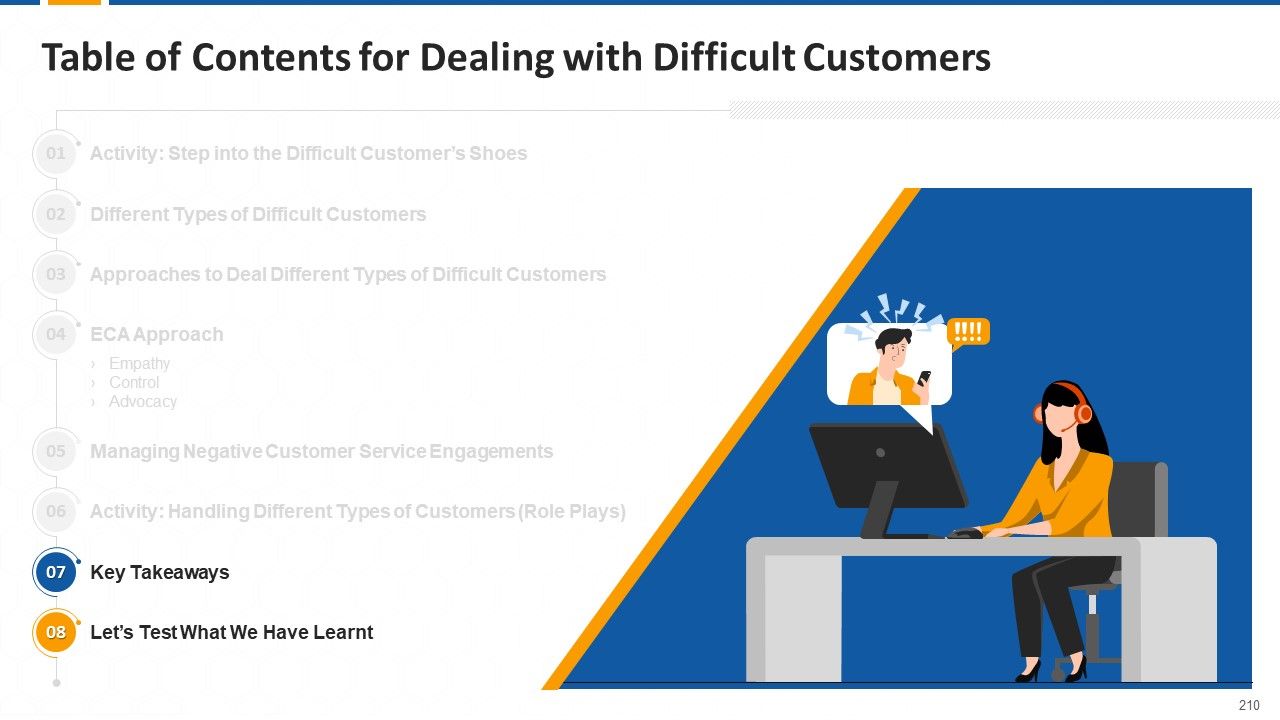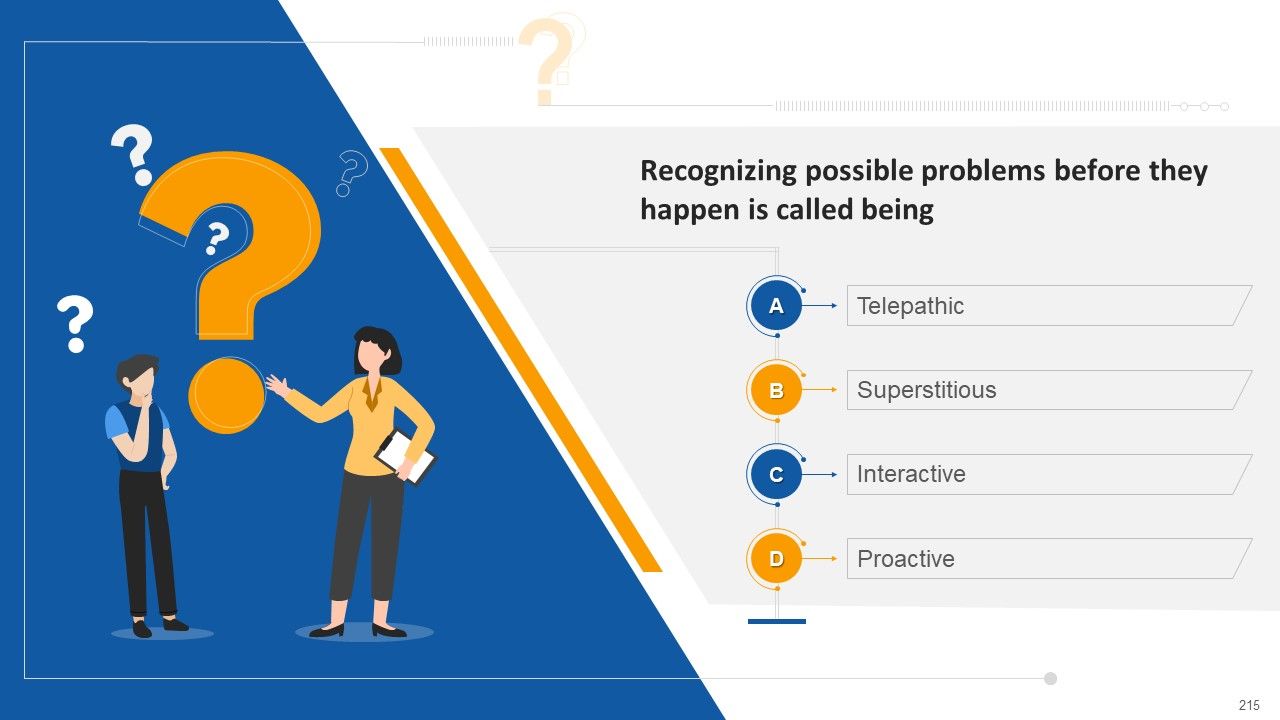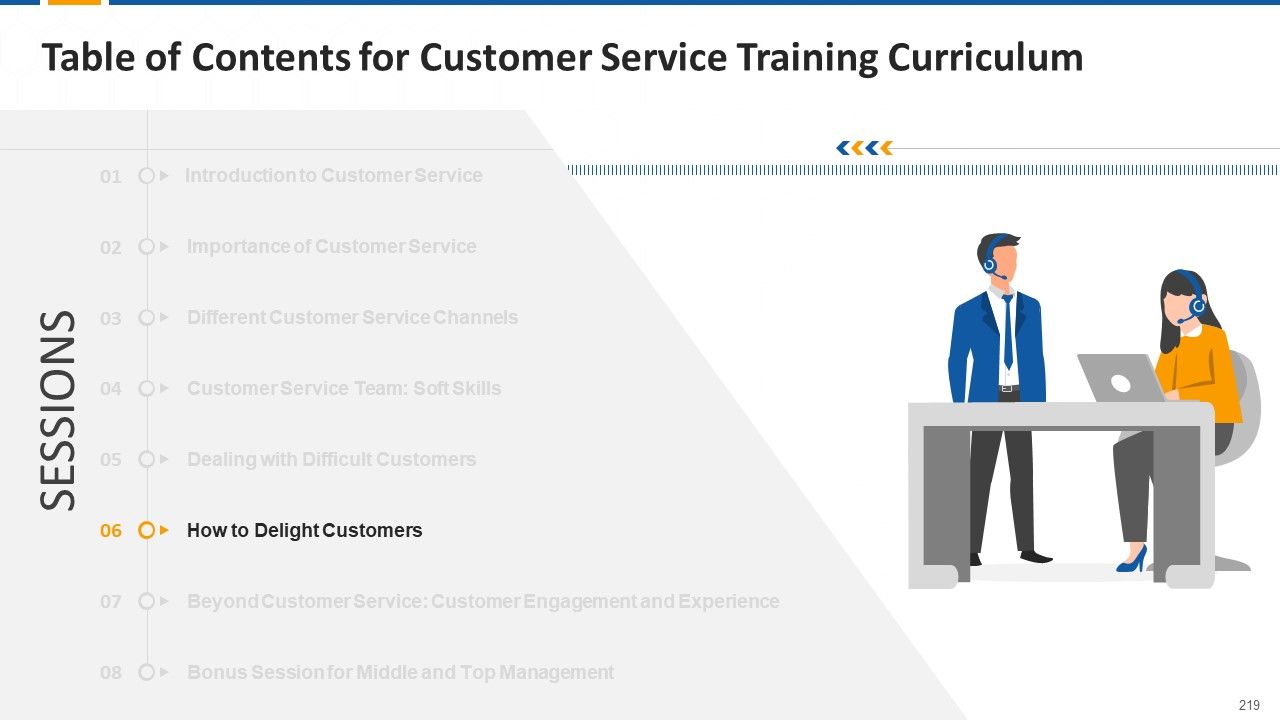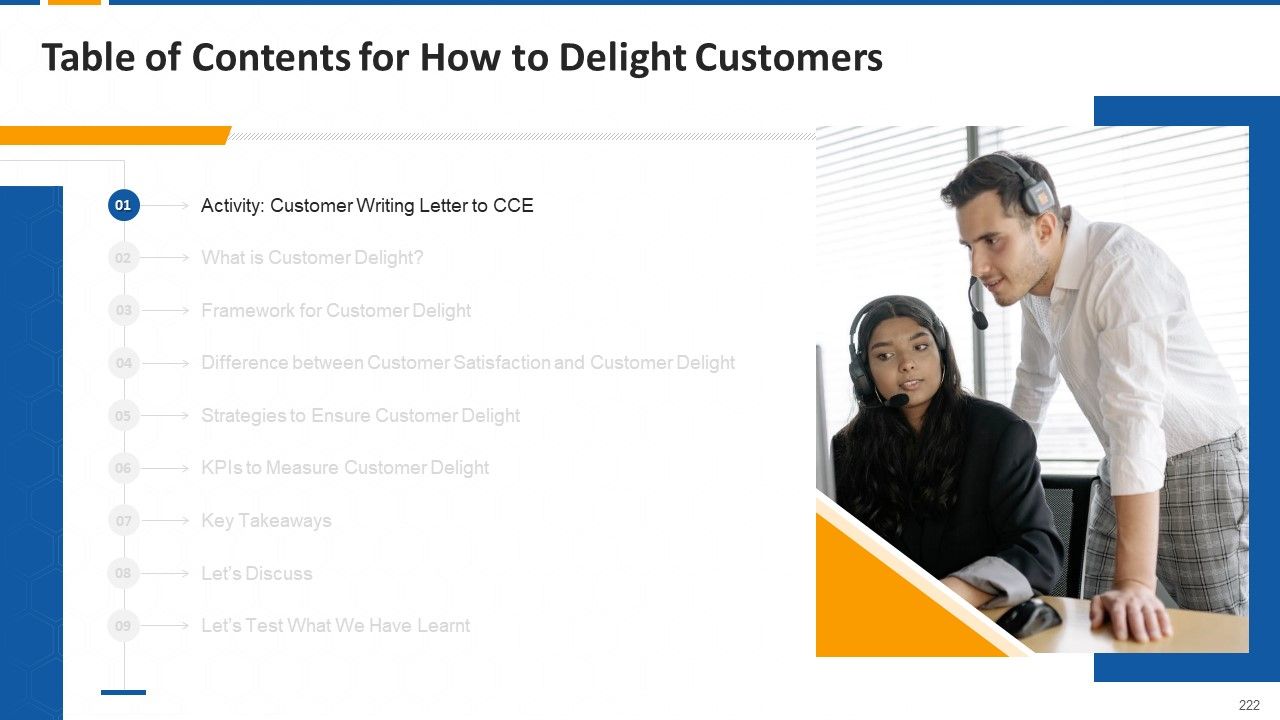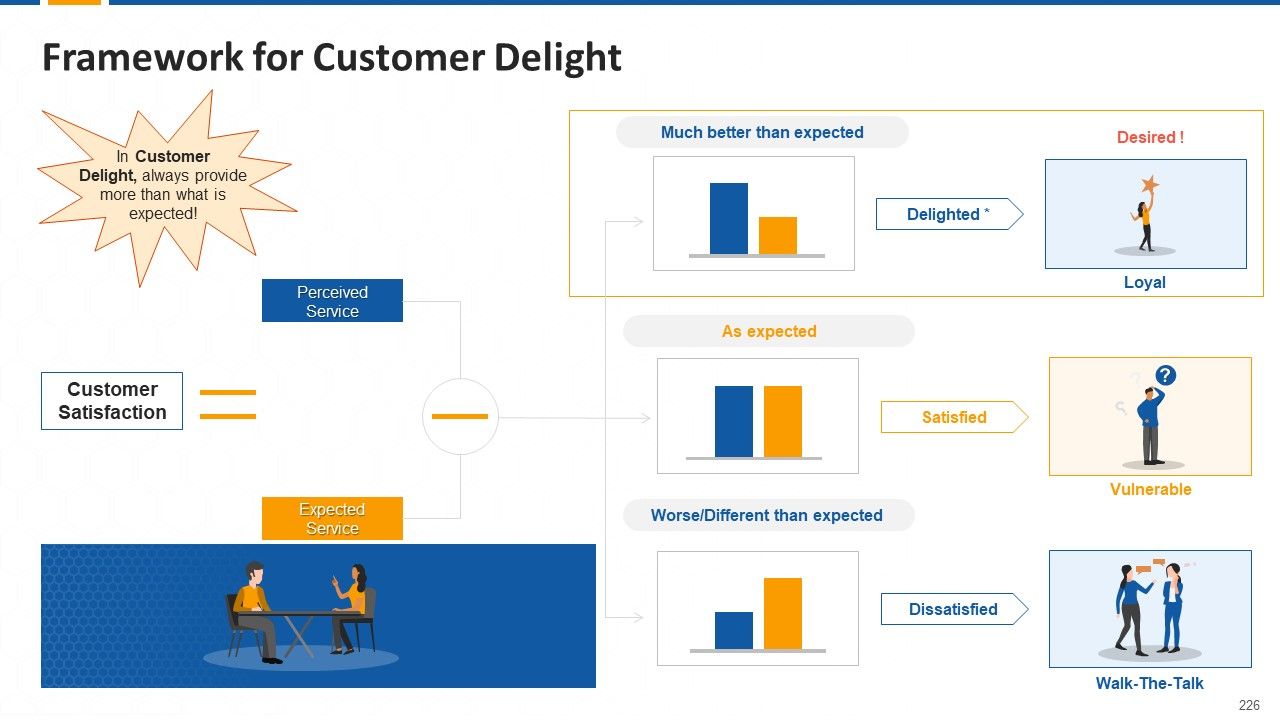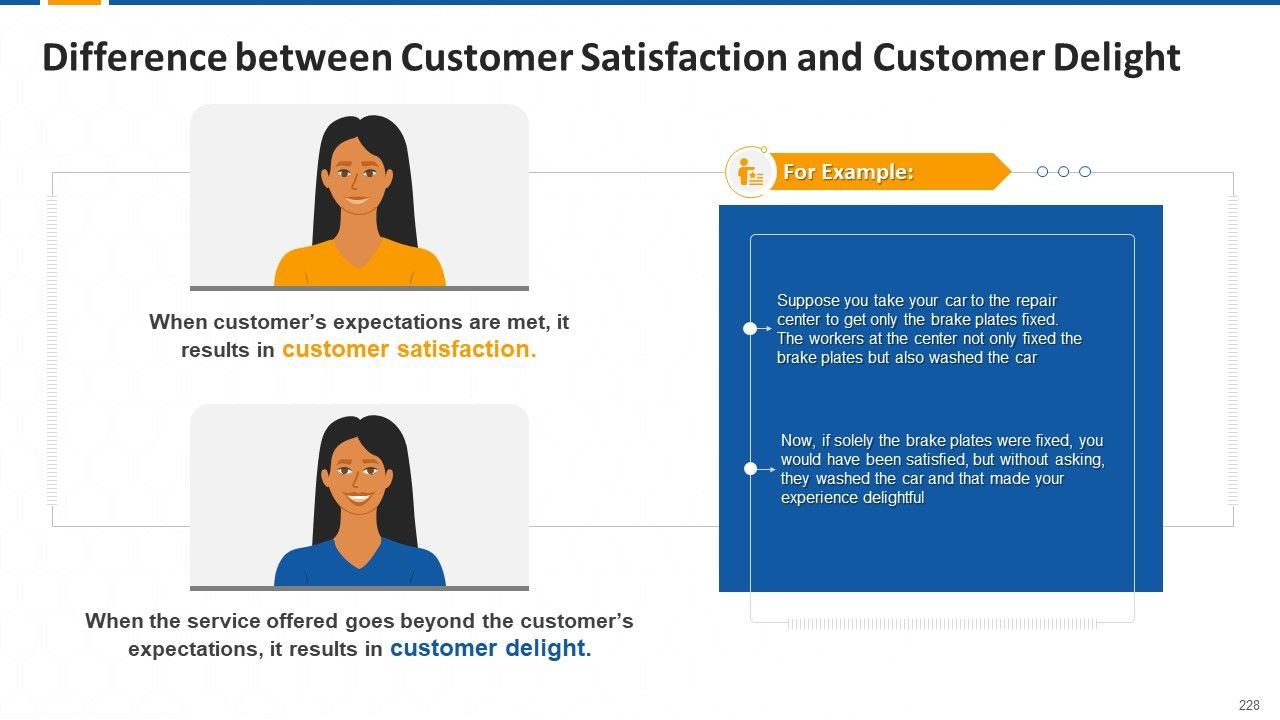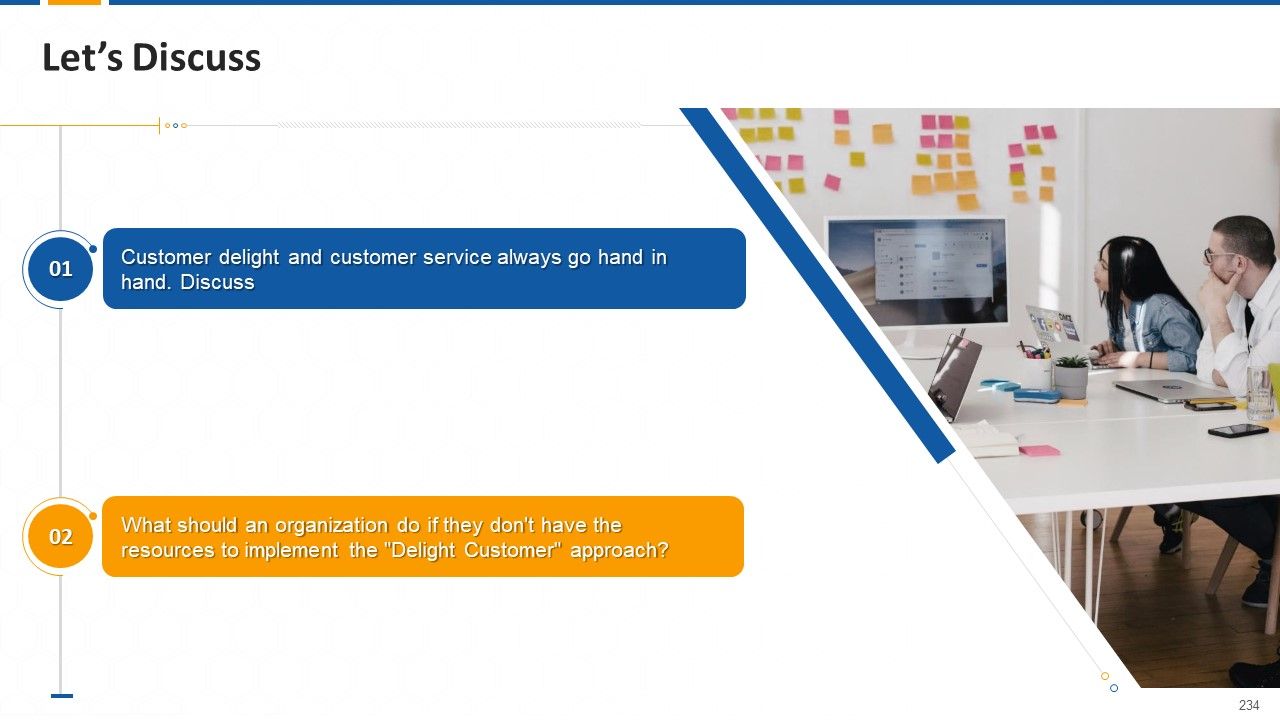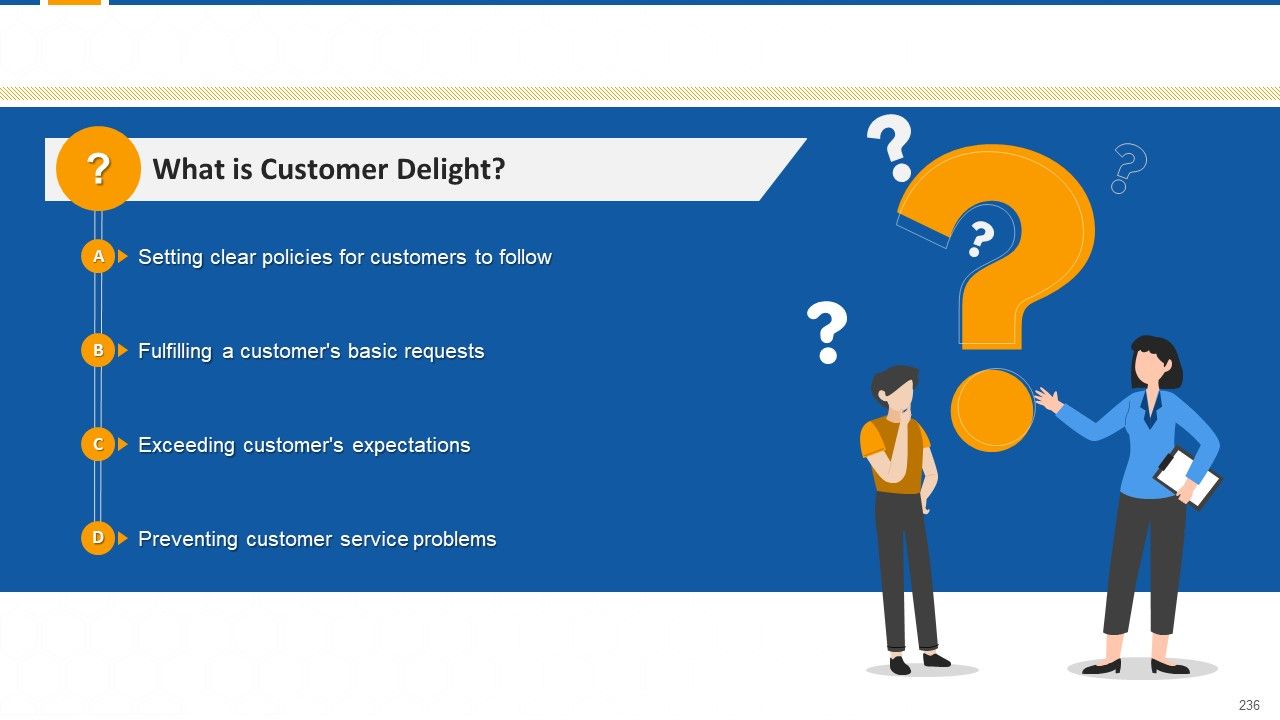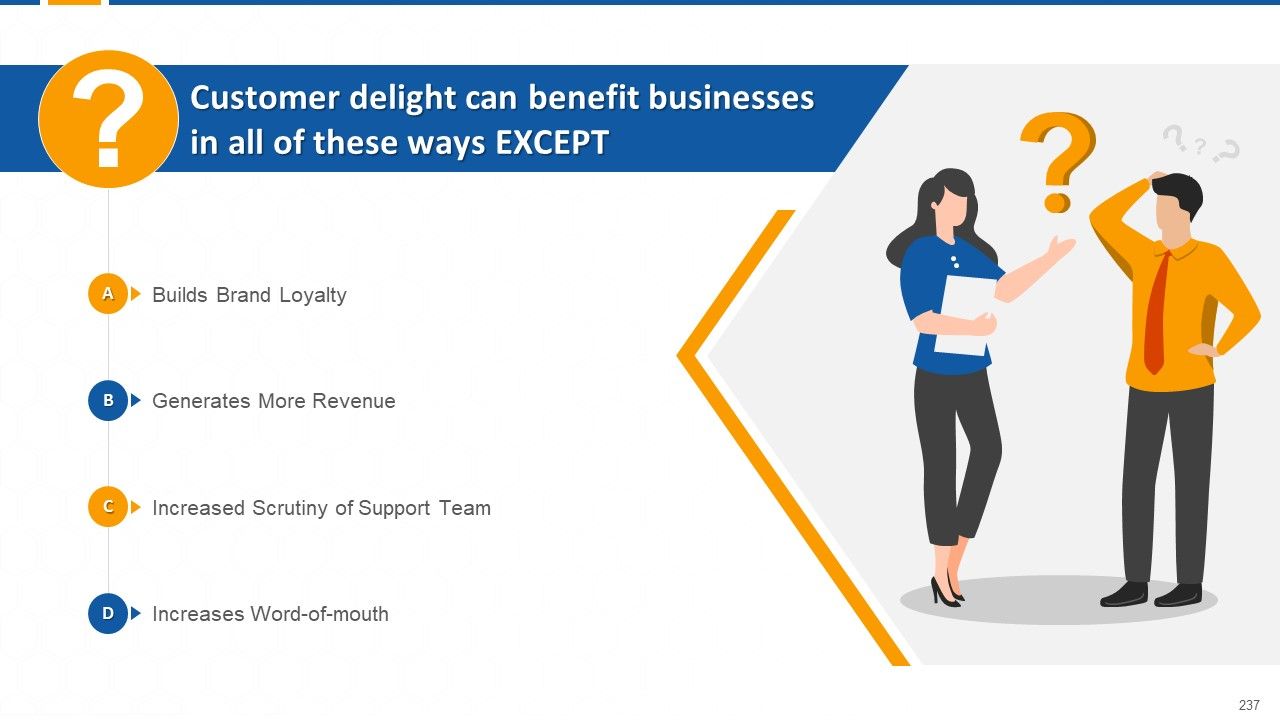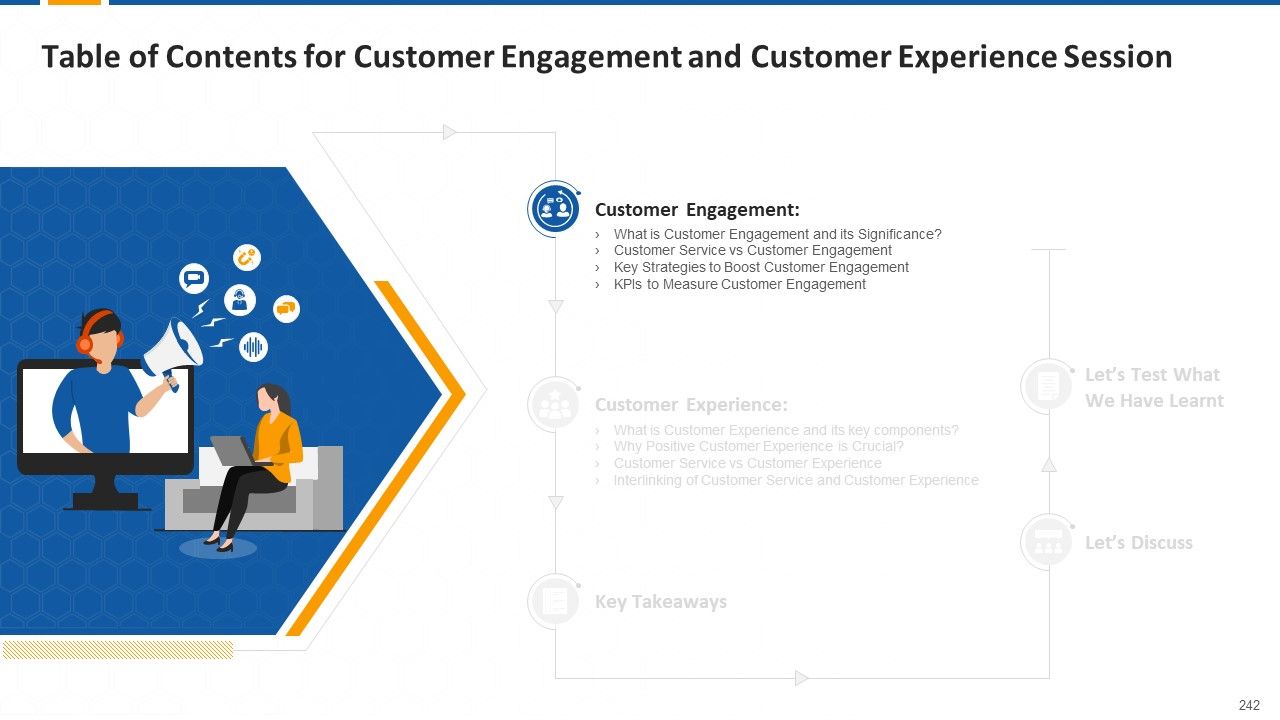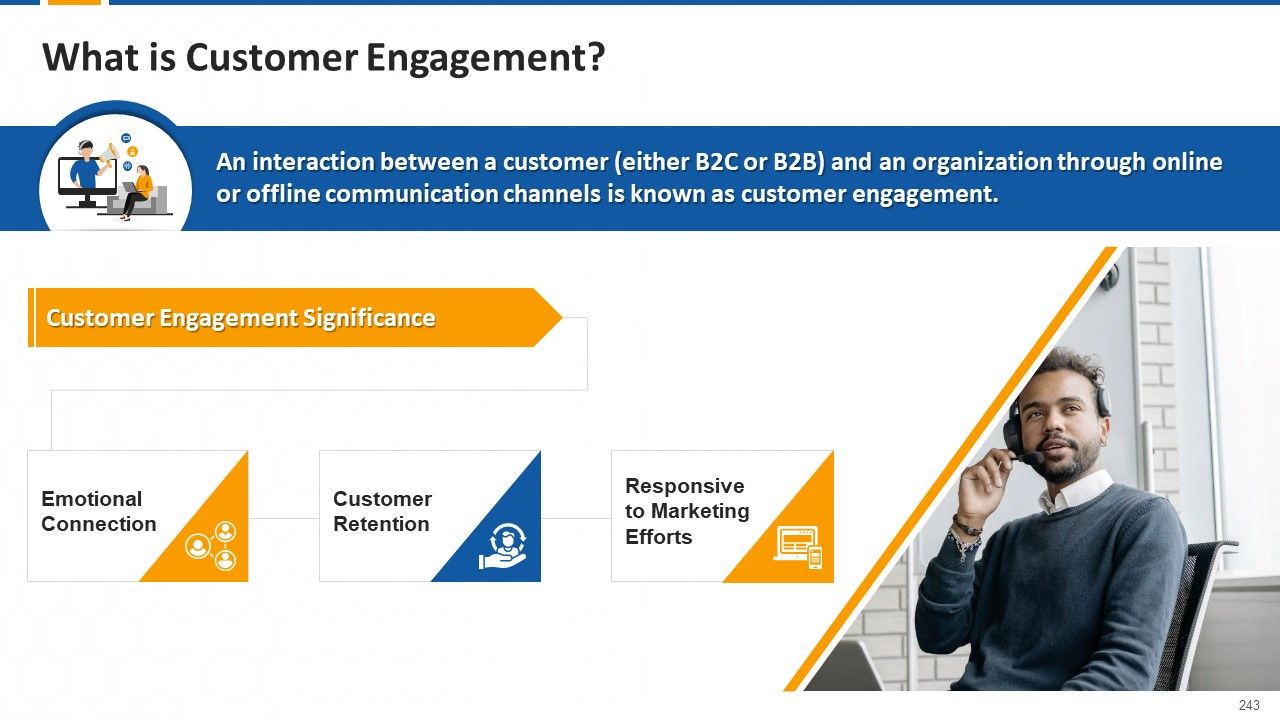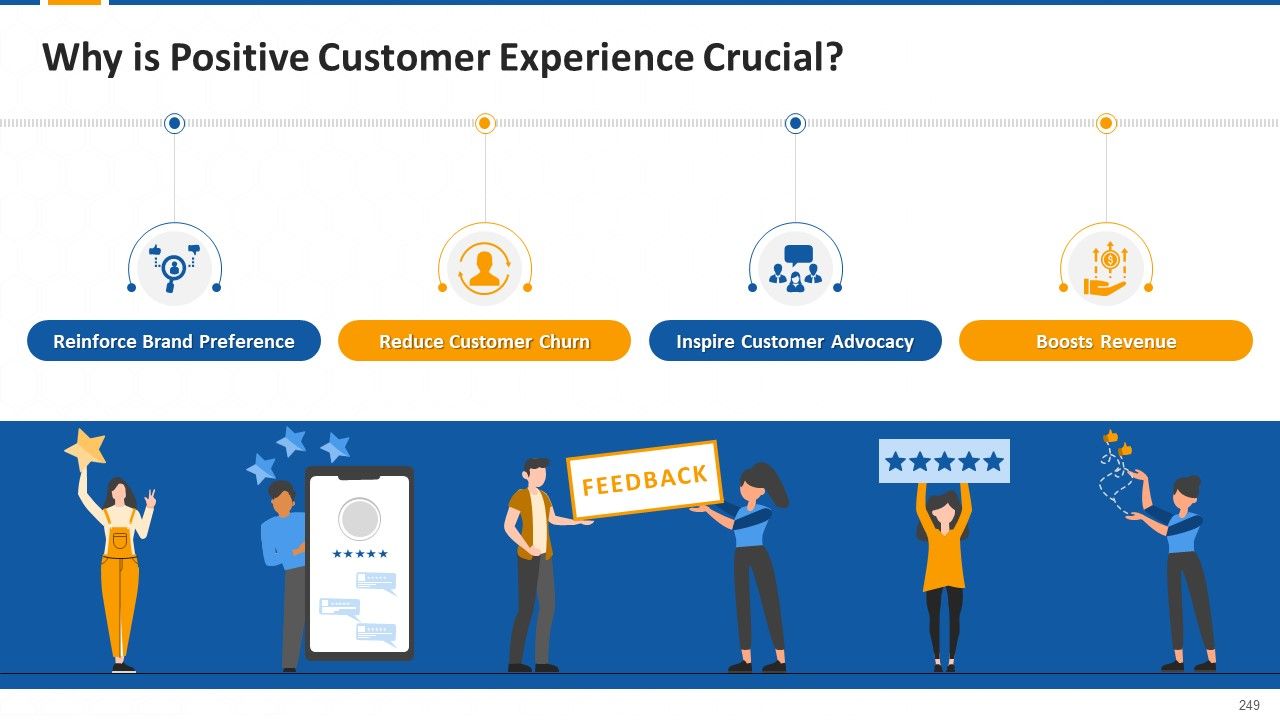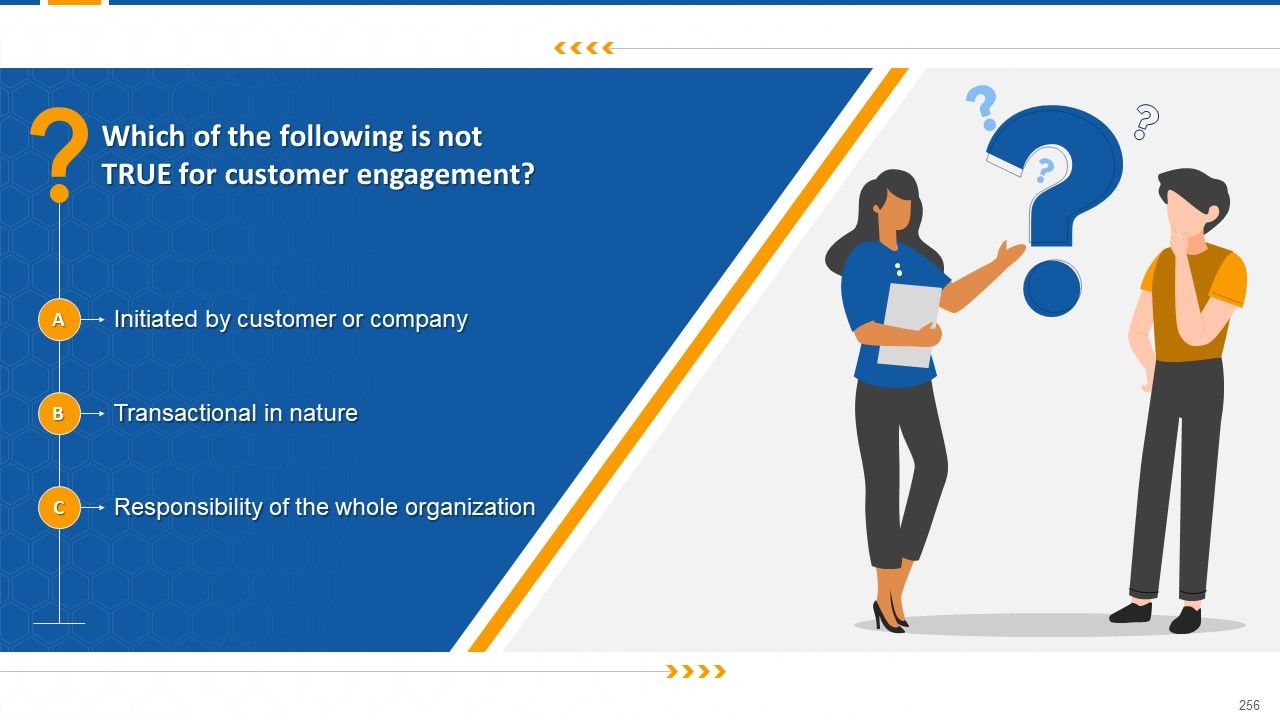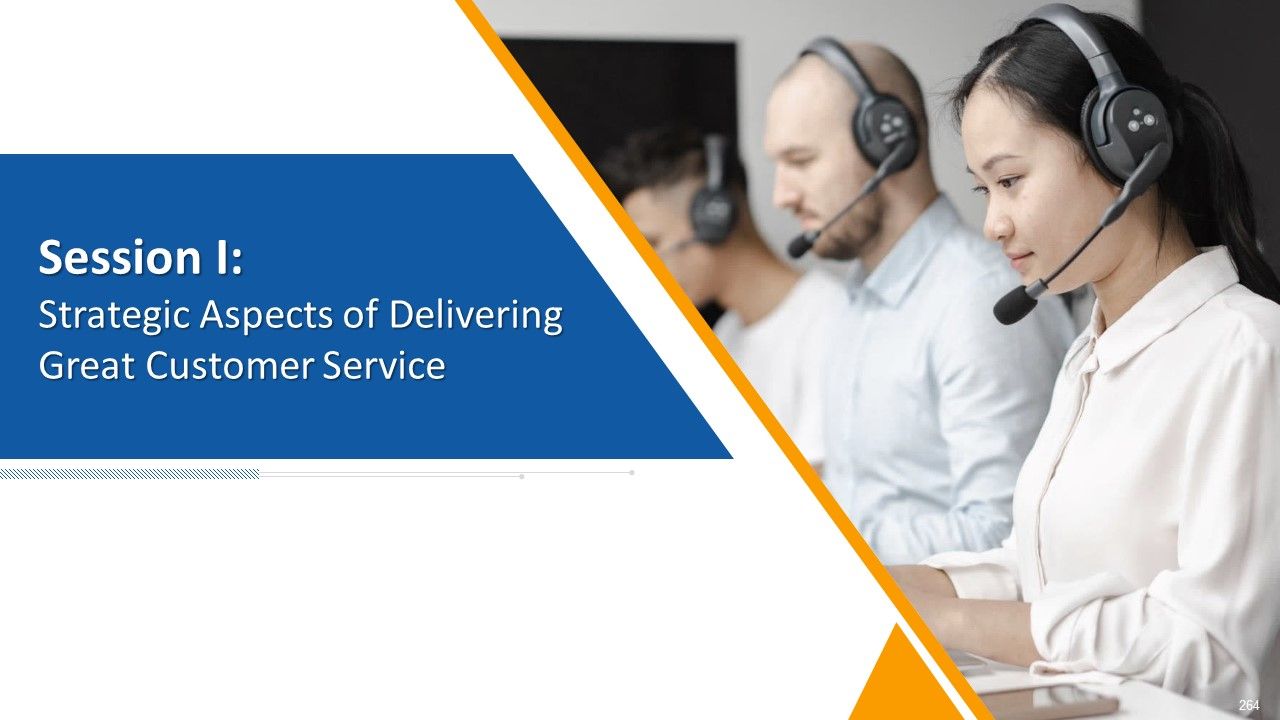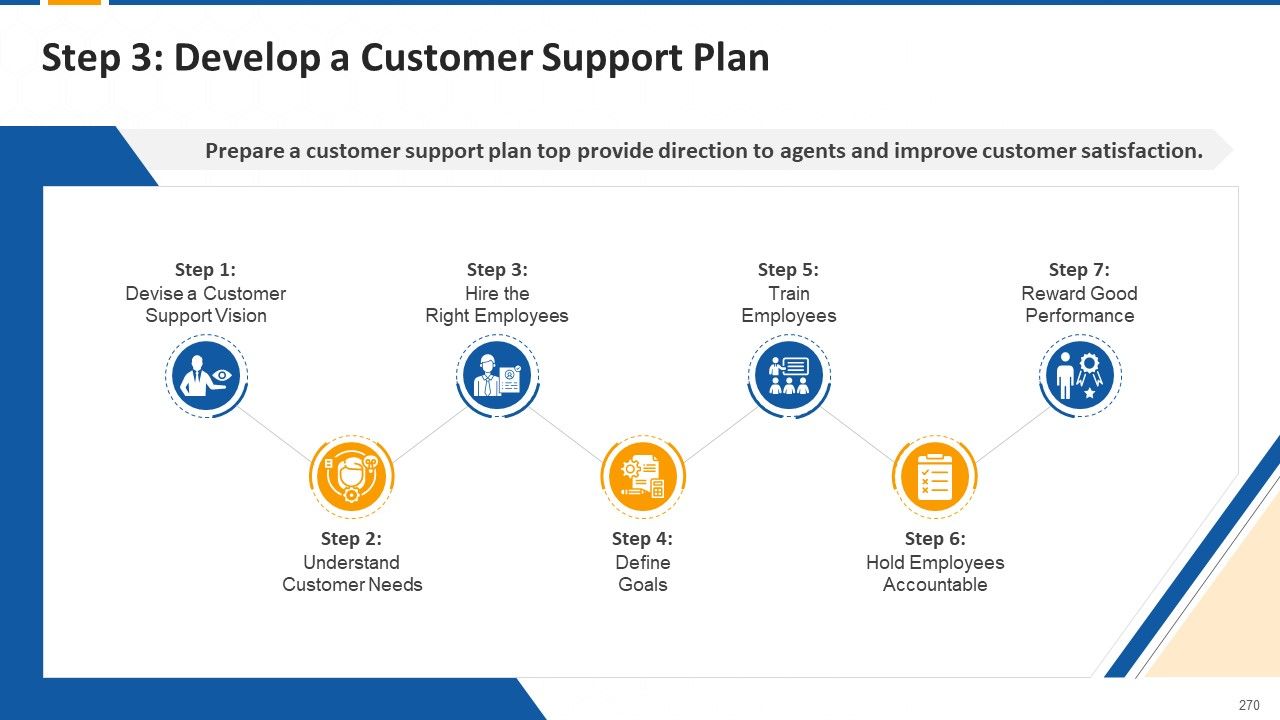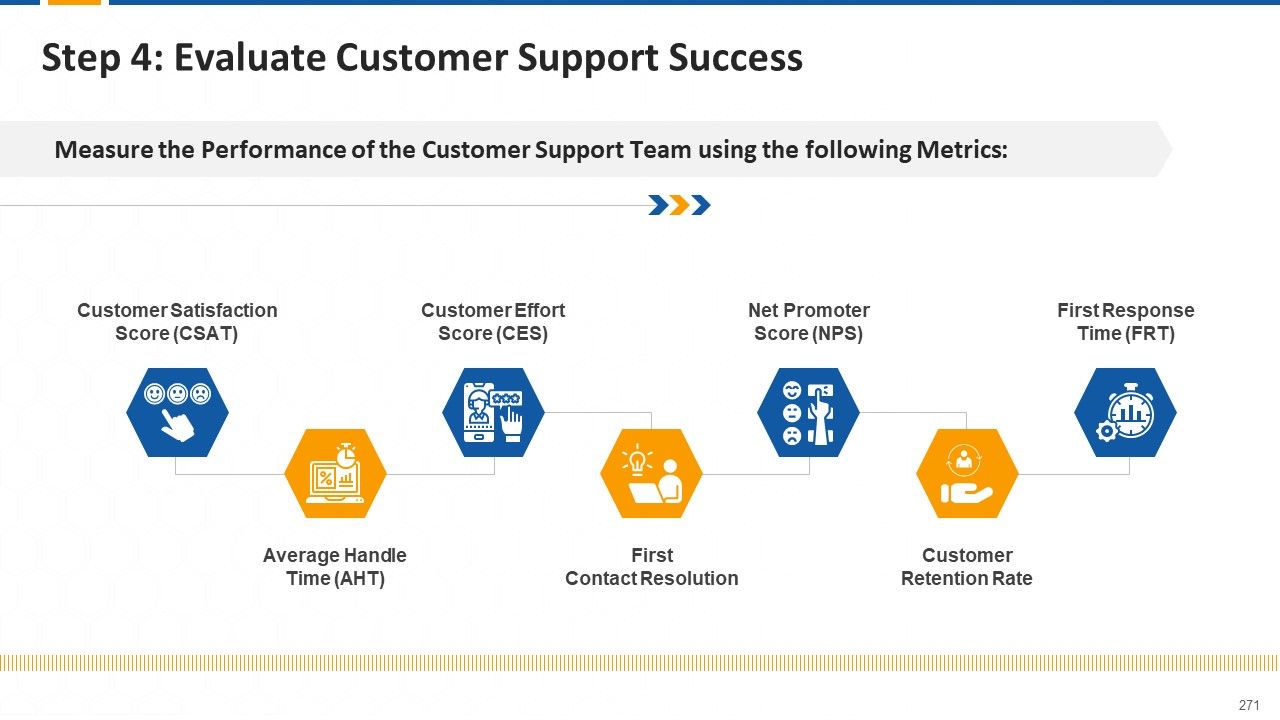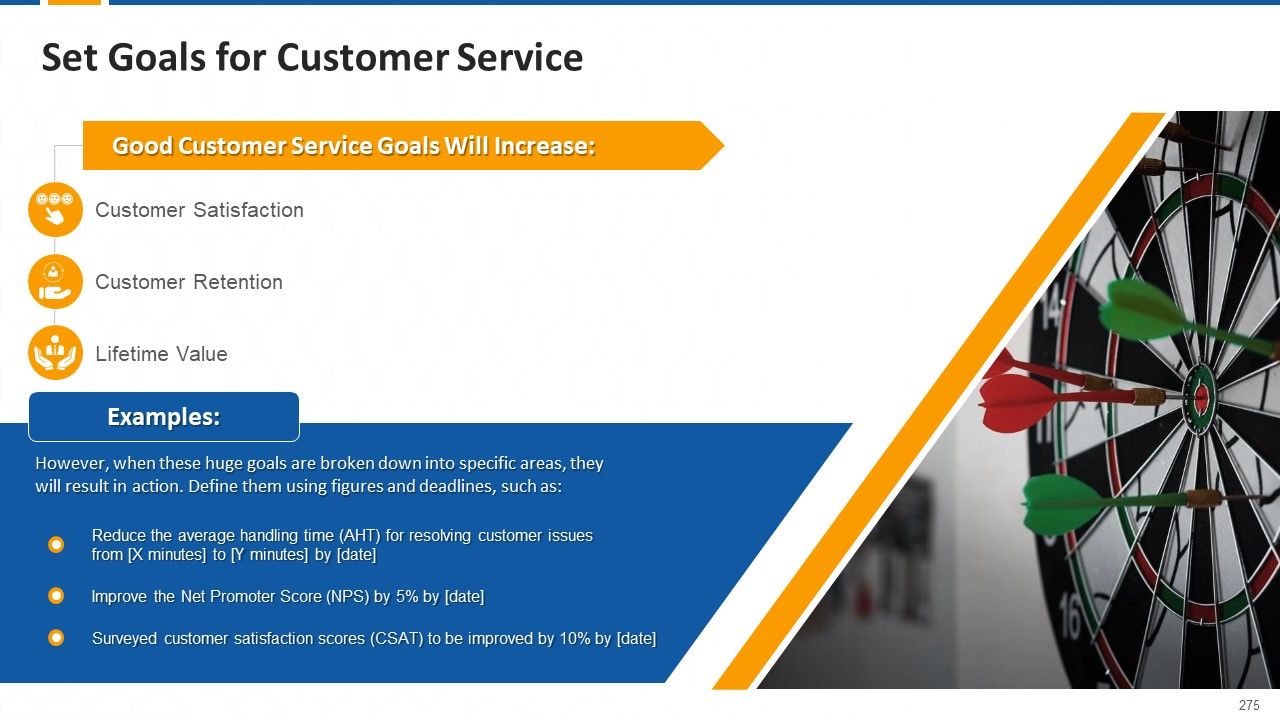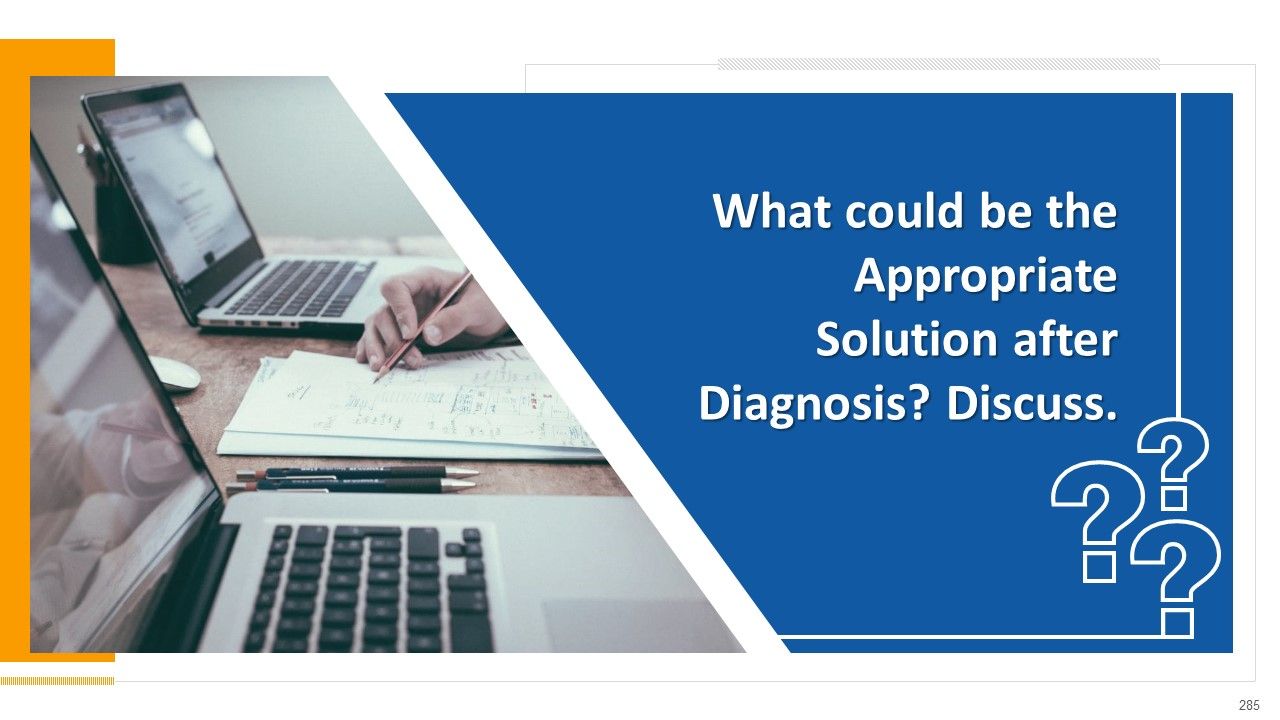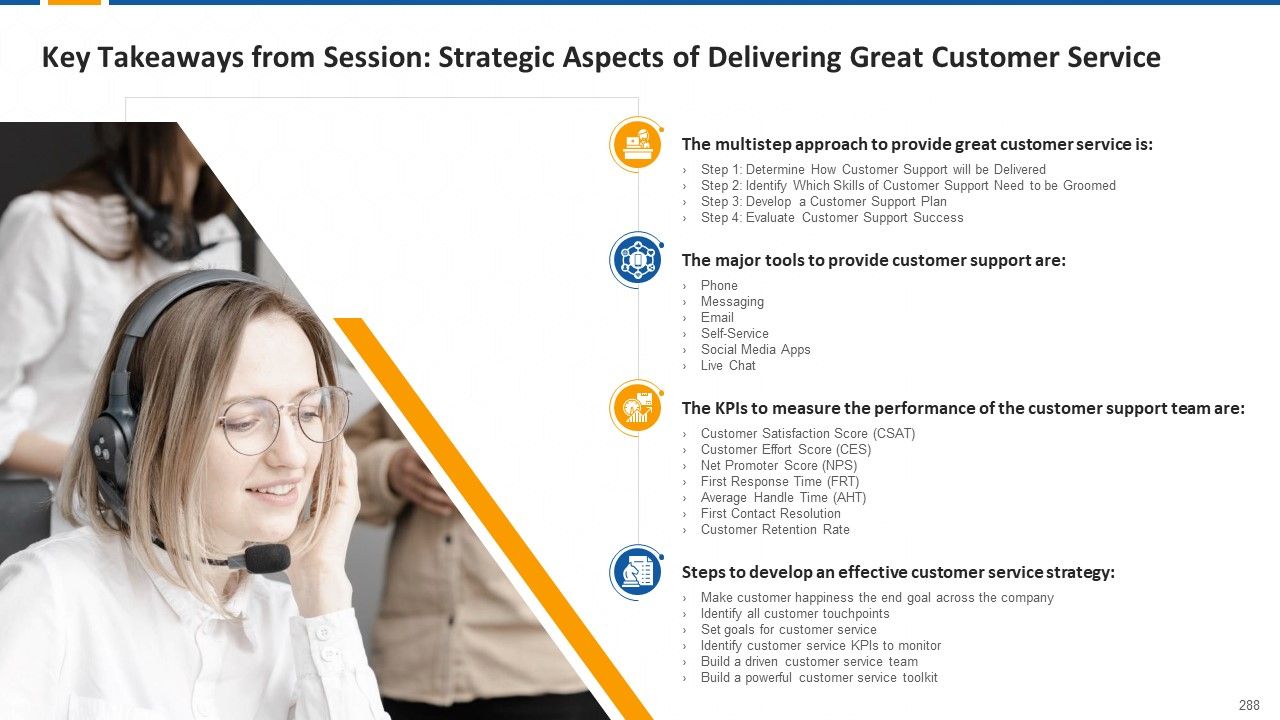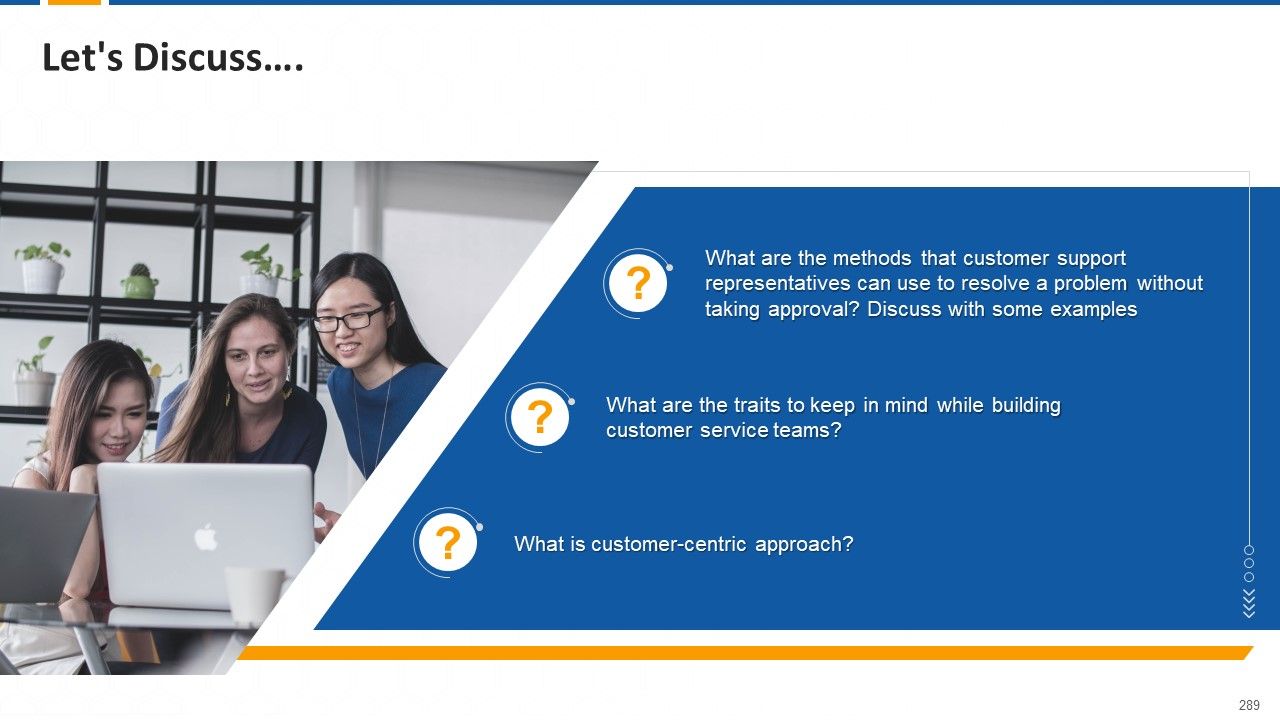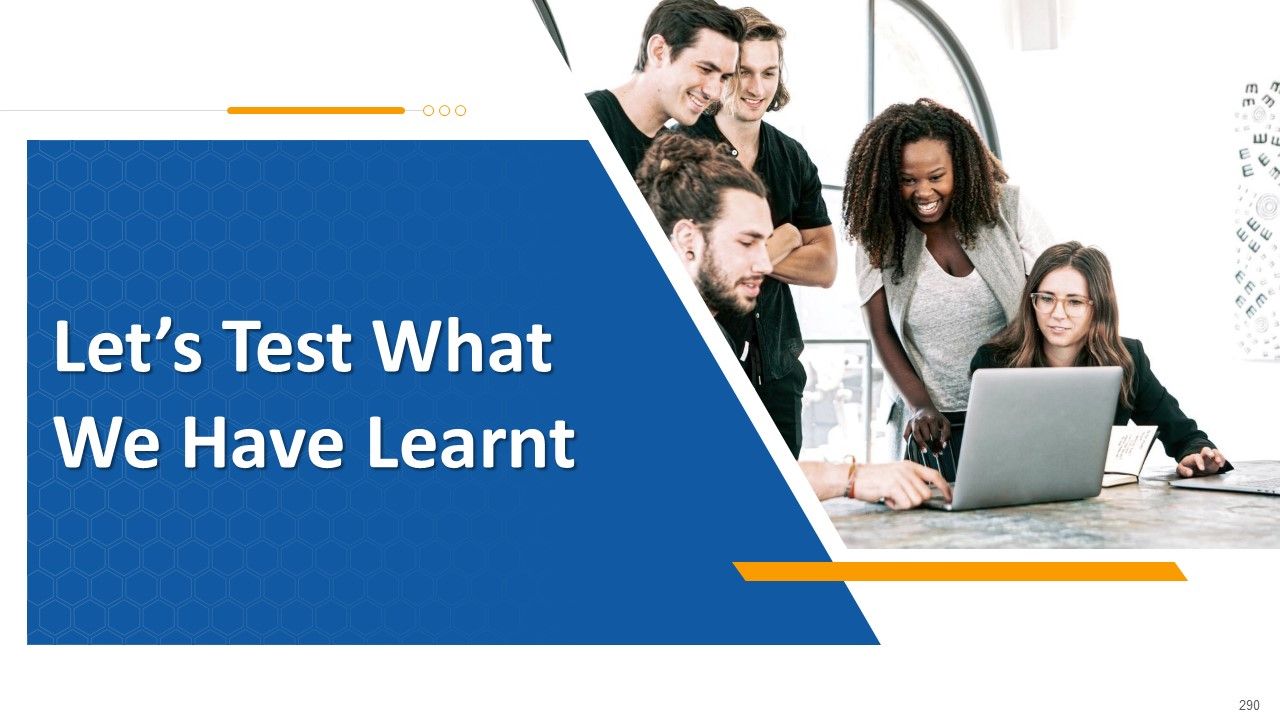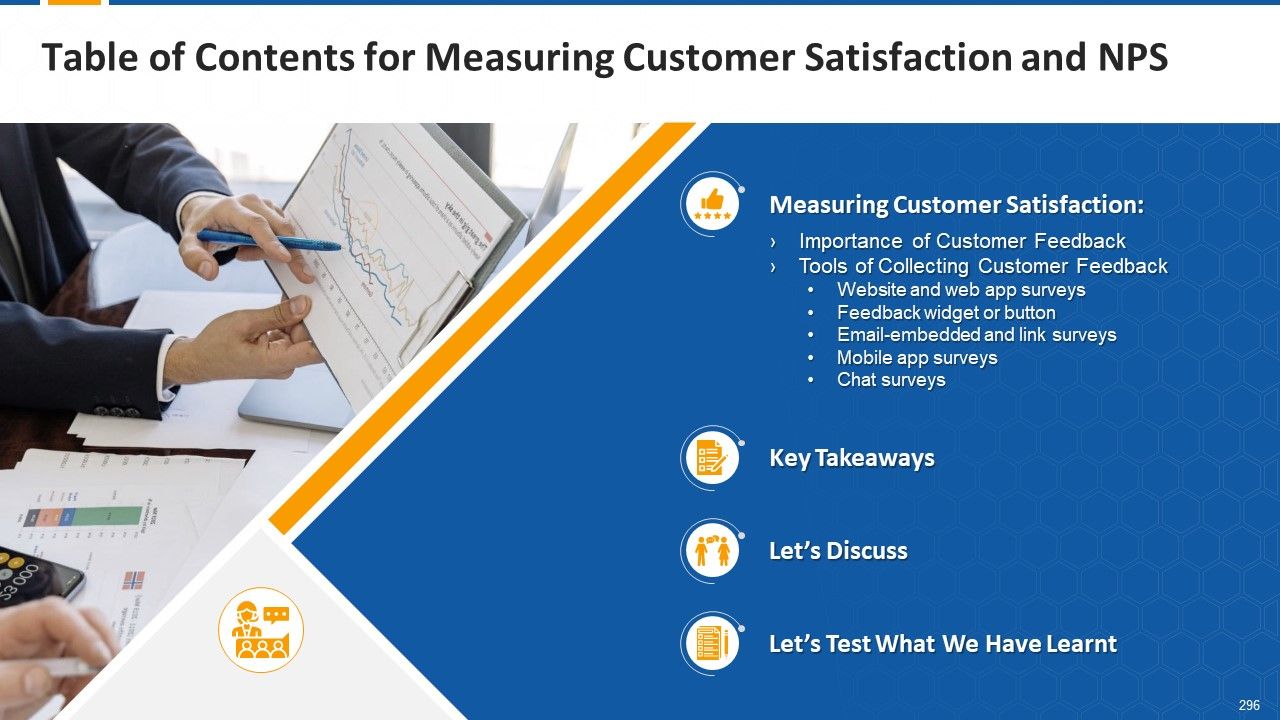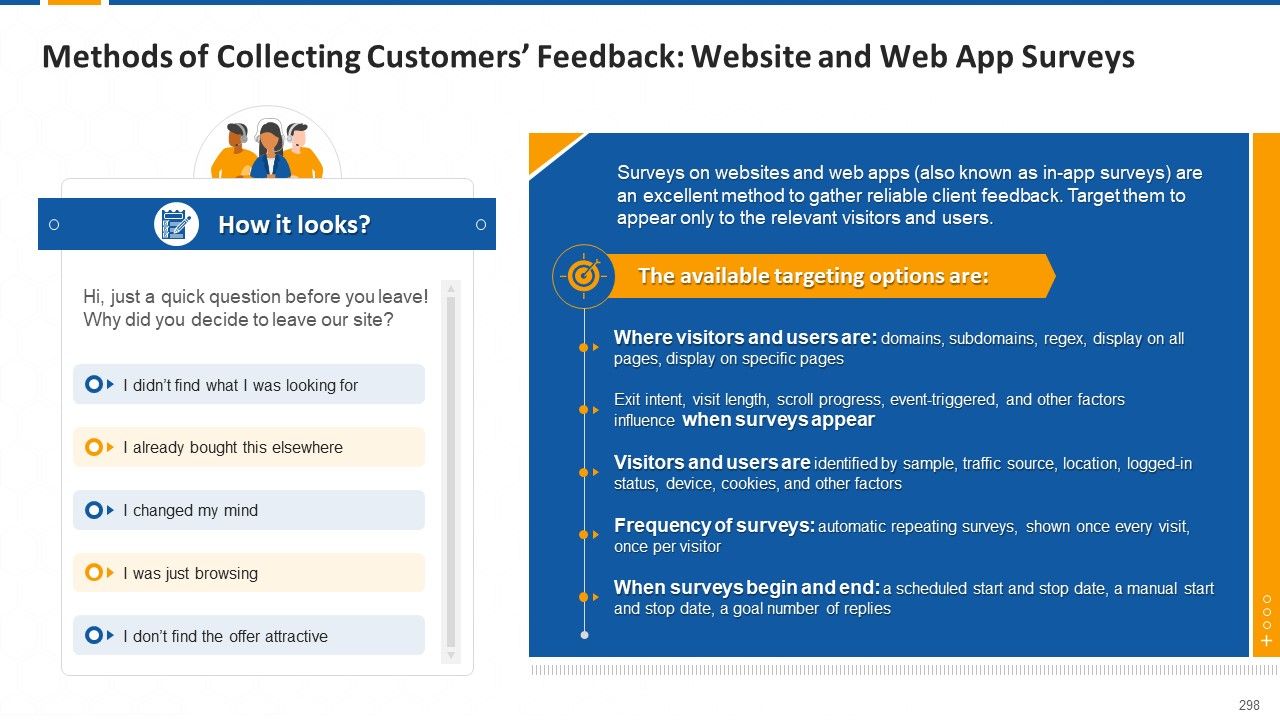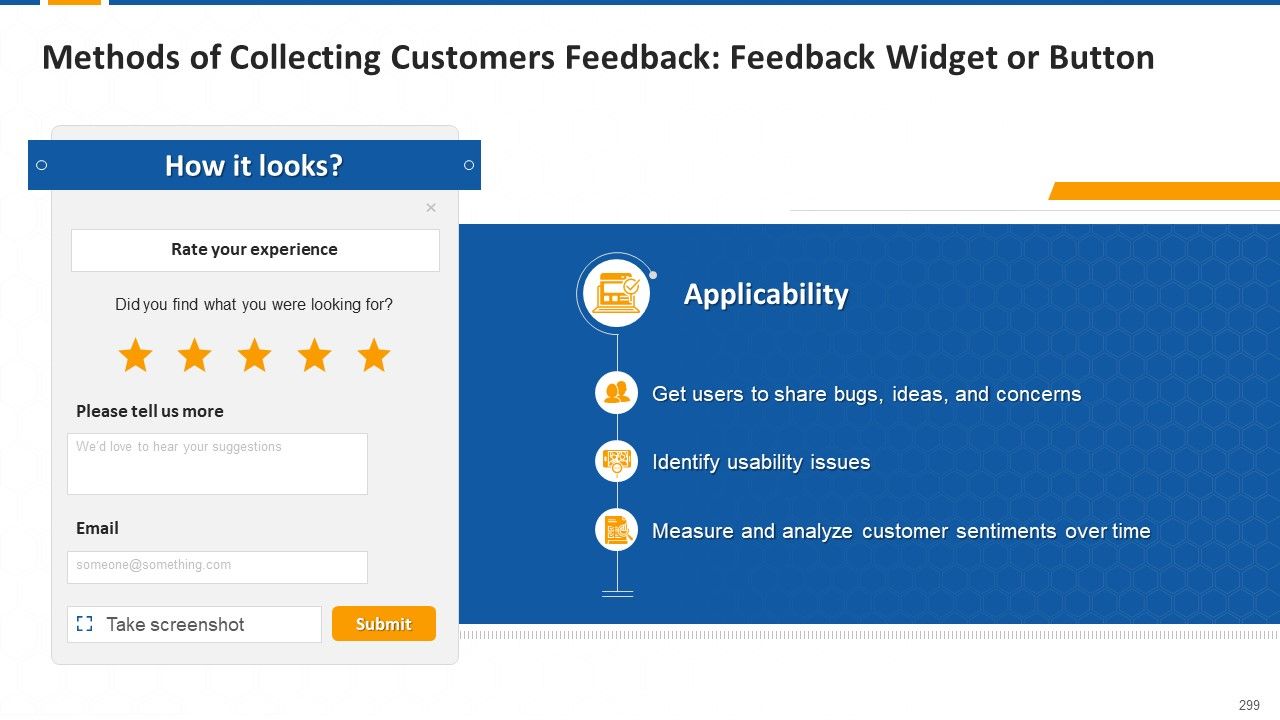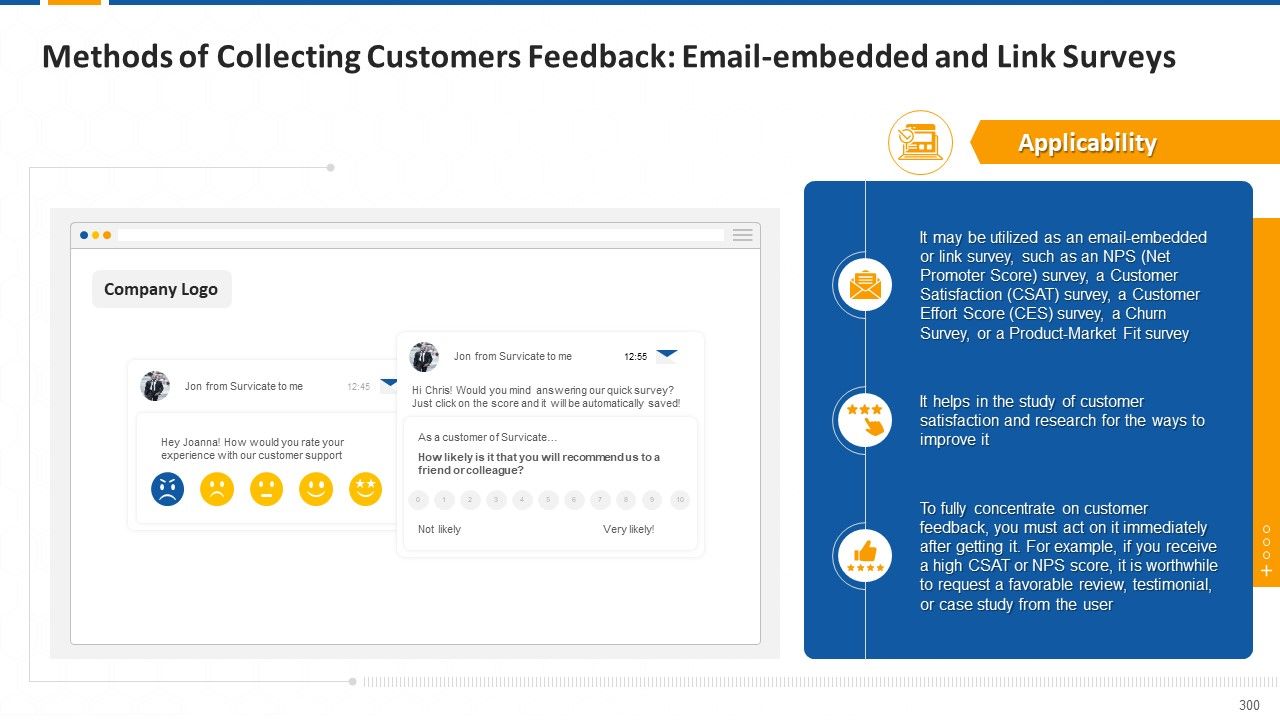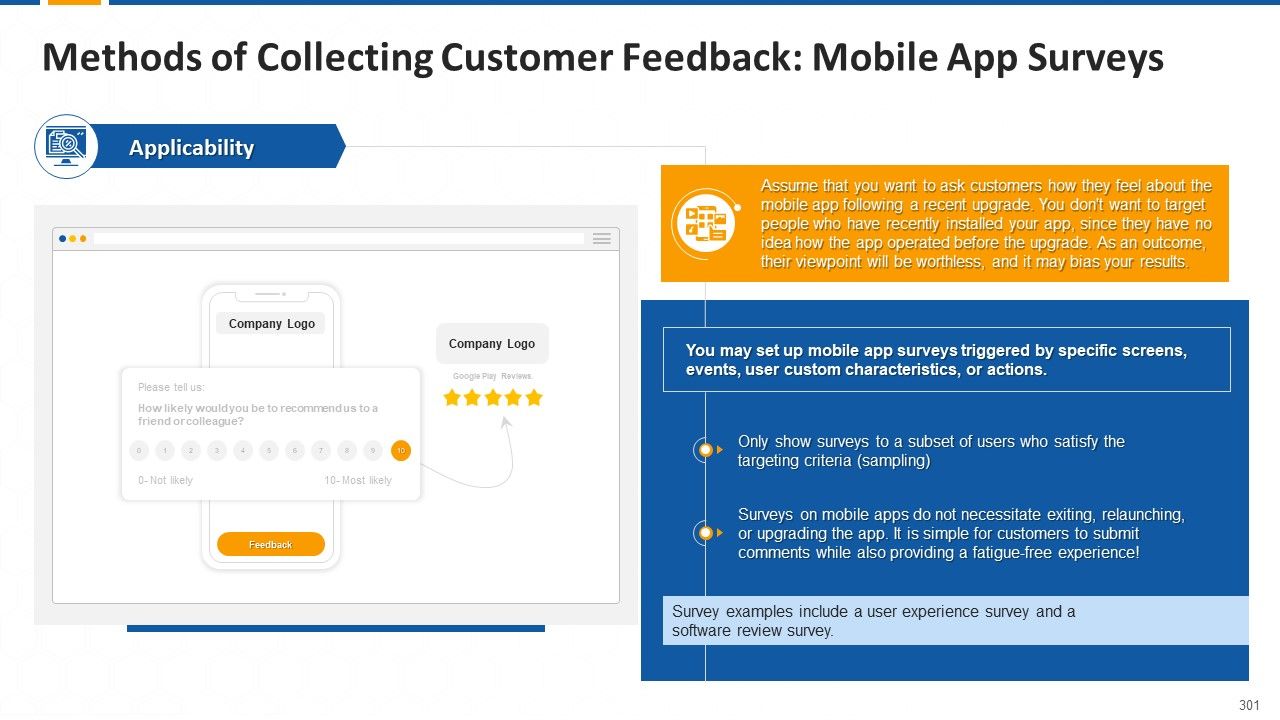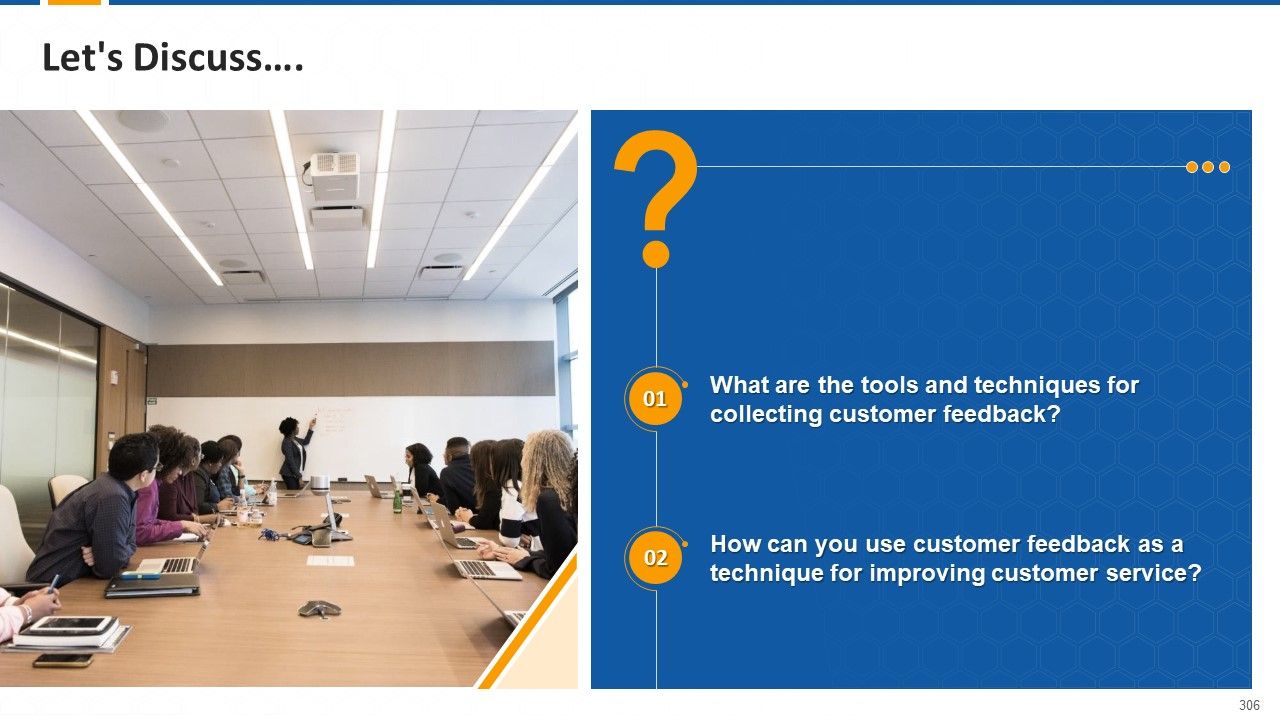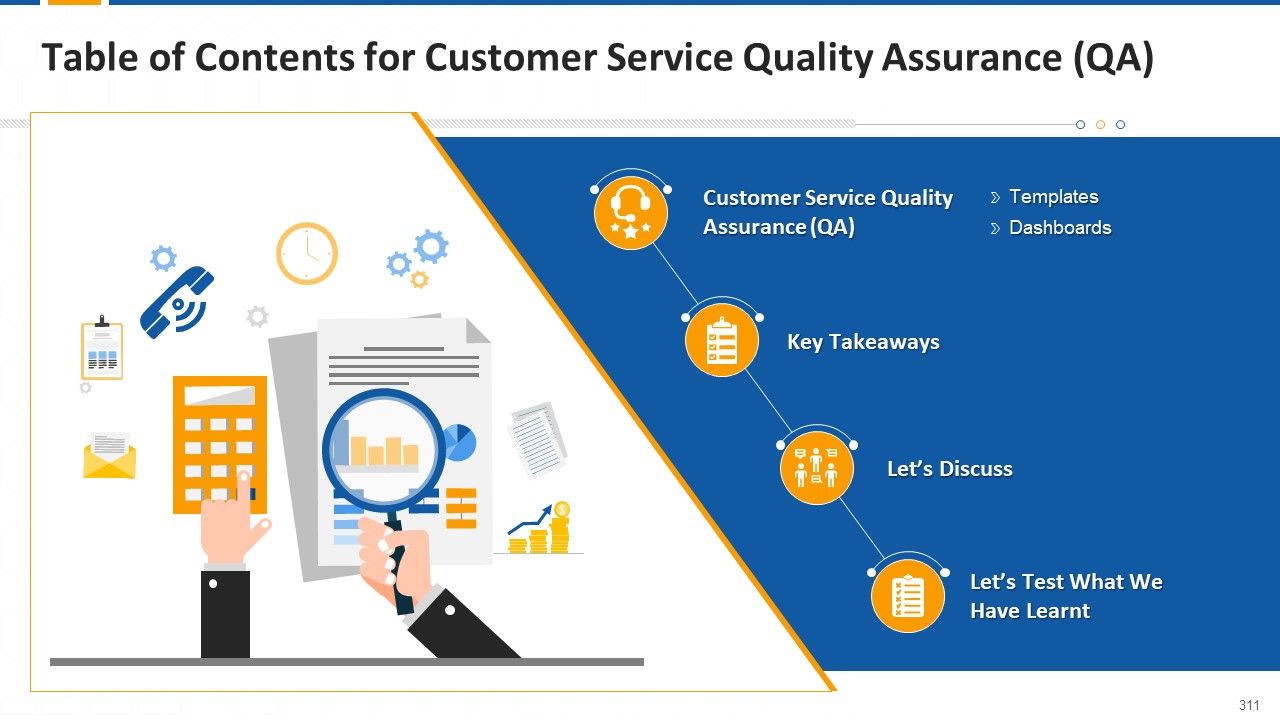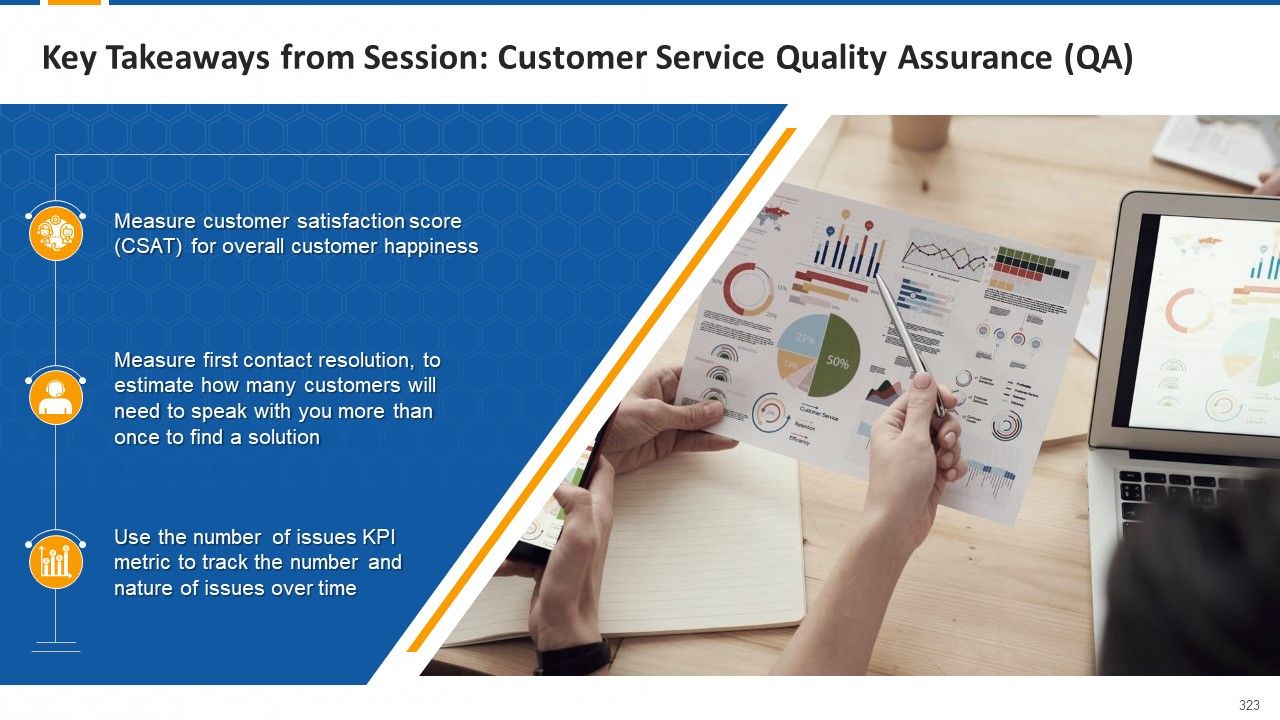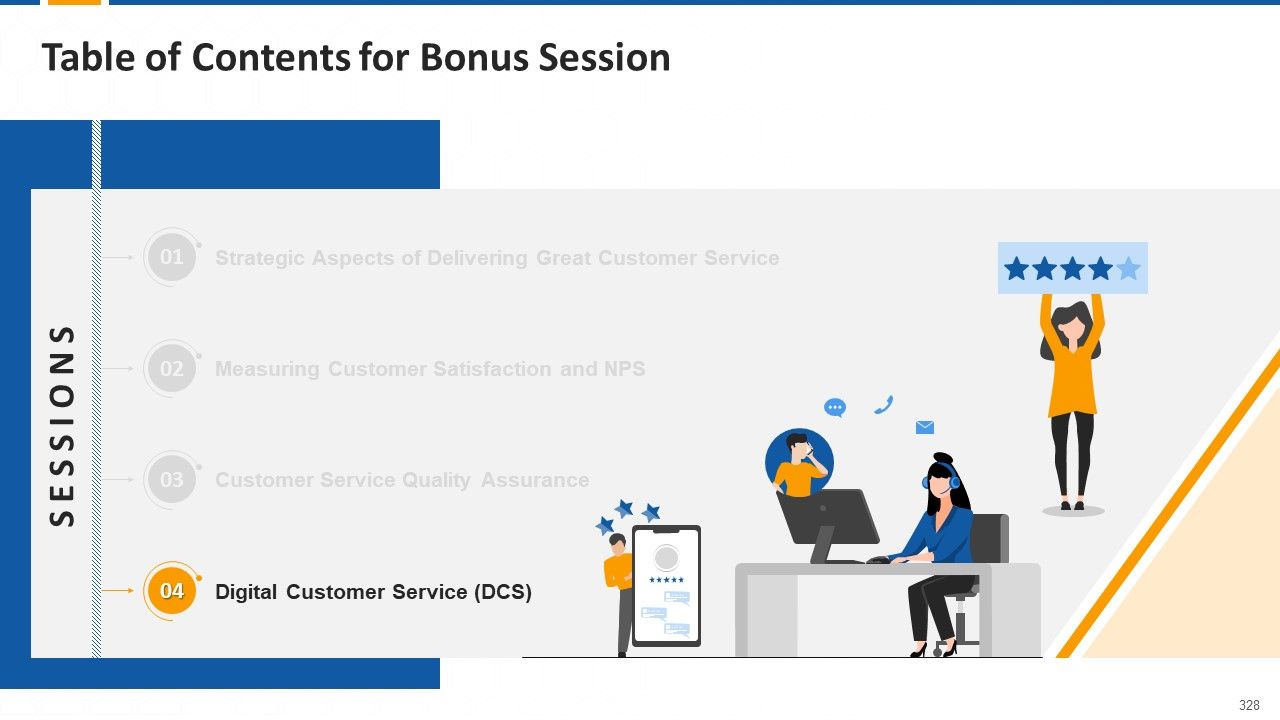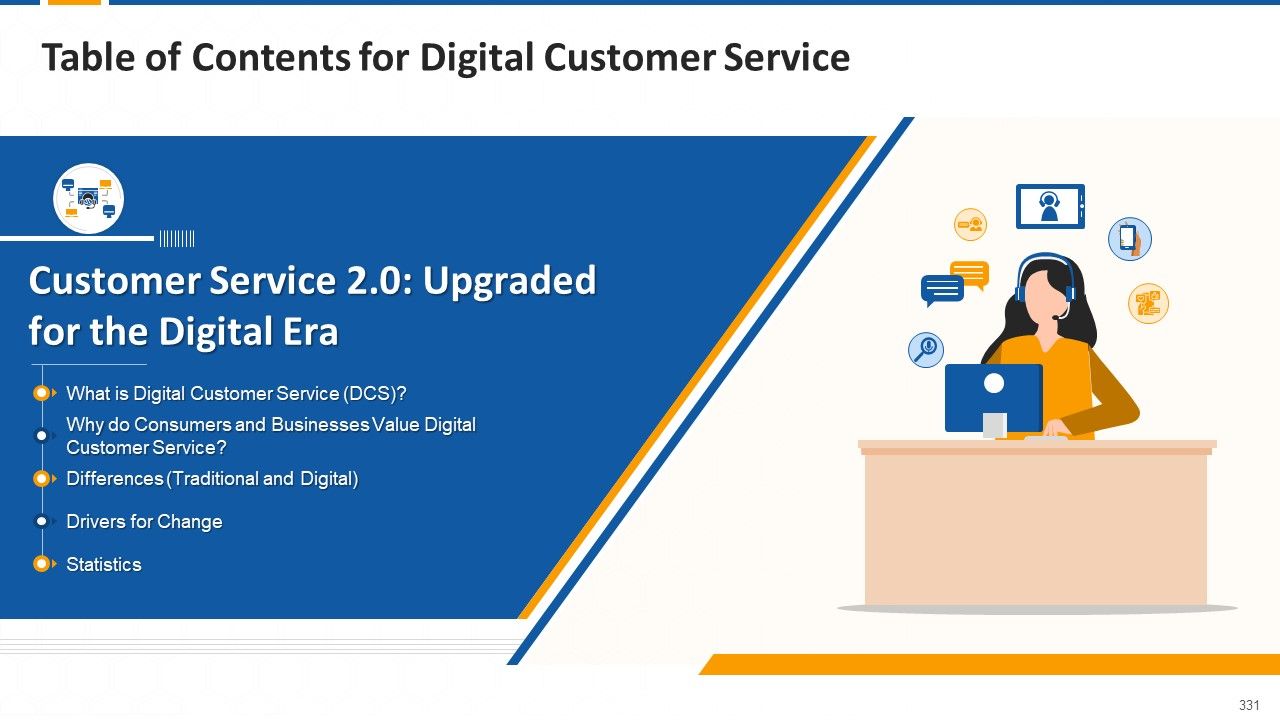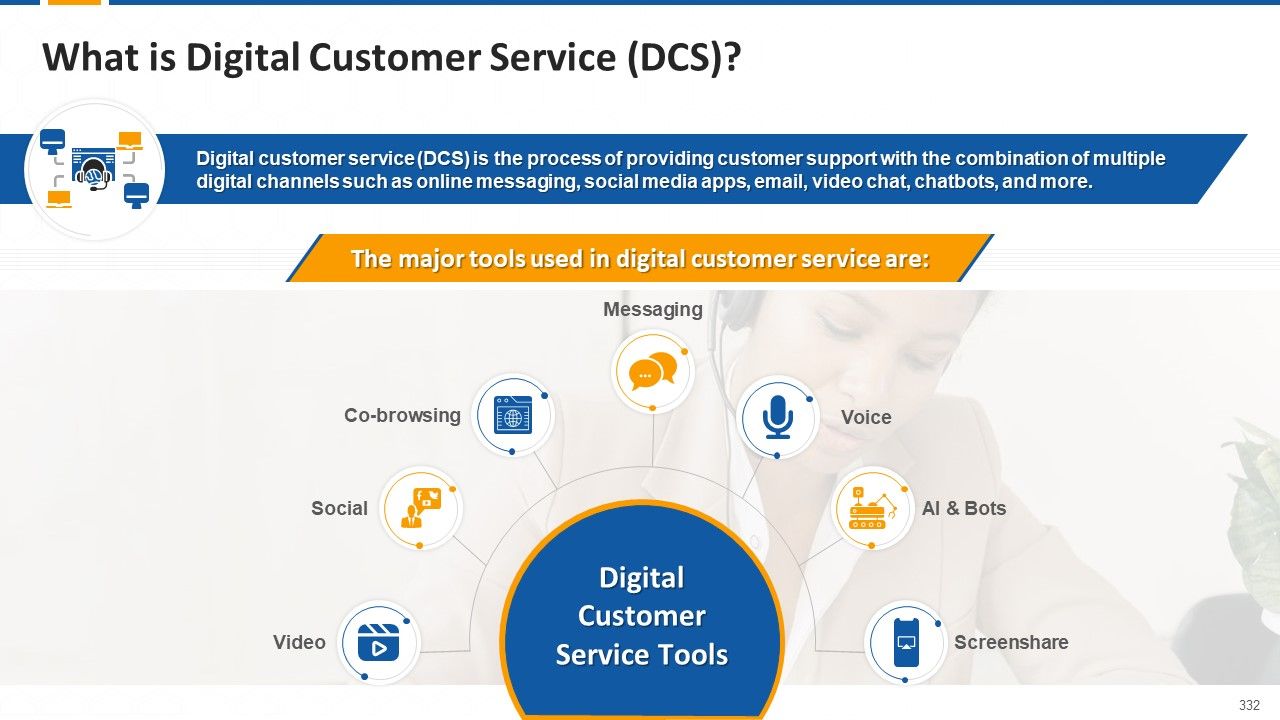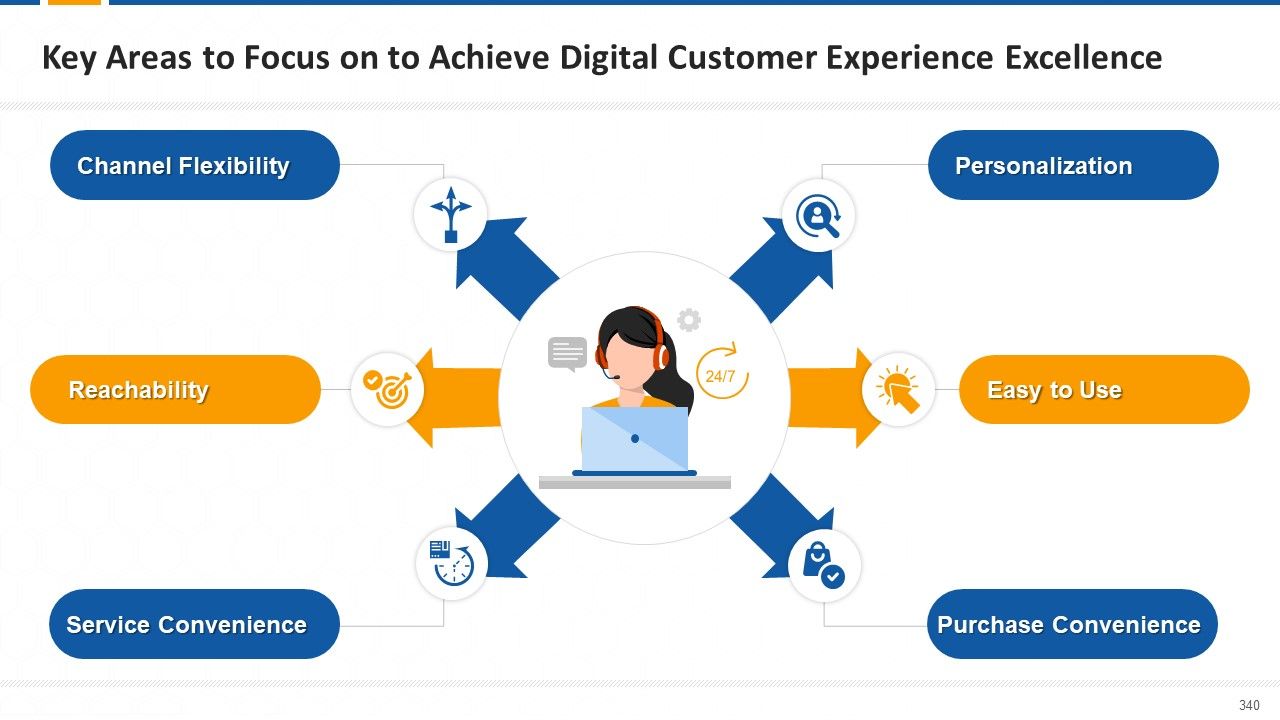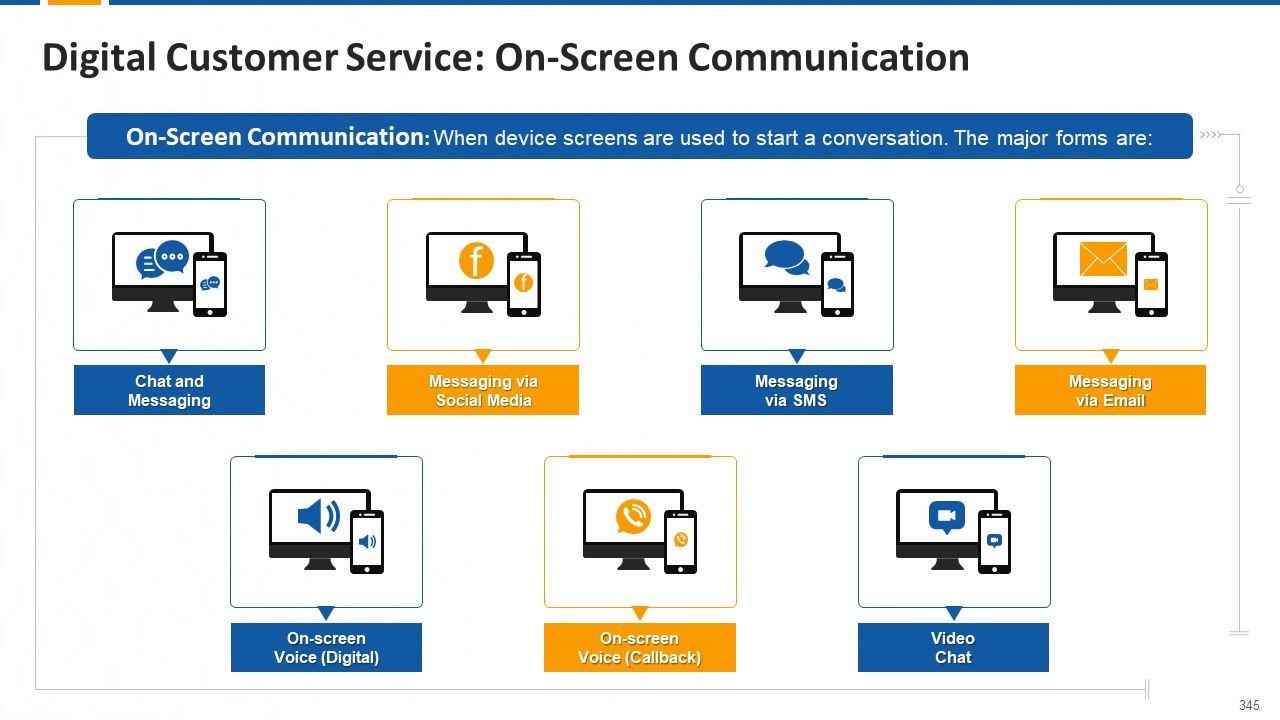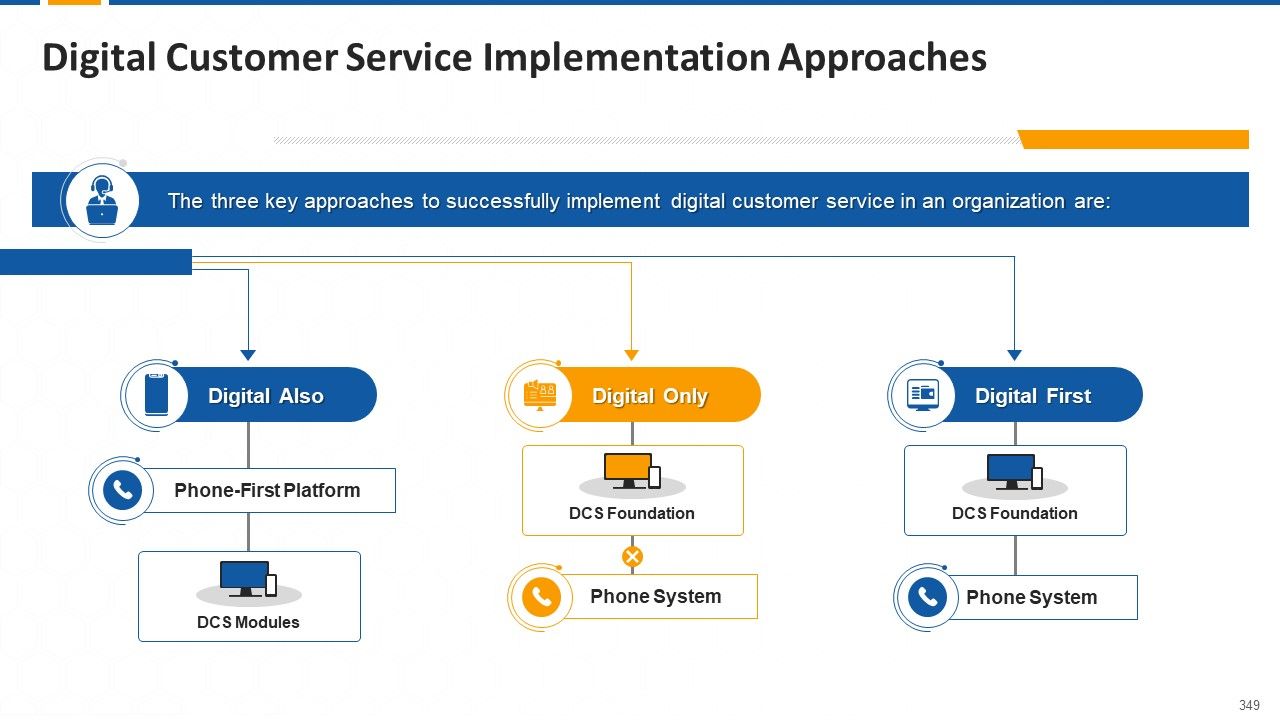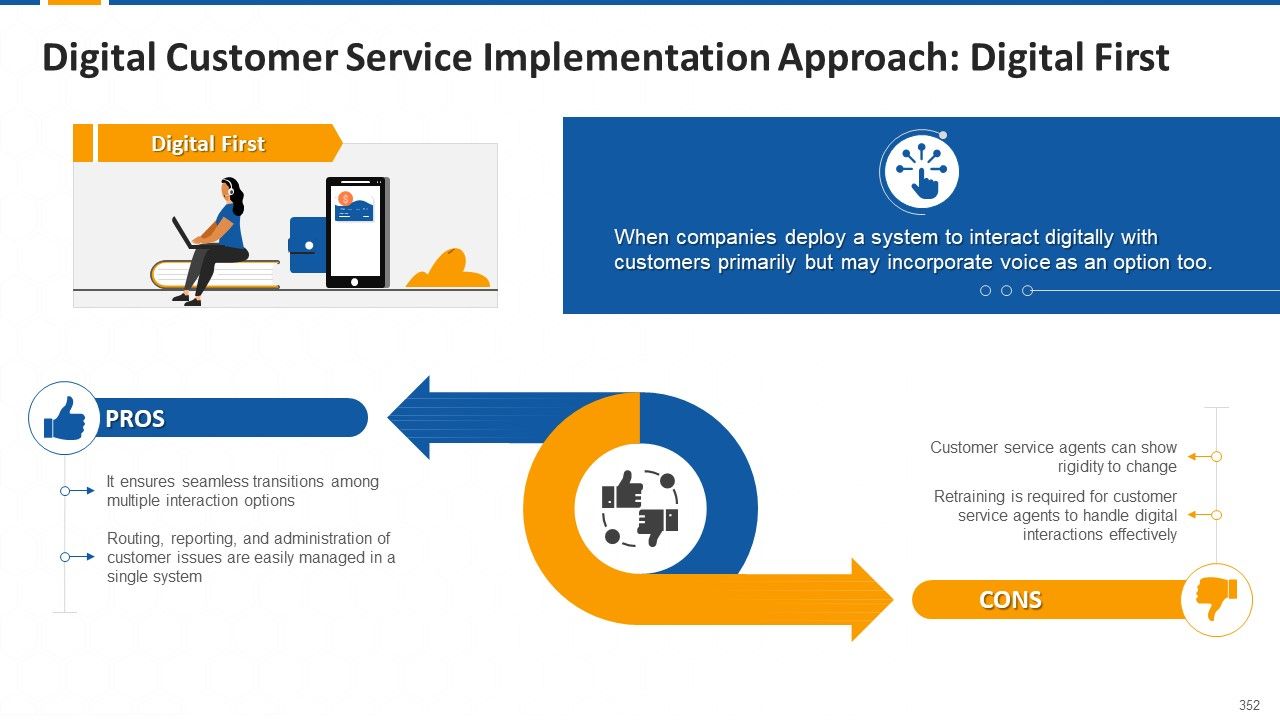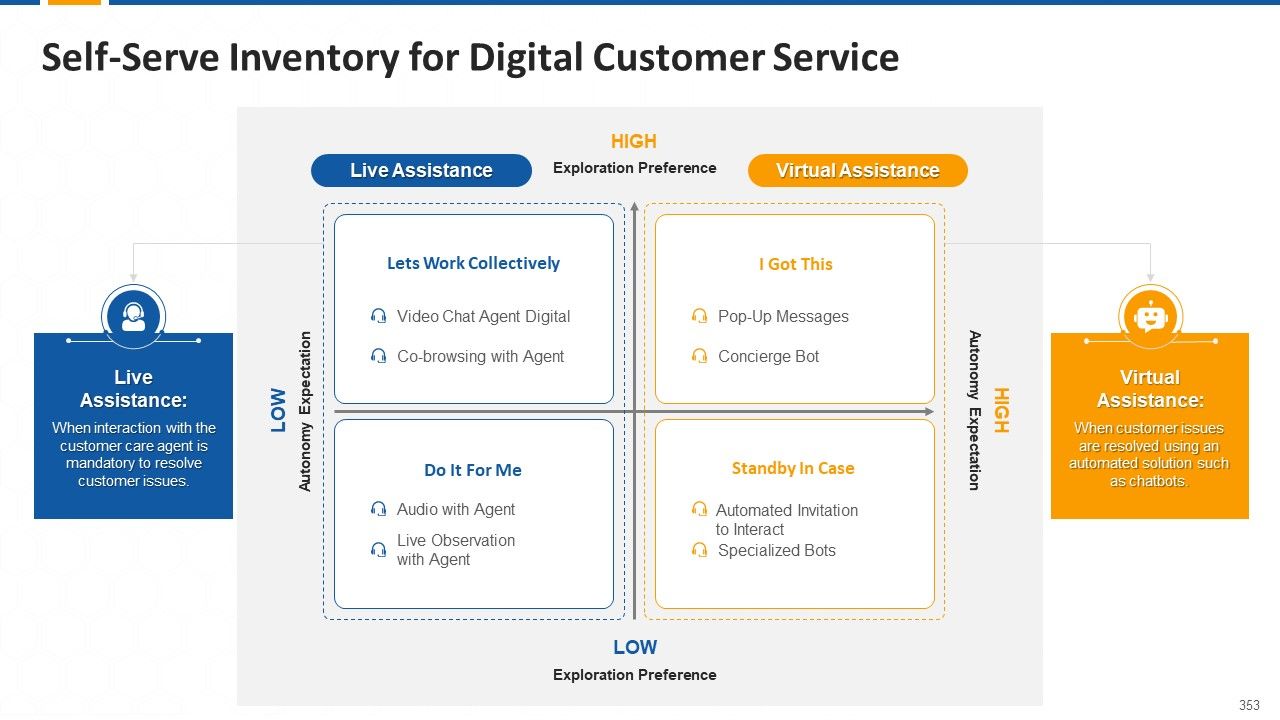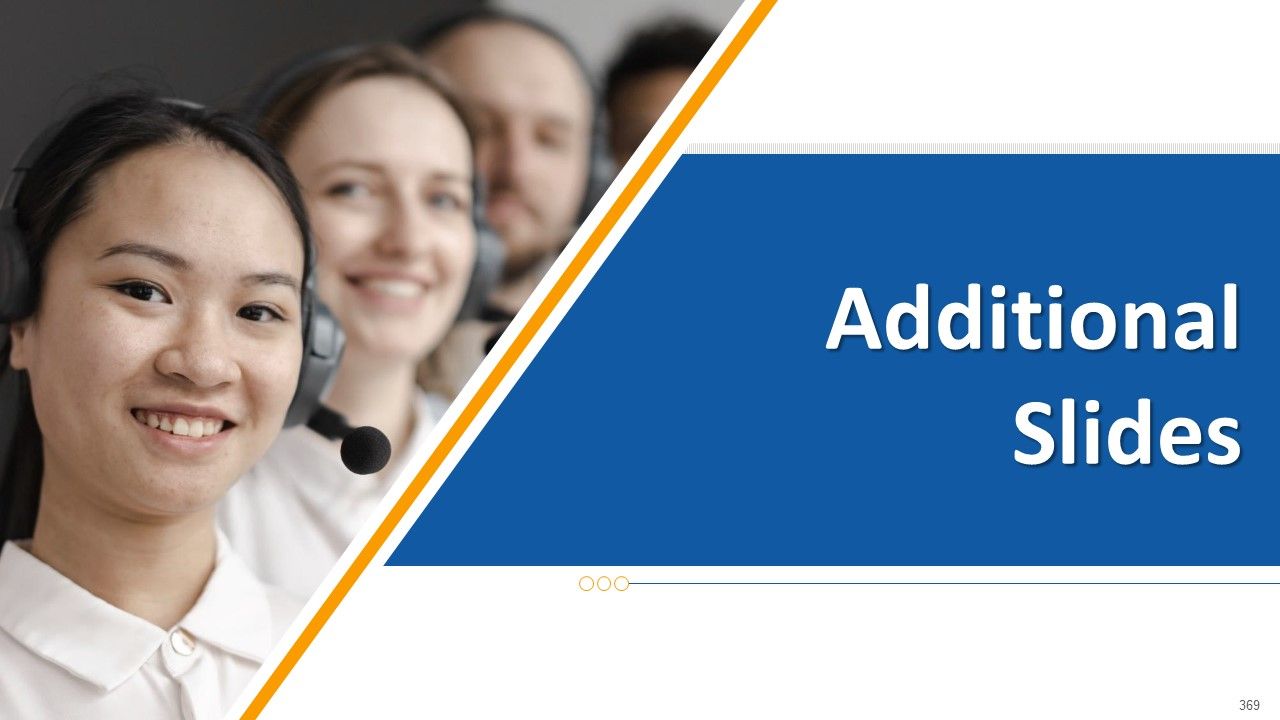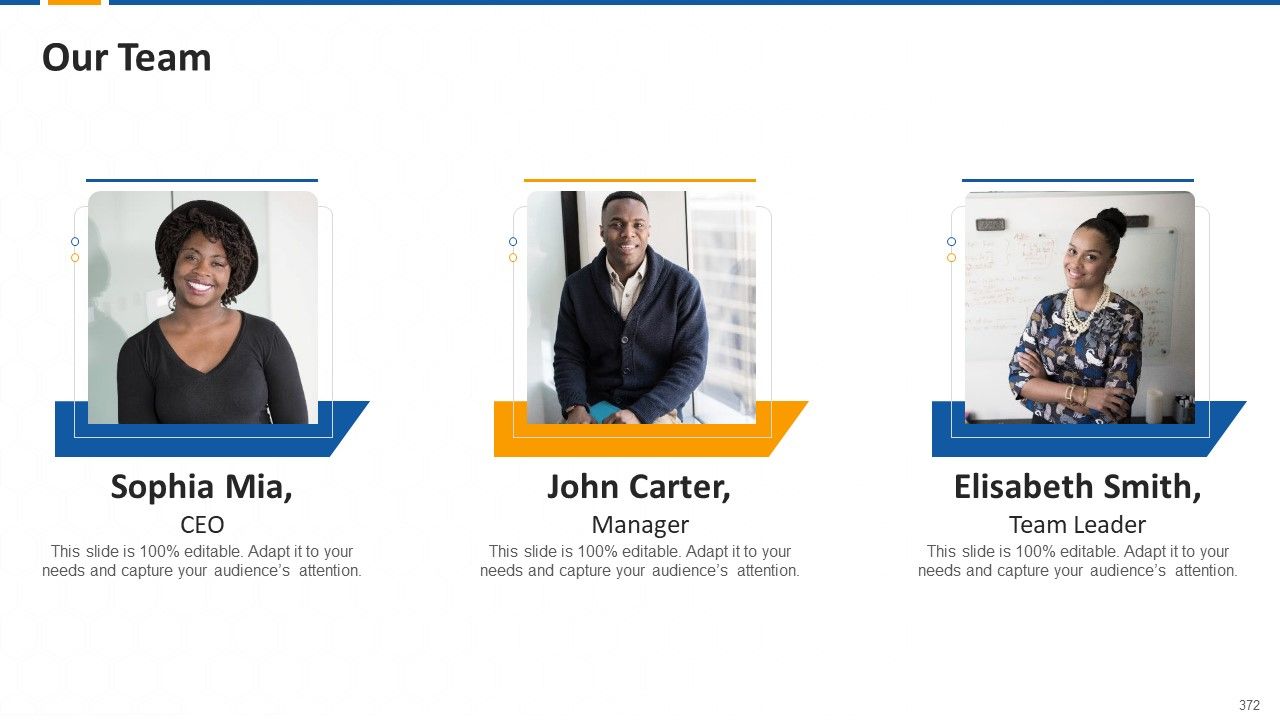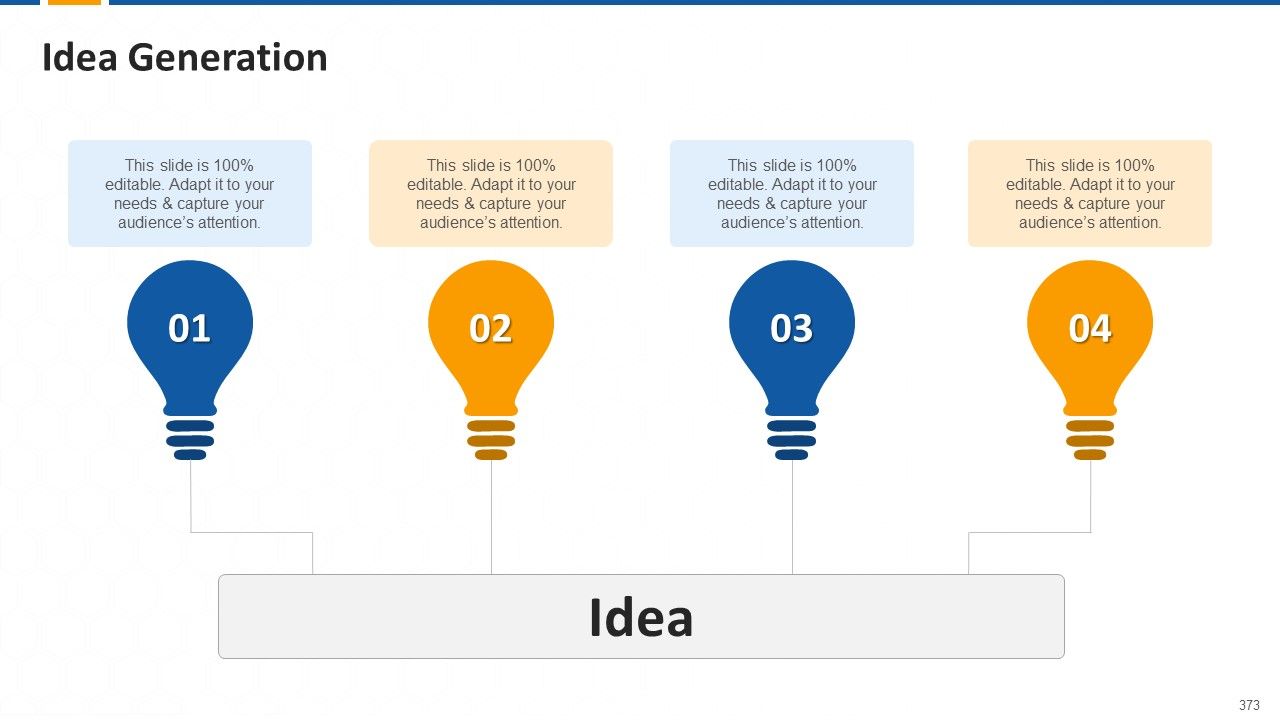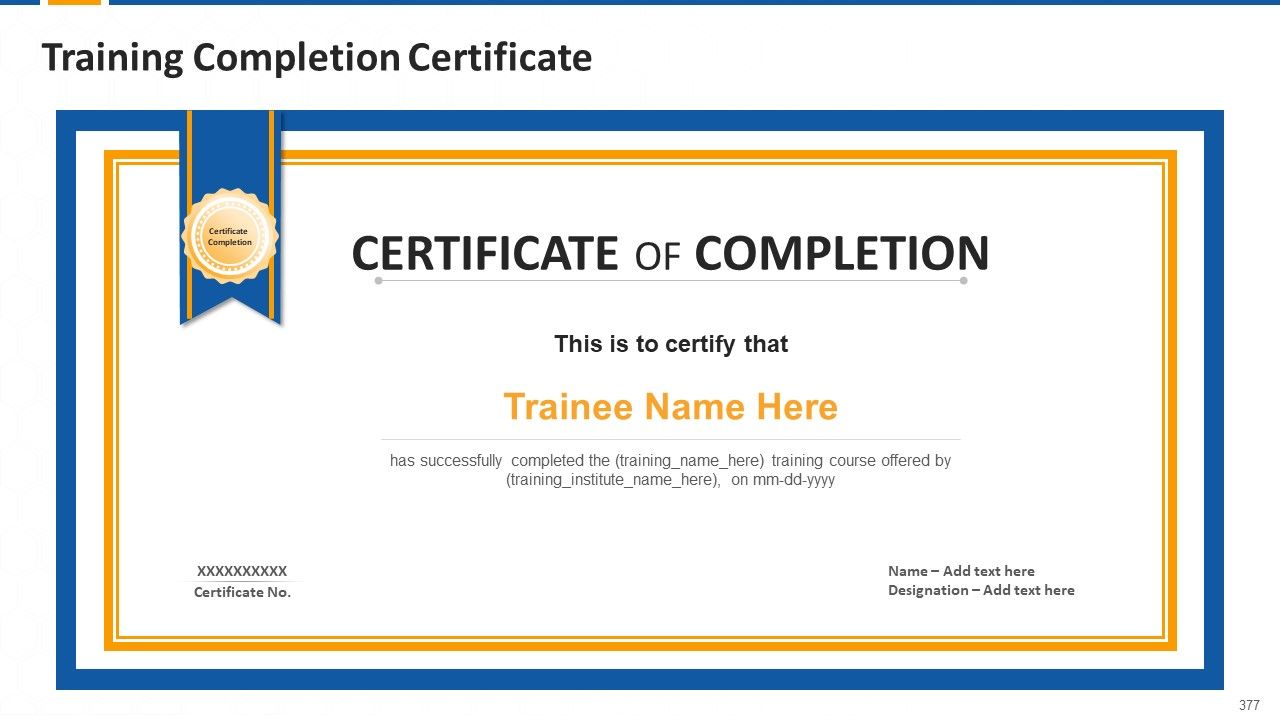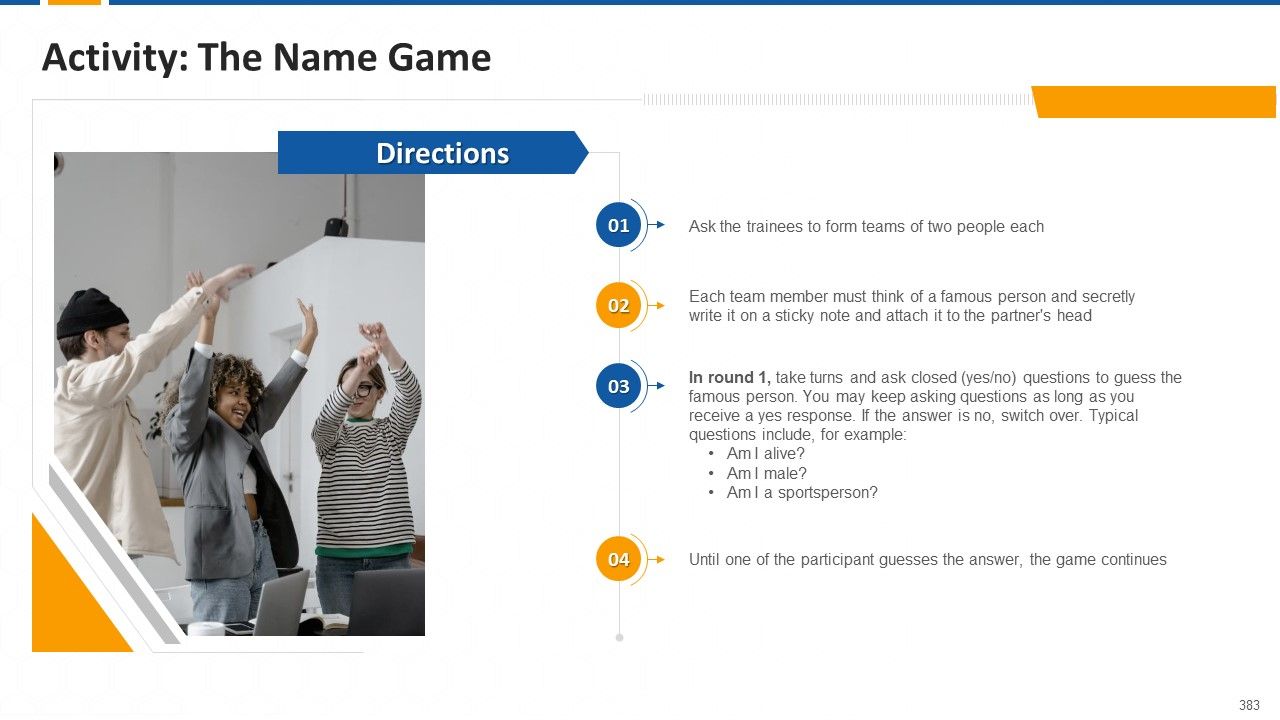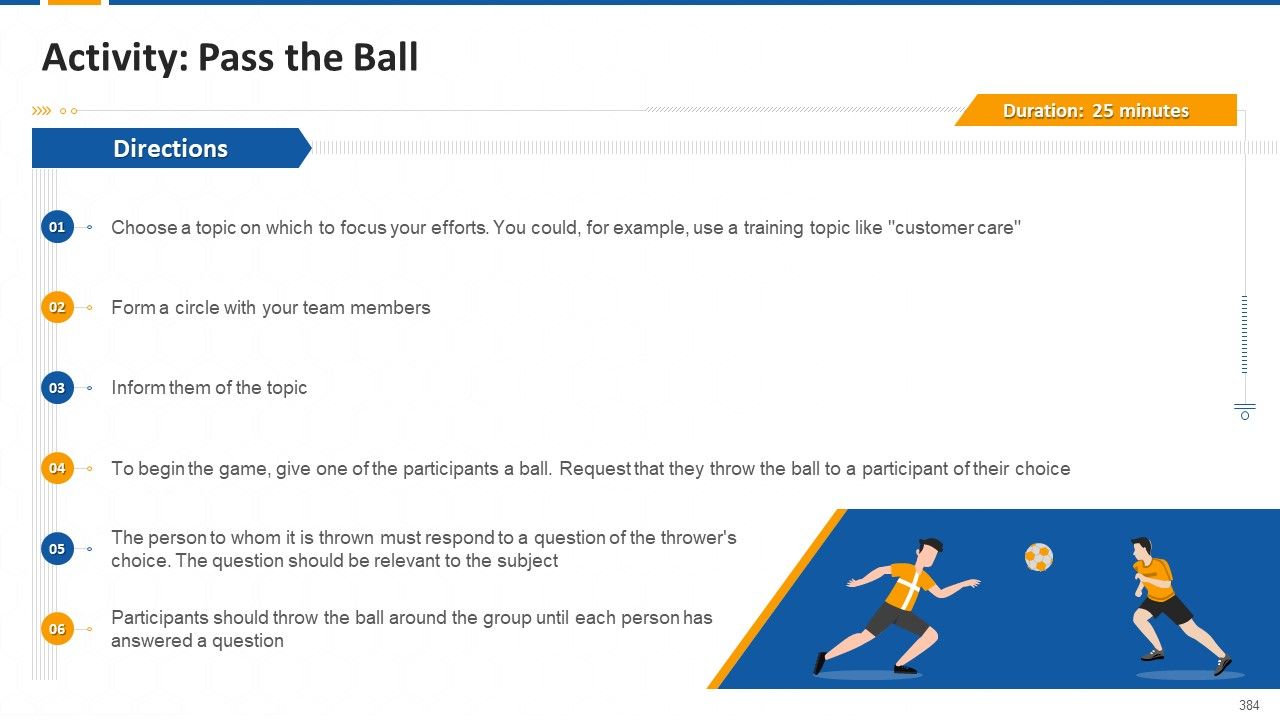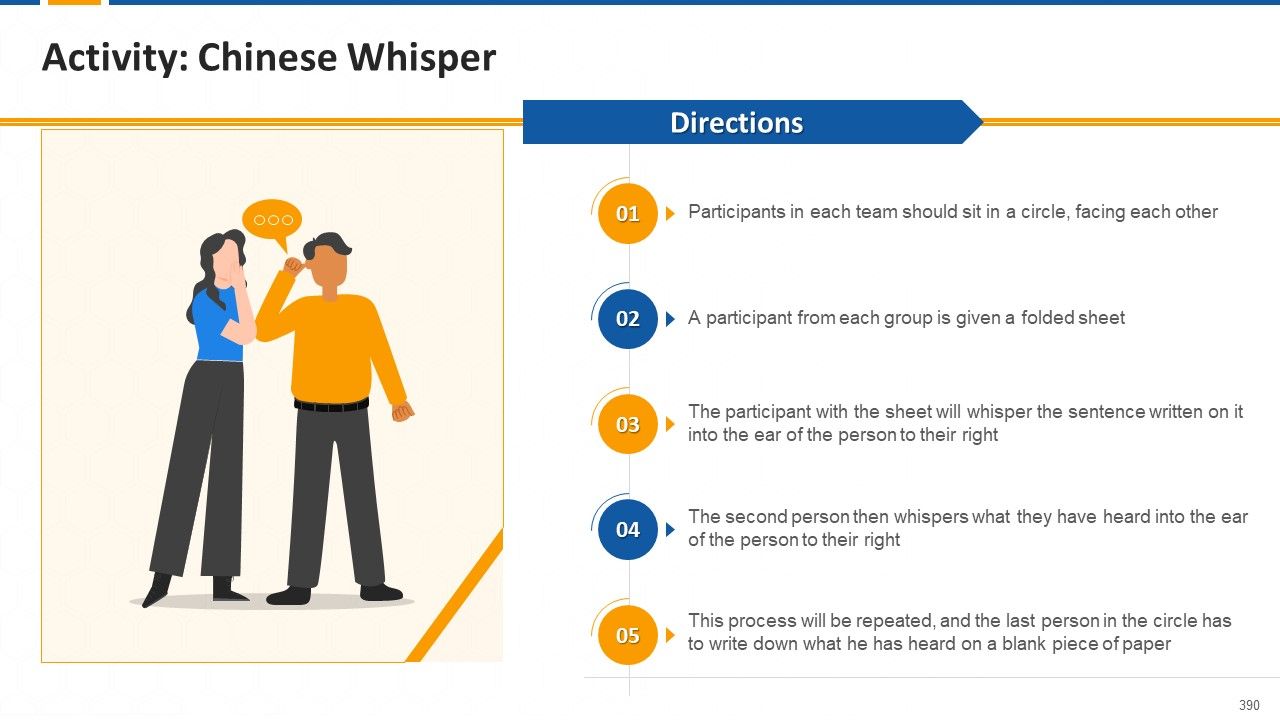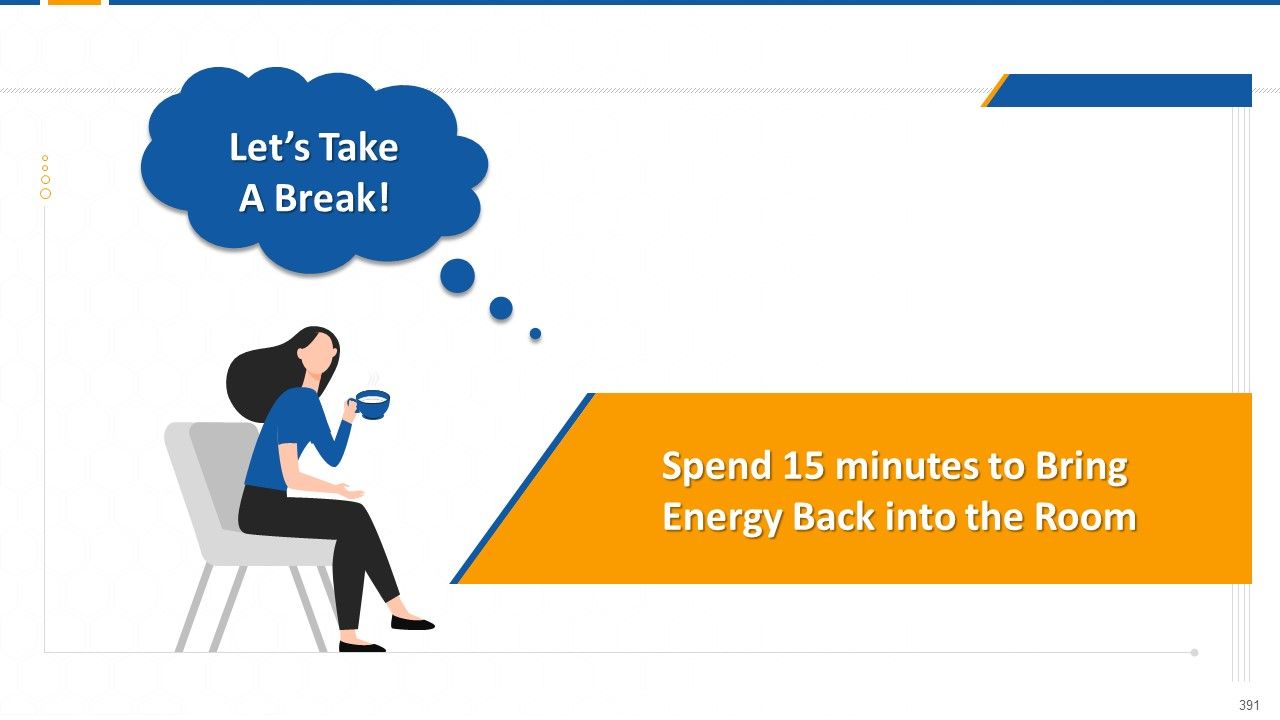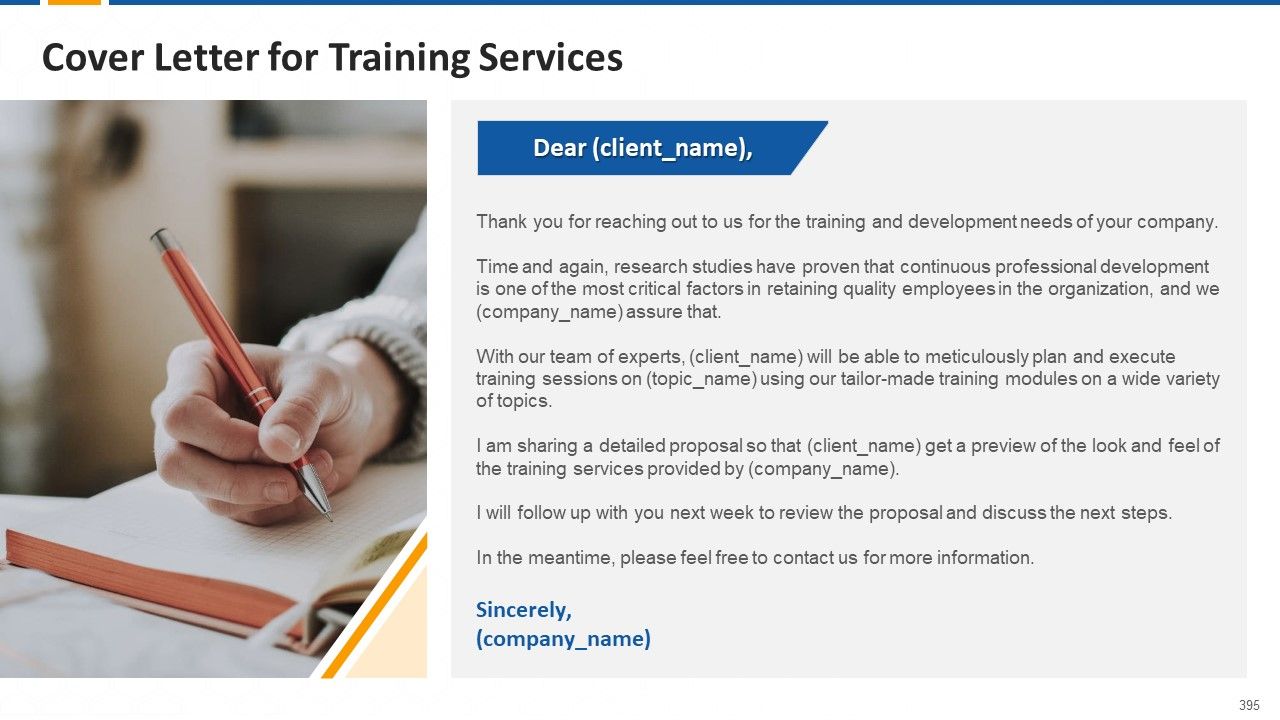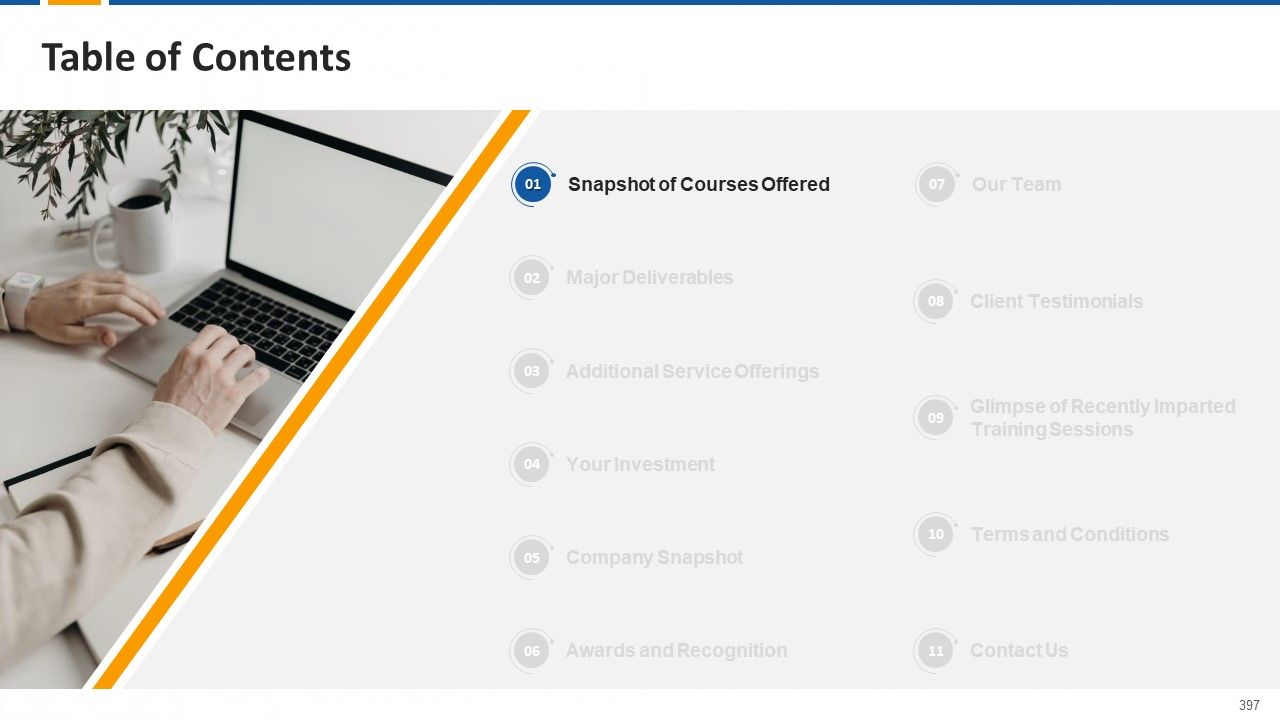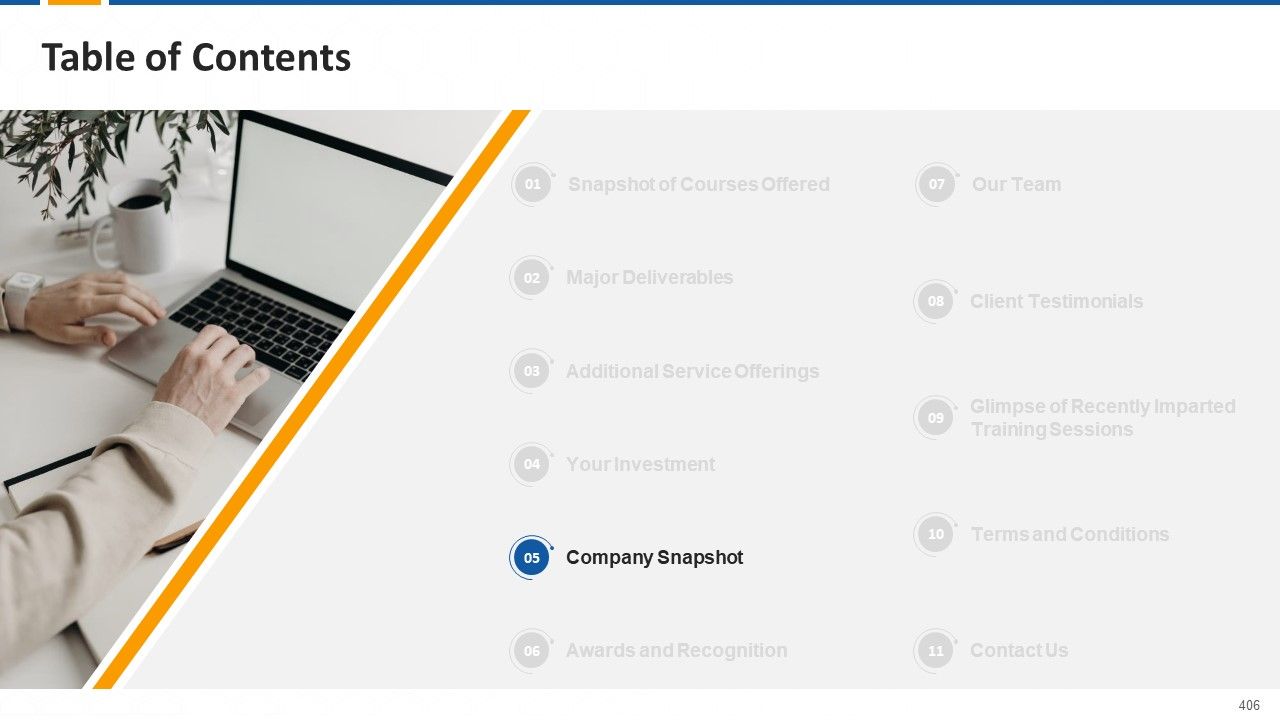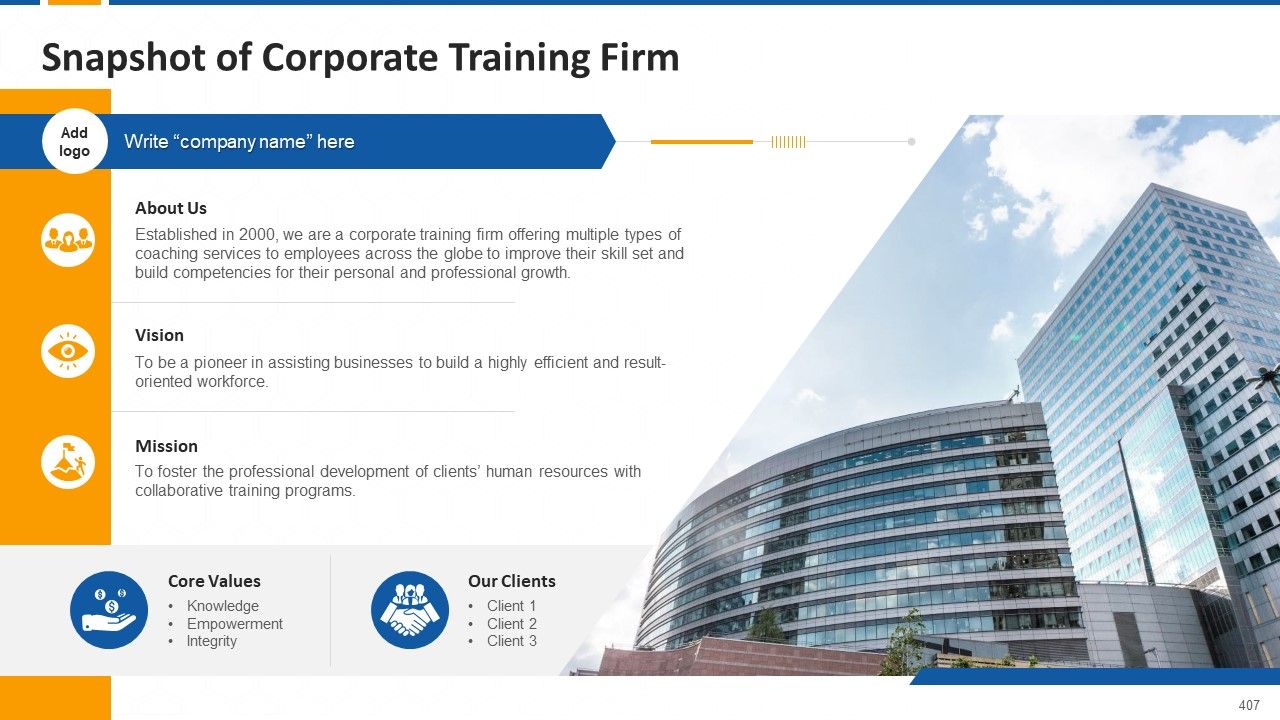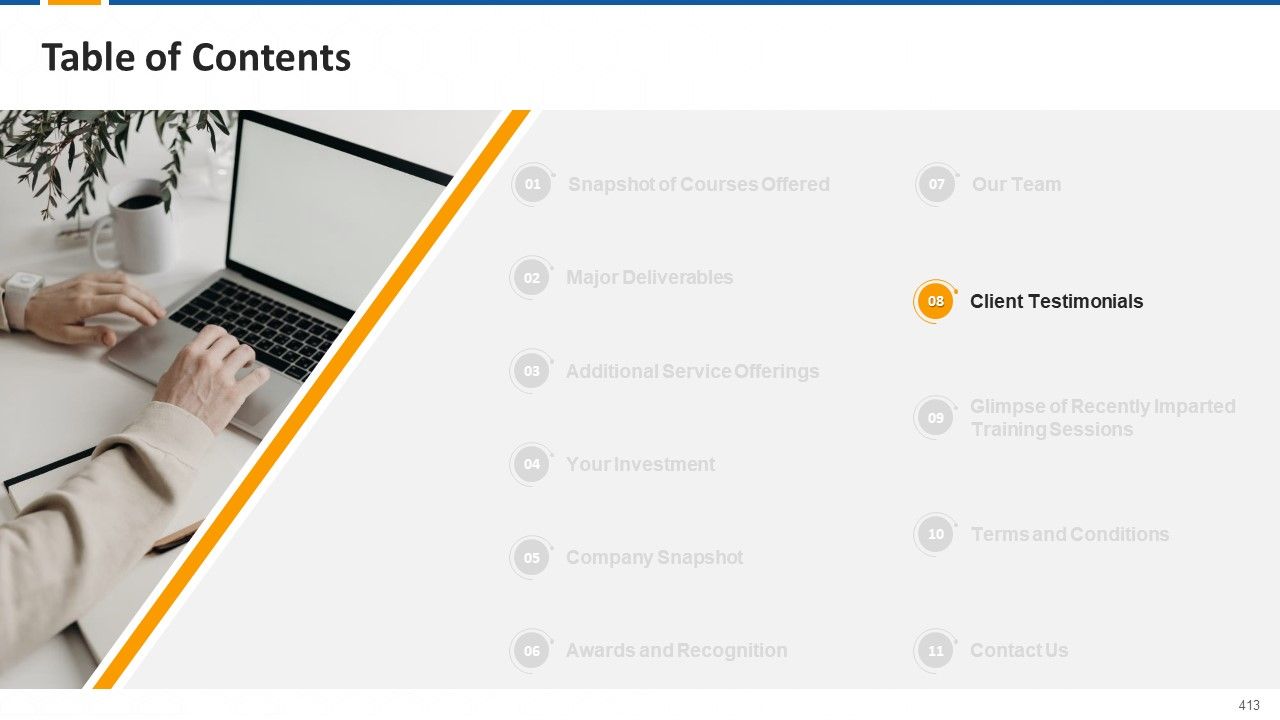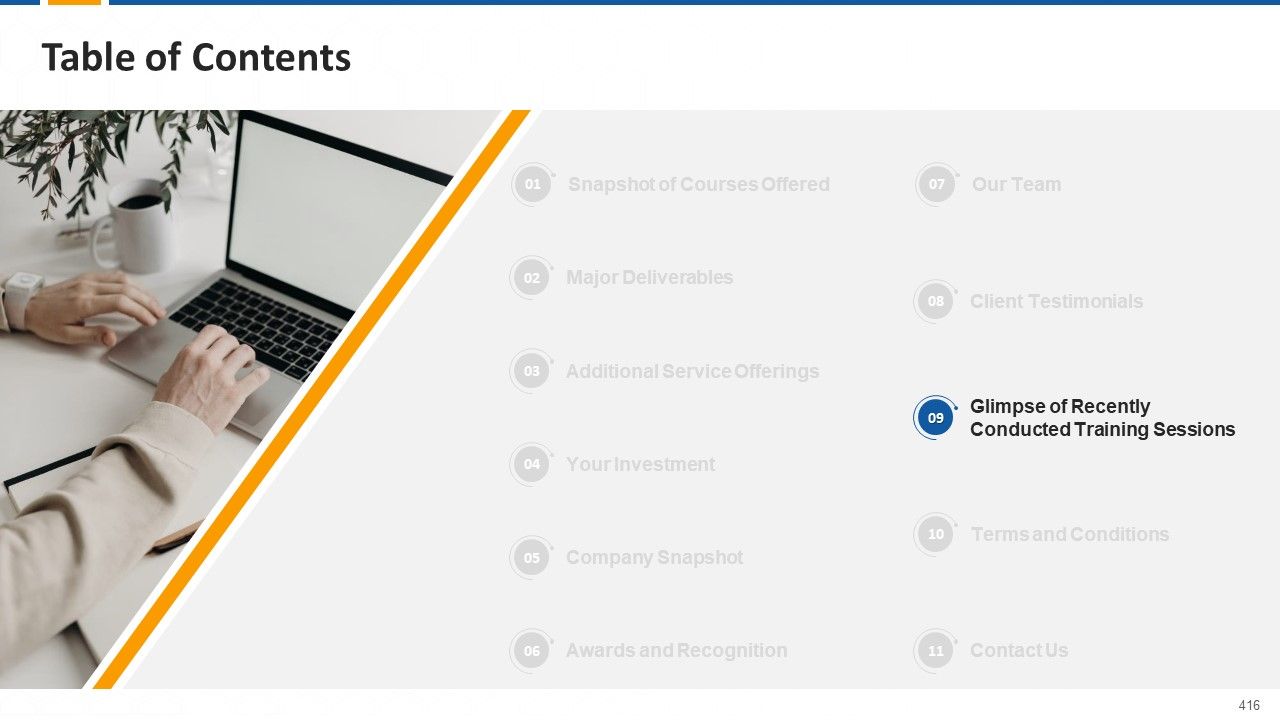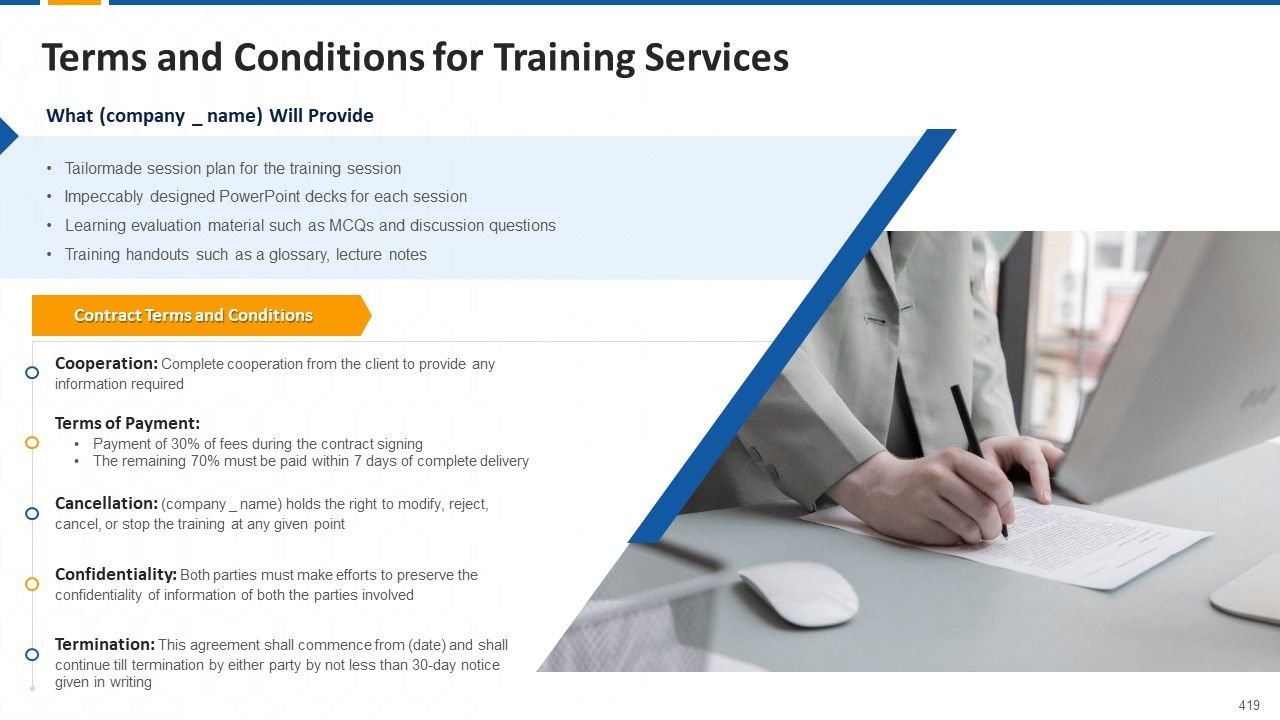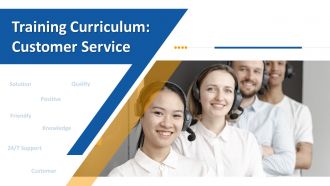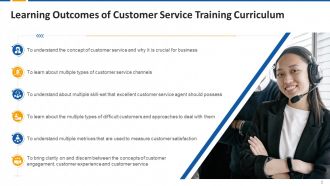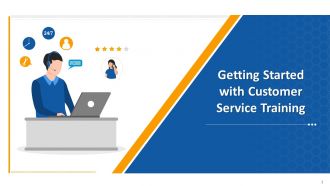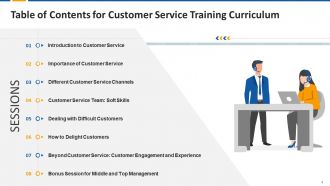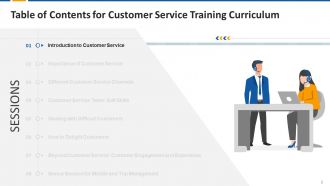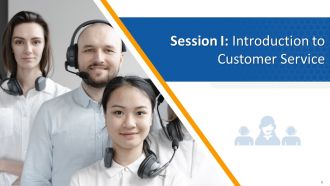Comprehensive Customer Service Training Curriculum Edu PPT
What is it
- EduDecks are professionally-created comprehensive decks that provide complete coverage of the subject under discussion
- These are also innovatively-designed for a powerful learning experience and maximum retention
Who is it for?
- EduDecks are for Trainers who want to add punch and flair to program and leave a lasting impact on their trainees
- They are also for Teachers who want to win over their students with content as well design
Why EduDecks?
- EduDecks provide an A-Z coverage of courses on any topic and covers it in both great depth and wide scope
- These slides are also professionally-designed to deliver a punch to your programs
Why Corporate Trainers love us?
- Content created by Industry experts, active in their fields
- Relevant concepts supplemented with industry case studies
- Visually appealing slides with 100% accurate & relevant data
Why Teachers love us?
- Comprehensive curriculum covering all aspects of the topic
- Relevant examples provided with the topics
- Just download and amaze your audience without making any content changes
What you will get
- 8 Structured Sessions
- 15+ Though Provoking Assignments
- 400+ Professionally Designed Slides
- 40+ Objective Type Questions
- Hands on Activities
- Detailed Instructor Notes
People who downloaded this PowerPoint presentation also viewed the following :
- All Decks , Customer Service , All Modules , All Courses , Edu Tech , Customer Service , Customer Service , Customer Service
Create an Immersive Training Experience
Created by Subject Matter Experts
Professionally Designed Slides
Structured Sessions
Comprehensive Curriculum
Detailed Teaching Notes
Real-Life Case Studies
Assessment Questions
Client Proposal
Complete Curriculum
- Breaking the Ice
- Customer Service Introduction
- What is Customer Service?
- Why is Customer Service Training Important?
- Pillars of Good Customer Service
- Value of a Complaint
- What are Customer Complaints?
- Why is Customer Complaint a Gift?
- Key Takeaways
- Let’s Discuss
- Let’s Test What We Have Learnt
- Activity: Why is the Customer Service Important
- Five Levels of Customer Service
- Importance of Good Customer Service
- Key Customer Service Statistics
- Service Recovery Paradox
- Customer Service is the New Marketing
- Ways to Make Customer Service Part of the Marketing Strategy
- Critical Factors impacting Customer Service Excellence
- Activity: Customer Service Exercise
- Key Takeaways
- Let’s Discuss
- Let’s Test What We Have Learnt
- Different Customer Service Channels
- Chat
- Written
- Voice
- Face to Face
- Major challenges faced by the customer service team and how to fix them?
- HEARD framework for customer service recovery
- Activity: HEARD Role-play
- Key Takeaways
- Let’s Discuss
- Let’s Test What We Have Learnt
- Defining On-Page Optimization
- Activity: Say My Name
- Customer Service Basics and Soft Skills
- Interpersonal Skills
- Clear Communication
- Assertiveness and Directness
- Product Feature and Application Knowledge
- Crisis Management Skills
- Team-building and Camaraderie Skills
- Customer Advocacy and Success Skills
- Conflict Resolution Skills
- Things Customer Service Agents Must Never Say to Customers
- Activity: Customer Violating Terms
- Dos and Don’ts of Attending Customer Complaints
- Activity: ‘T Mobile’ Case
- Golden Rules of Great Customer Service
- Key Takeaways
- Let’s
- Let’s Discuss
- Let’s Test What We Have Learnt
- Activity: Step into the Difficult Customer’s Shoes
- Different Types of Difficult Customers
- Approaches to Deal Different Types of Difficult Customers
- ECA Approach
- Empathy
- Control
- Advocacy
- Managing Negative Customer Service Engagements
- Activity: Handling Different Types of Customers (Role Plays)
- Key Takeaways
- Let’s Test What We Have Learnt
- Activity: Customer Writing Letter to CCE
- What is Customer Delight?
- Framework for Customer Delight
- Difference between Customer Satisfaction and Customer Delight
- Strategies to Ensure Customer Delight
- KPIs to Measure Customer Delight
- Key Takeaways
- Let’s Discuss
- Let’s Test What We Have Learnt
- Customer Engagement:
- What is Customer Engagement and its Significance?
- Customer Service vs Customer Engagement
- Key Strategies to Boost Customer Engagement
- KPIs to Measure Customer Engagement
- Customer Experience:
- What is Customer Experience and its key components?
- Why Positive Customer Experience is Crucial?
- Customer Service vs Customer Experience
- Interlinking of Customer Service and Customer Experience
- Key Takeaways
- Let’s Discuss
- Let’s Test What We Have Learnt
Session I: Strategic Aspects of Delivering Great Customer Service
- Steps To Great Customer Service:
- Step 1: Determine How Customer Support Will Be Delivered
- Step 2: Identify Which Skills of Customer Support Needed to Be Groomed
- Step 3: Develop A Customer Support Plan
- Step 4: Evaluate Customer Support Success
- Building A Customer Service Strategy
- Make customer happiness the end goal across the company
- Identify all customer touchpoints
- Set goals for customer service
- Identify customer service KPIs to monitor
- Build a driven customer service team
- Build a powerful customer service toolkit
- Empower your customer service representatives
- Create a consistent feedback loop
- Case Study: Achieving Customer Service Excellence at MNC Bank
- Key Takeaways
- Let’s Discuss
- Let’s Test What We Have Learnt
Session II: Measuring Customer Satisfaction and NPS
- Measuring Customer Satisfaction:
- Importance of Customer Feedback
- Tools of Collecting Customer Feedback
- Website and web app surveys
- Feedback widget or button
- Email-embedded and link surveys
- Mobile app surveys
- Chat surveys
- Key Takeaways
- Let’s Discuss
- Let’s Test What We Have Learnt
Session III: Customer Service Quality Assurance
- Customer Service Quality Assurance (QA)
- Templates
- Dashboards
- Key Takeaways
- Let’s Discuss
- Let’s Test What We Have Learnt
Session IV: Digital Customer Service (DCS)
- Customer Service 2.0: Upgraded for the Digital Era
- What is digital customer service (DCS)?
- Why do consumers and businesses value digital customer service?
- Differences (Traditional and Digital)
- Drivers for change
- Statistics
- Digital Customer Experience
- Digital Customer Journey
- Focus Areas
- Levels
- The Pillars of an Effective DCS
- Channels
- On-Screen Communication
- On-Screen Collaboration
- On-Screen Automation
- Creating Your DCS Strategy
- Digital-Also Vs. Digital-Only Vs. Digital-First
- Digital Self-Serve Inventory
- Social Listening in Digital Customer Service
- Digital Customer Service: Tips and Tools to Do it Right
- Key Takeaways
- Let’s Discuss
- Let’s Test What We Have Learnt
Sample Instructor Notes
The purpose of this slide is to showcase the importance of customer complaints for business. It contains benefits details such as product or service upgrade, understands customers better, upskills customer support team, improvement of policies and procedures, and positive impact on brand image.
Instructor’s Notes:
The customer complaints are important for business due to the following reasons:
- Product/Service Upgrade: Customer complaints act as a reality check as it helps businesses identify substandard products or services and devise strategies for their improvement
- Understand Customers Better:Complaints help understand customers' expectations better to effectively structure product offerings, to win them back eventually
- Upskills Customer Support Team:If customer complaints are due to the customer support team's improper skills, necessary training can be provided to upskill them
- Customer Satisfaction Enhancement: Customer complaints, if resolved appropriately, helps in improving their satisfaction levels, turning them into loyal customers
- Improvement of Policies and Procedures:Customers' negative feedback also highlights flaws in the company's internal processes and provide suggestions to improve them
- Positive Impact on Brand Image:Resolved customer complaints enhances brand image as customers act as advocates of superior service provided by the organization
This slide highlights the major factors impacting customer service excellence: timeliness, attitude, empathy, ownership, active listening, dependability, expertise, and follow-up.
Instructor’s Notes:
The key factors that should be focused upon to provide exceptional customer service are as follows:
- Timeliness: Every customer wants their problem to be resolved quickly. If a timeline is committed, ensure that the customer issue gets resolved within it
- Attitude: Always offer the best customer service by treating the complaining customer with respect, courtesy, and professionalism
- Empathy: Have an empathetic approach towards the aggressive customer as it will immediately calm them. It will also make it easy to handle them
- Ownership: Take complete ownership of resolving the issue. Even if one can't resolve the issue themself, ensure that the right employee approaches the customer to resolve their concern
- Active Listening: Let the customer speak first, only after that offer a solution to their problem. Remember, listen first, act second
- Expertise: Have complete knowledge about the product. If one doesn't know the answer, don't wait but introduce the customer to the concerned person who can resolve their concern
- Follow up: Always follow up and check with customers if their issue is resolved or they still need assistance
This slide covers details on how to Communicate Delivery Delays and Issues to Customers. Here HEARD stands for Hearing, Empathize, Apologize, Resolve, and Diagnose and it is essential for the Customer Service Recovery team.
Instructor Notes:
- Hear:
- Customers are naturally dissatisfied, if not outright irritated when they learn of a delivery delay or problem. They may have strict timelines or expectations to satisfy. It would help if you allowed them the chance to share their complete uninterrupted story, whether through email, live chat assistance, or phone
- You might include a request for them to contact you if they have any more difficulties during the resolution process in your post-purchase emails
- Empathize:
- Empathy is the starting point for meaningful customer interactions. Empathetic statements, which allow you to put yourself in the shoes of your customers, may help you show more empathy in both email and verbal discussions with them.
- “If I were in your situation, I would feel the same way you do”
- “You are correct; that is a highly irritating/upsetting/frustrating experience”
- Apologize:
- To demonstrate that you care about your clients, this should be one of your critical guiding principles while discussing their delivery concerns. Outline the issues that caused the delivery problem or delay. Be precise and open about what occurred, demonstrate knowledge of your customer's problems, and relate to their emotions
- Resolve:
- It is usually preferable to overcommunicate rather than under-communicate — tell your consumer that you are trying to fix the issue
- Keep them informed at all stages of the delivery process and mark them as a priority follow-up for your customer support employees
- You may even provide something to make up for the delay in your emails once you've offered a genuine apology and begun expressing how you intend to address the problem. It might be a coupon code for their next purchase or a gift
- Diagnose:
- Once you've successfully handled the customer issue, it's time to review your customer service or supply management processes to ensure they're up to date. To get you started, consider the following questions:
- Is your customer service personnel well-versed in communication, empathy, and adaptability?
- Could your customer service representatives have handled a client problem more effectively or quickly?
- Examine your customer service touchpoints – how are they performing?
This slide indicates the basic yet important rules to ensure that customer care executives offer great service to customers. The major rules mentioned are: never leave customers waiting, always delivering what is promised, listening to customers, deal with complaints, be helpful, even if there is no immediate profit, and upskill staff.
Instructor’s Notes:
- Never Leave Customers Hanging: Nobody likes being left waiting. So if a customer calls with a complaint, always answer
- Always Deliver What is Promised: Reliability is one of the most important factors to foster good relationships. So avoid making fake promises to customers that can't be kept
- Listen to Customers: Allow the customer to speak. Show interest in conversation by giving the appropriate responses. Before offering a solution, summarize the problem to the customer
- Deal With Complaints: Properly deal with the complaints as they are opportunities in disguise. Use them to improve product or service offerings
- Be Helpful, Even If There Is No Immediate Profit: Be forthcoming to resolve a customer complaint as a happy customer eventually becomes a passive brand advocate. Also, the focus must be to make loyal customers, not making only sales
- Upskill Staff: Impart training to customer support staff to make them helpful, courteous, and knowledgeable
This slide highlights the major tools to provide customer support such as phone, messaging, email, self-service, social media apps, and live chat.
Instructor’s Notes:
The tools that can be used to connect with the customers are as follows:
- Phone: This is the most widely used method to interact with customers, as talking over the phone adds the human touch to the conversation
- Messaging: This method is also gaining popularity in various forms such as direct text messaging or messaging apps (WhatsApp) as it is a quick and easy way to resolve customer complaints
- Email: This method is generally preferred to interact with corporate clients to resolve complaints as it is the most formal amongst all and can be used as a proof in case of any issue escalation
- Self-Service: More and more customers are adopting this approach to get instant resolution and avoid wait time
- Social Media Apps: Many customers also use social media platforms such as Twitter to seek customer service support
- Live Chat: To provide 24*7 hours customer support, live chat is the best option. It can be managed by humans or chatbots
This slide covers method of collecting customers feedbacks such as website and web app surveys. It also includes website and web app surveys applicability, pros and cons.
Instructor’s Notes:
Pros:
- Specific website visits and web app users should be targeted
- Without the aid of developers, install once and survey forever
- Create a user-friendly design with personalized colors, logos, fonts, and CSS
- Subtle and simple to respond
Cons:
- Due to limited respondent availability, you must first attract users to your website
- It might be regarded as disruptive
FAQs
We provide training decks on a wide variety of business and technical topics such as Diversity & Inclusion, Customer Service, Search Engine Optimization, Blockchain Technology, and many more. These are ready-to-present decks that can be downloaded and presented in their current form. These decks are carefully created by industry experts, designed by professionals to deliver a power packed training session.
We want our training decks to evoke curiosity and inspire passion for learning. Each training deck consists of multiple sessions with impeccably designed slides to explain concepts in-depth, key takeaways to summarize sessions, discussions, and multiple-choice questions to assess trainees’ learning. The deck also contains activities and memes to break the monotony and make the training more interactive. Each training deck comes with an assessment form and editable proposal to help pitch your training to clients with success.
It depends on the trainer's content delivery pace, but each deck is created to ensure that training content is for a minimum of 16 hours.
Yes. A significant segment of our customers are professional mentors, coaches and teachers. You can create presentations with our content and distribute these to your trainees. The only caveat is that you cannot share your subscription to our content with others; the license is not transferable. Also, you cannot resell SlideTeam content to others.
Each slide is 100% editable in PowerPoint. Every element of the slide – text, icons, images, vectors, color scheme, etc. can be modified to build an effective PowerPoint presentation. Simply DOWNLOAD, EDIT, and PRESENT!
All PPT slides are compatible with PowerPoint 2007 and above. Some diagrams will not show up correctly with older versions of PowerPoint, like PowerPoint 2003 or lower, because of rendering issues. Yes, they work with PowerPoint for MAC, and decks are compatible with Google Slides too.
Absolutely yes! Our decks are yours to keep and build upon even after your subscription expires. You will not be able to download any additional decks once your subscription expires, but the ones you've downloaded are yours to keep forever.
Our entire website is HTTPS secure, and our payment system is managed by PayPal and Stripe, two of the world's leaders in credit card payment systems and very respected companies in online payments. This makes our systems 100% secure. We do not store or have access to any credit card information ourselves. We direct you to these third-party secure sites with 100% secure SSL connections where you can safely purchase a subscription and then direct you back to our site to download products.
You are allowed to log in and download content from 3 computers. Our website keeps track of login IP addresses, MAC Address Usage, and Browser and Computer Operating System fingerprinting, and you will not be able to log in from more than three computers.

2 Item(s)
-
by Clyde Sullivan
4/580%I am so thankful for all of the templates I've found on your site. They have saved me hours every week and helped make my presentations come alive. Keep up with these amazing product releases!
-
by John Walker
4/580%I discovered this website through a google search, the services matched my needs perfectly and the pricing was very reasonable. I was thrilled with the product and the customer service. I will definitely use their slides again for my presentations and recommend them to other colleagues.
2 Item(s)








